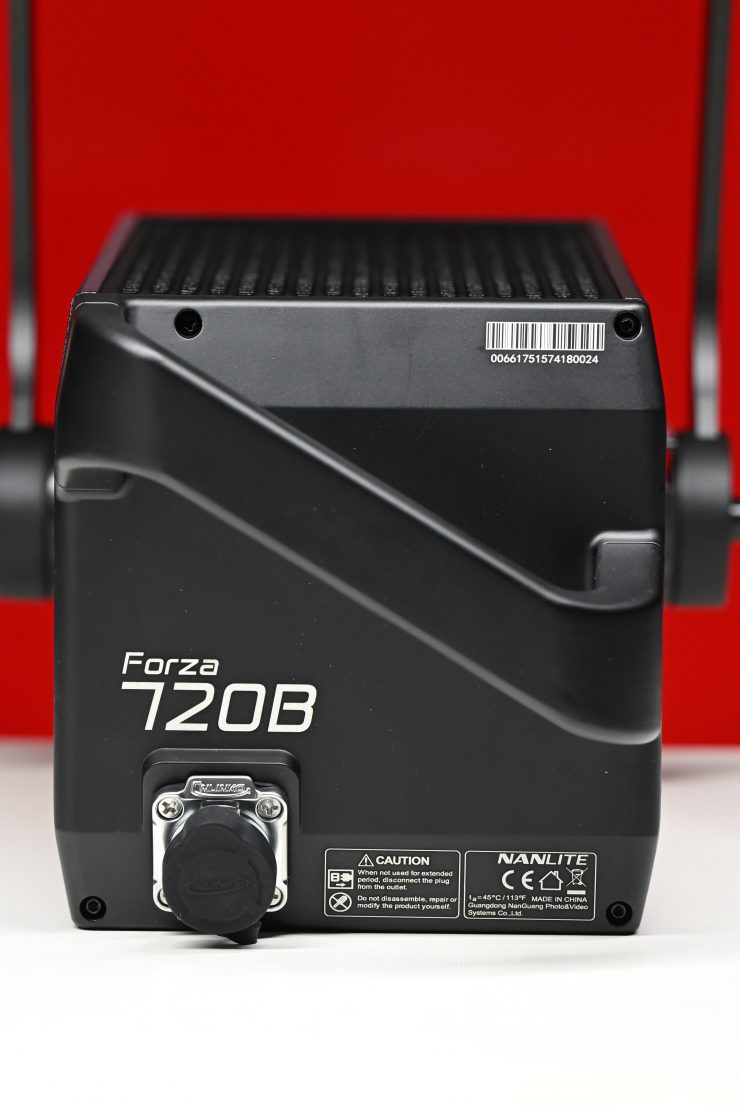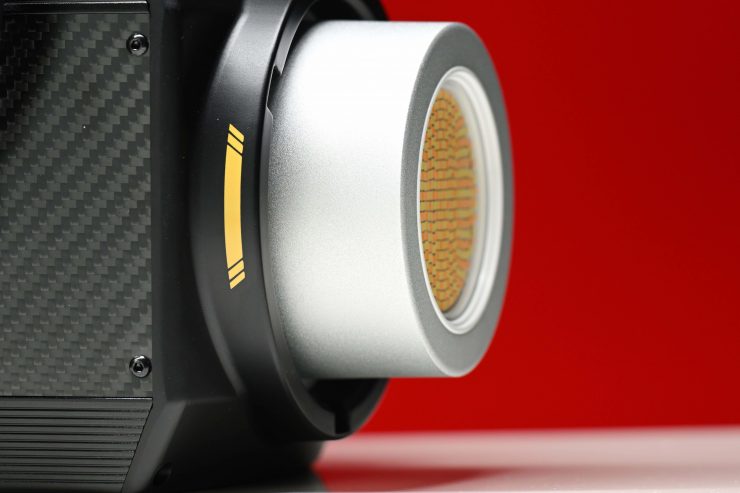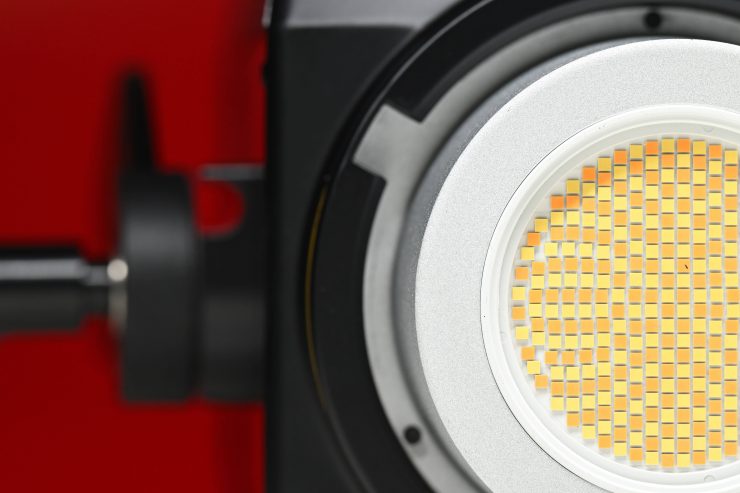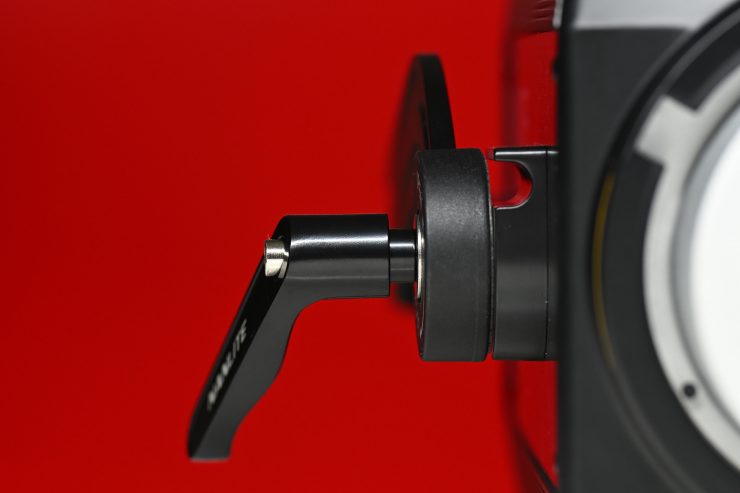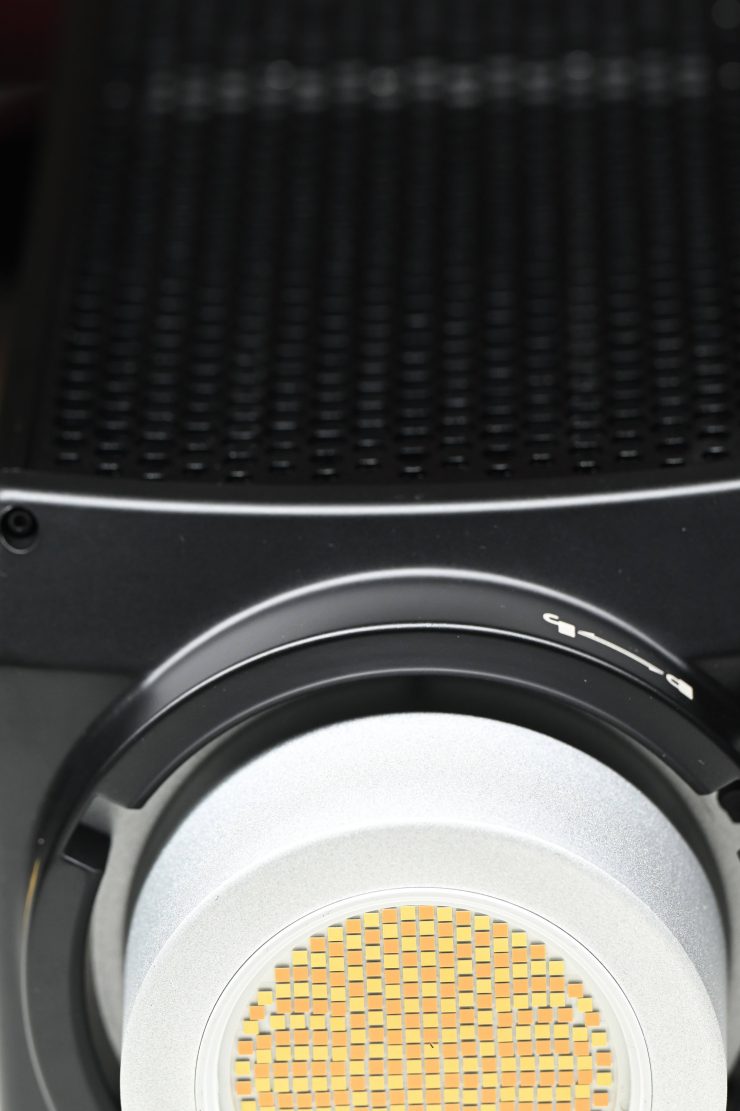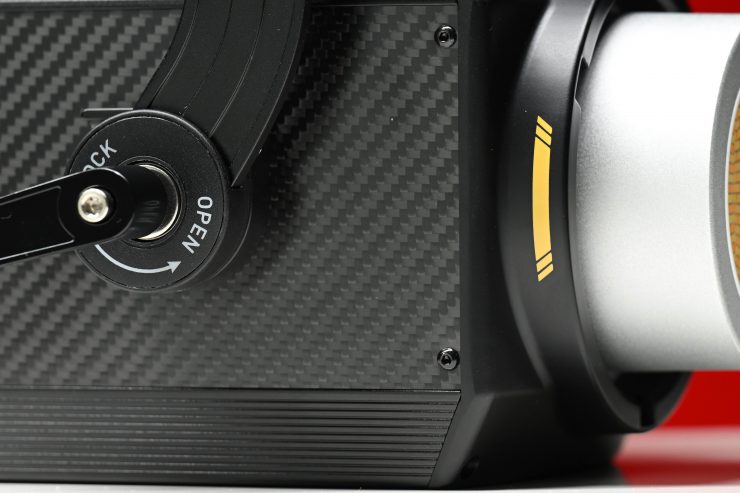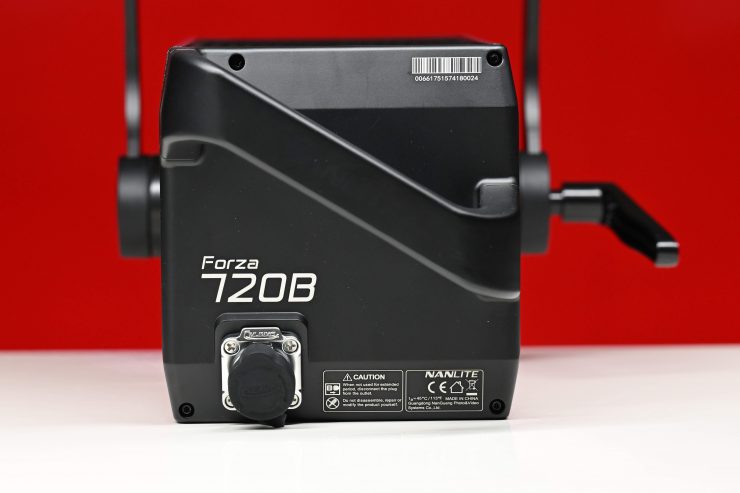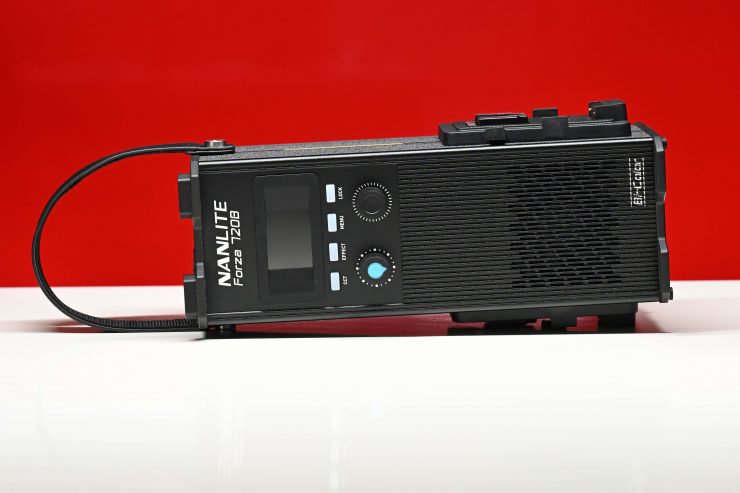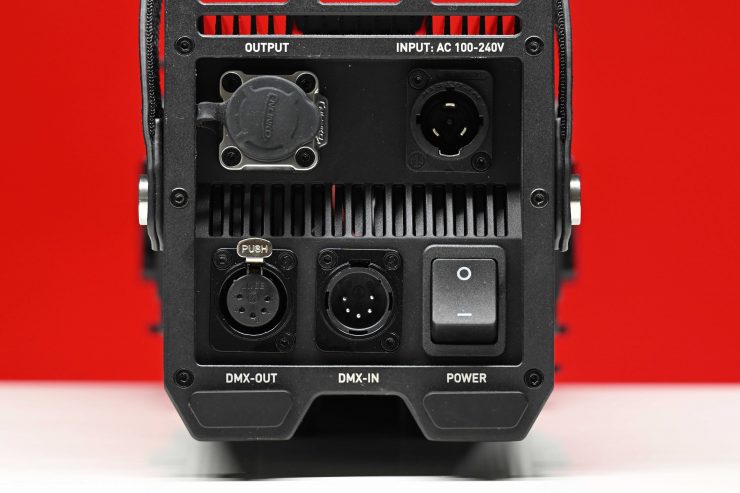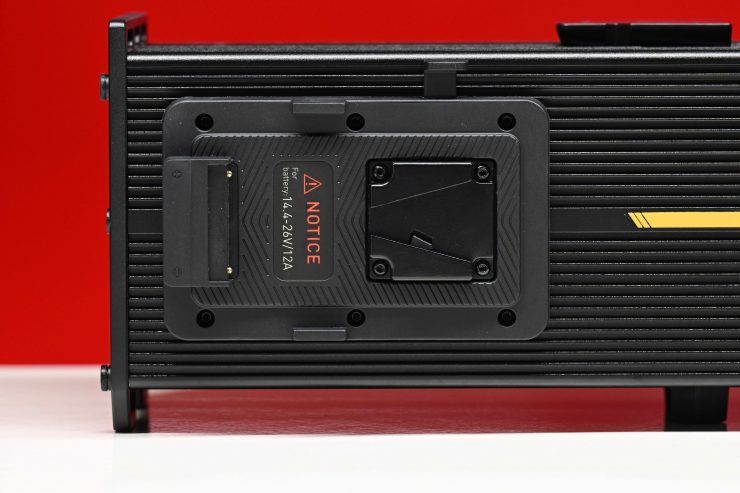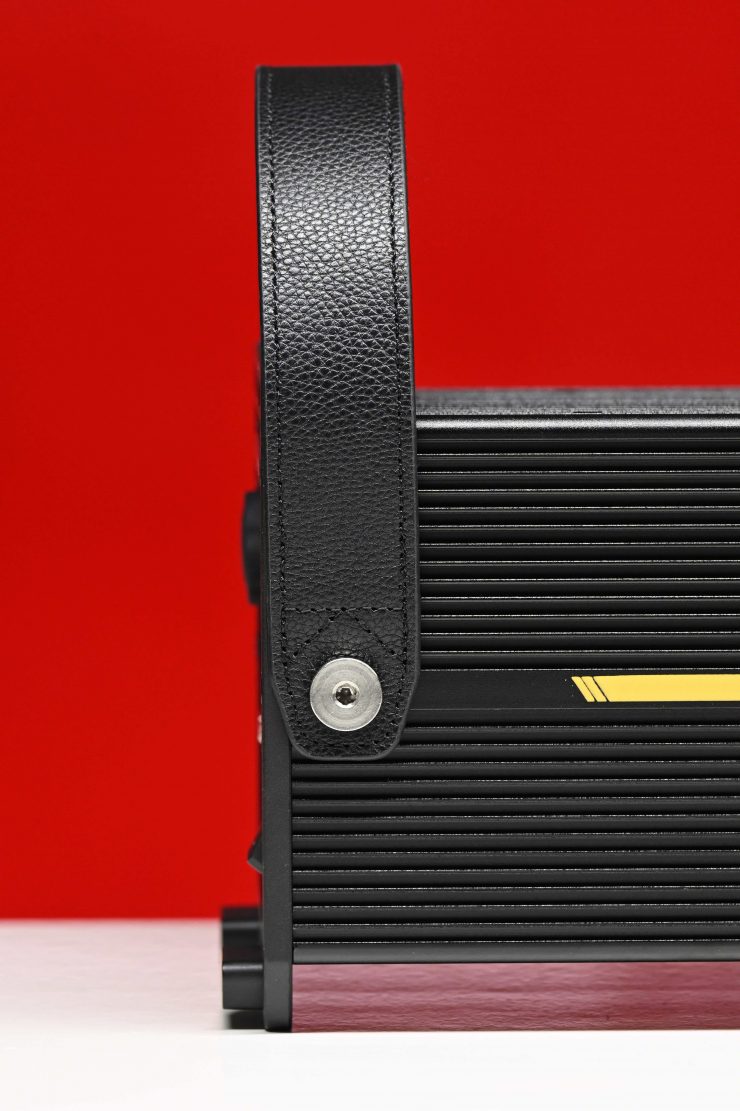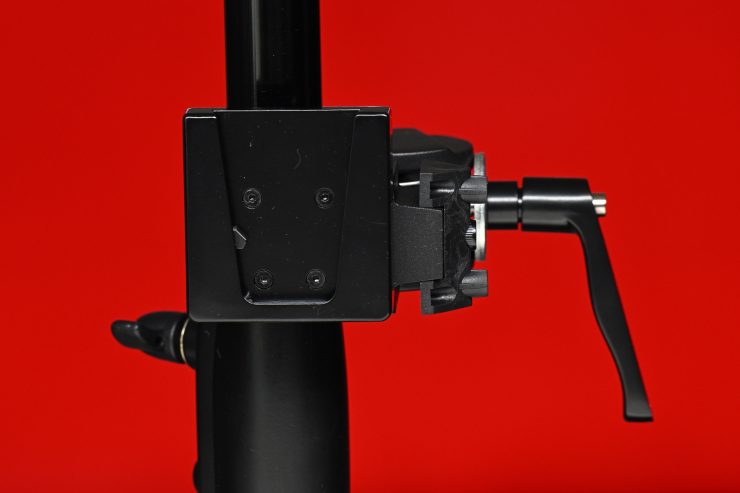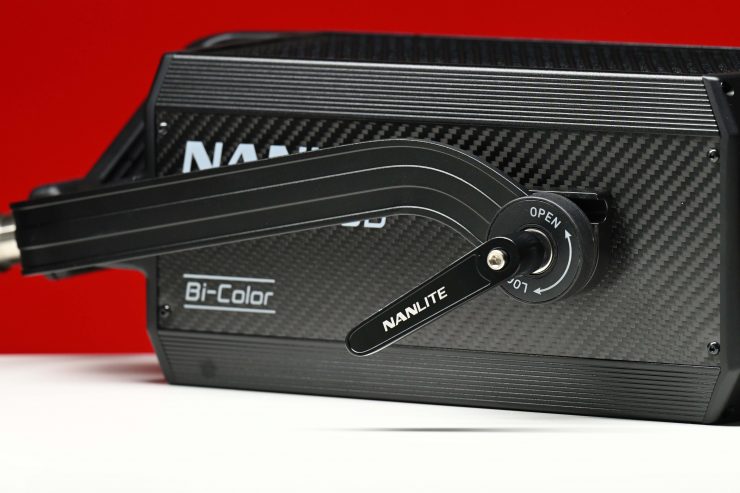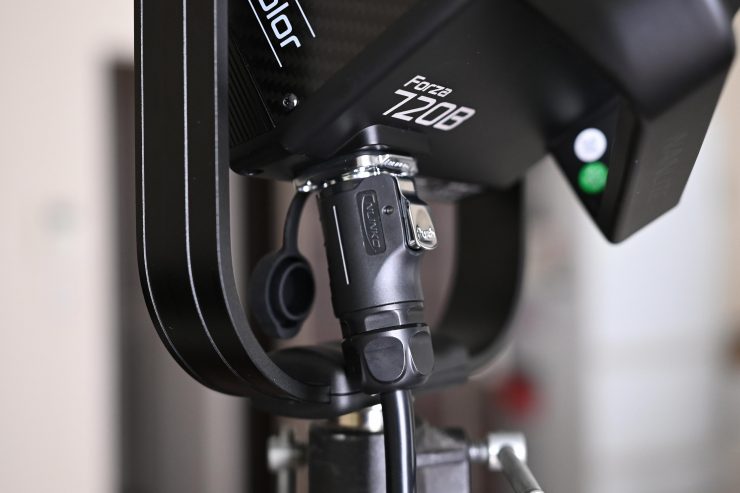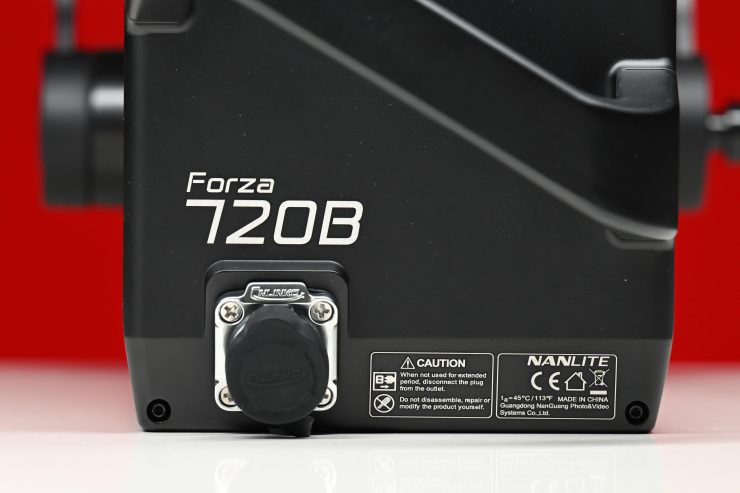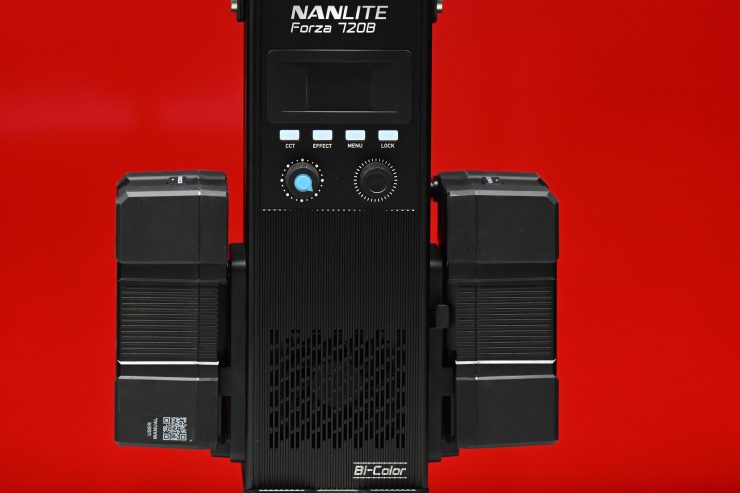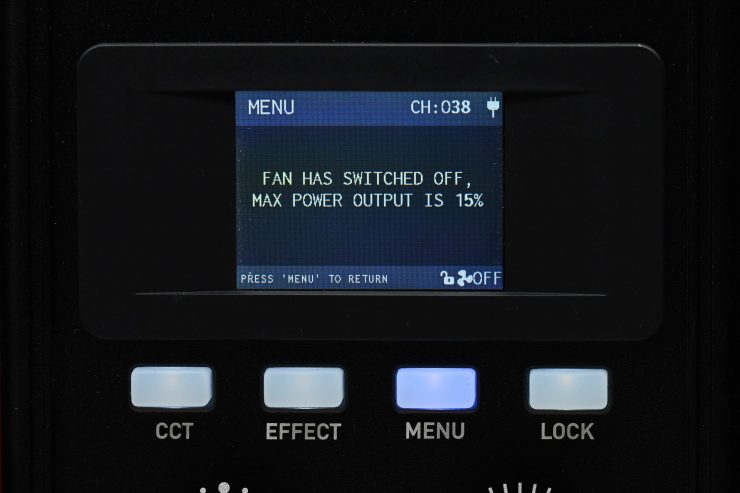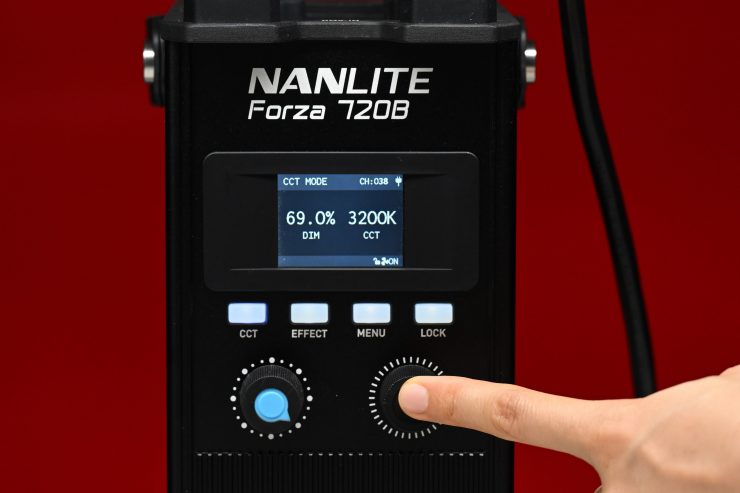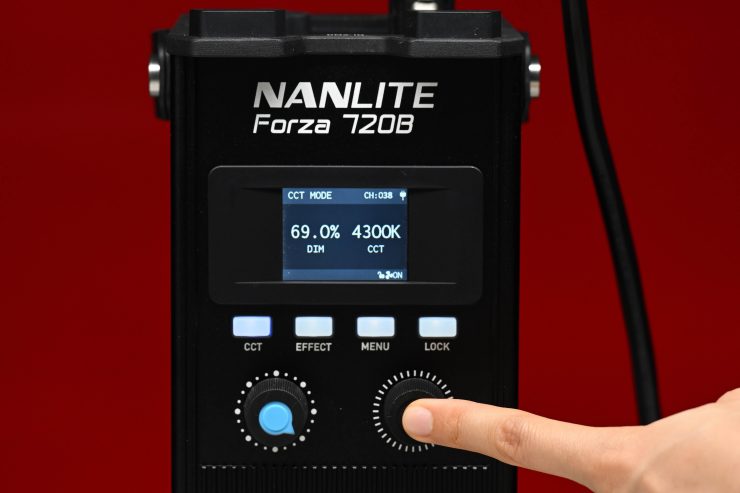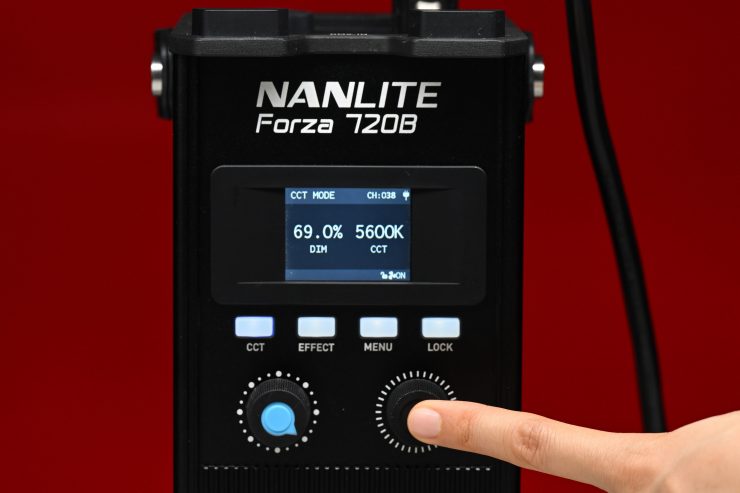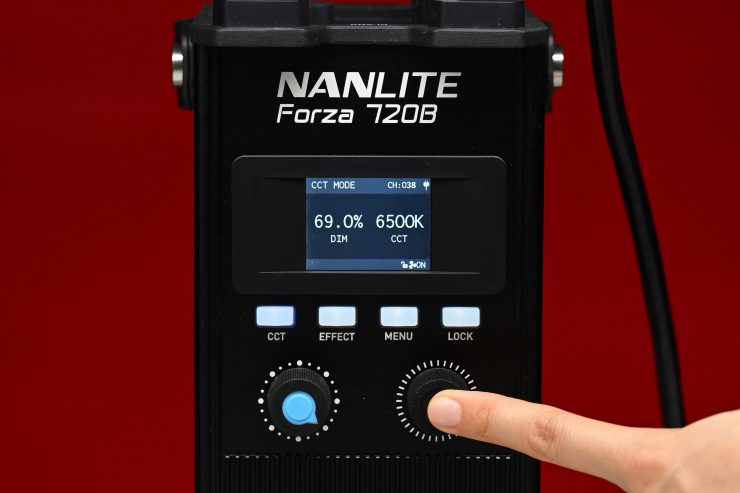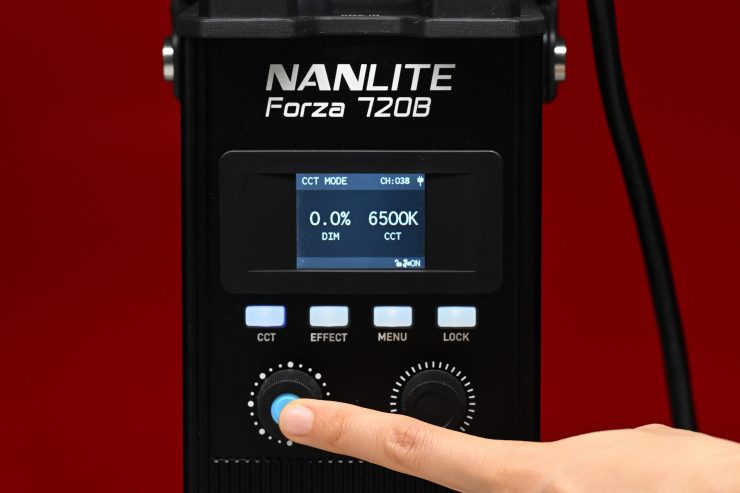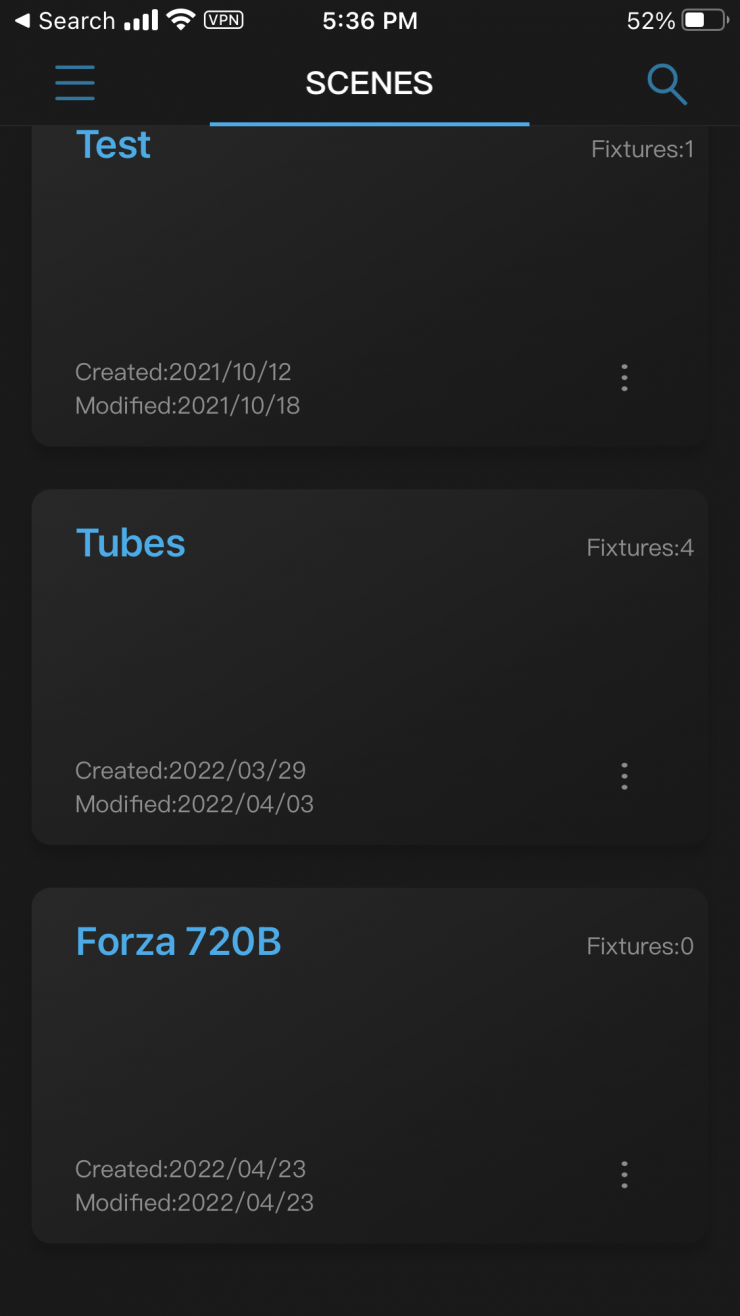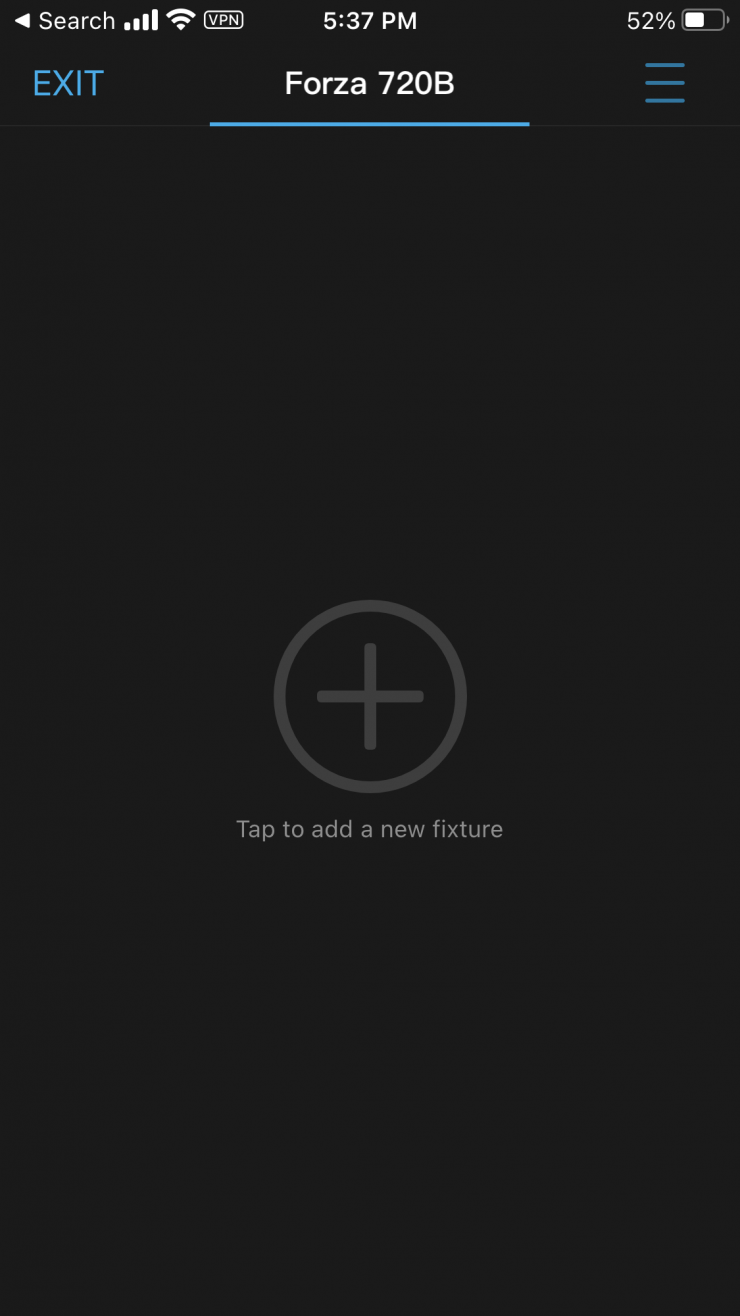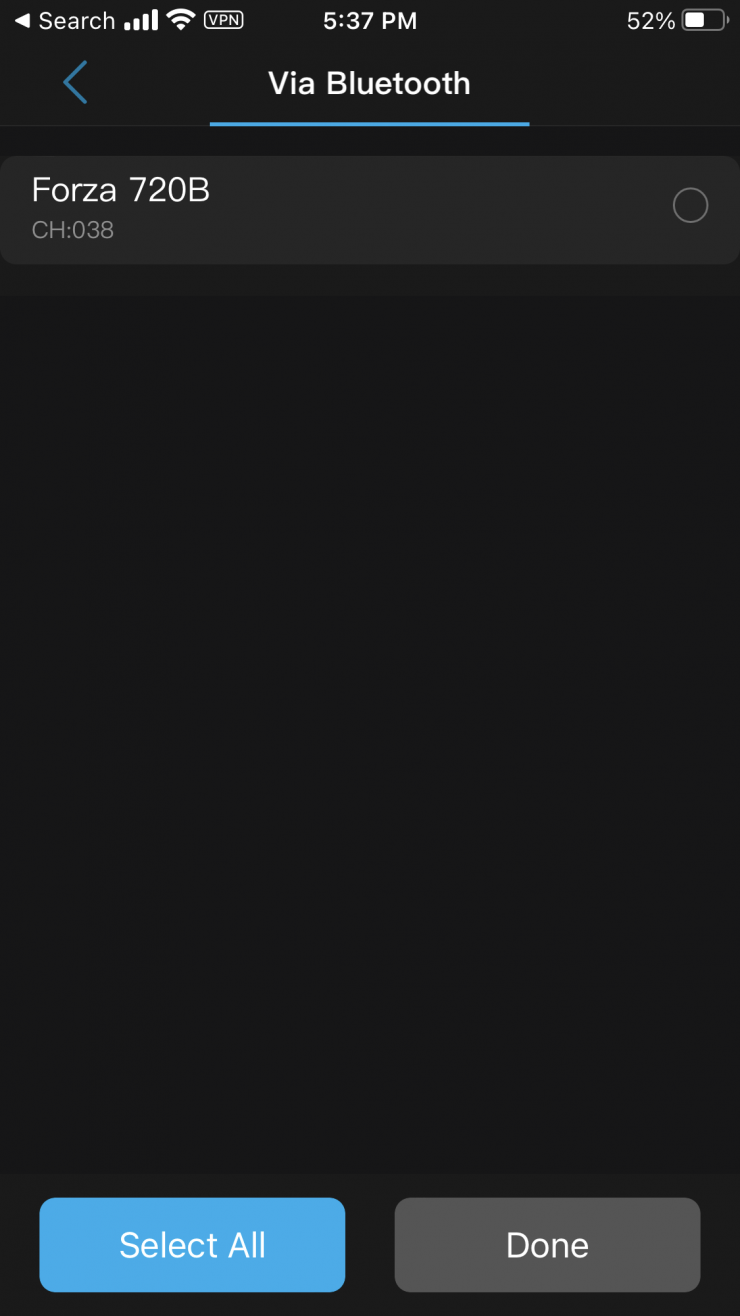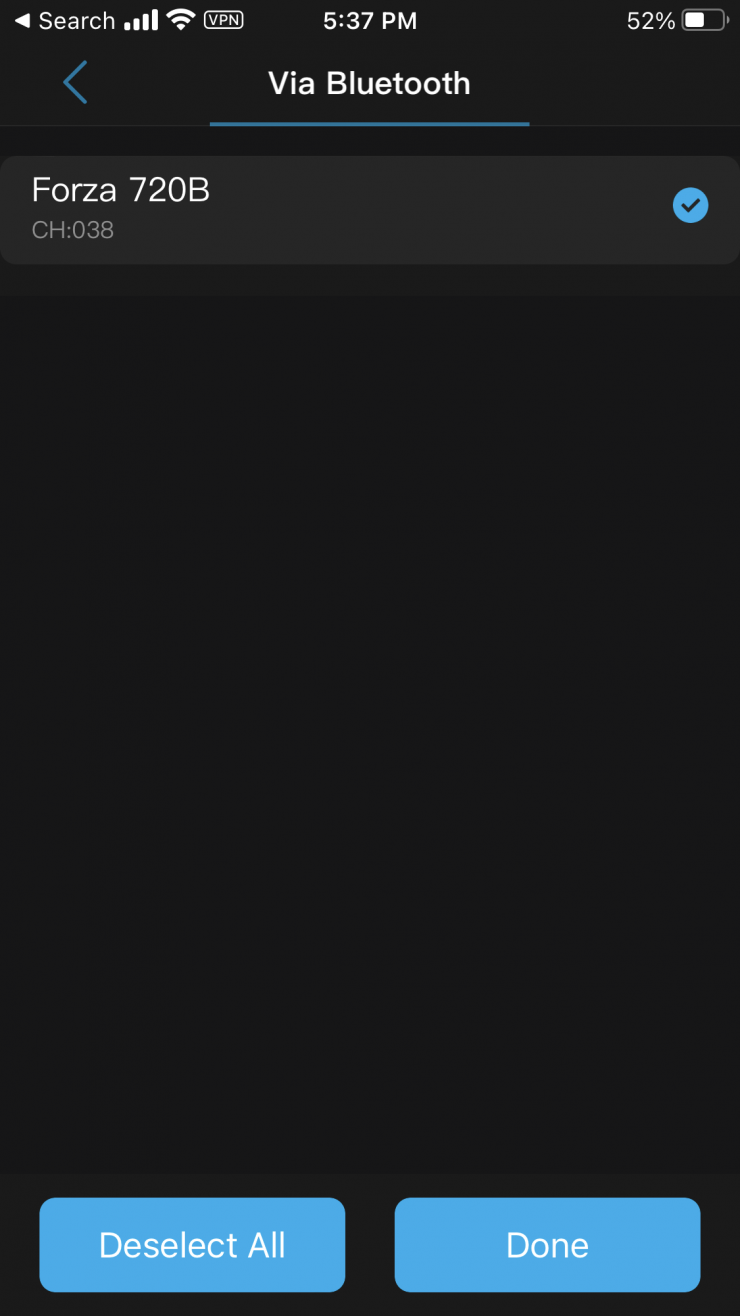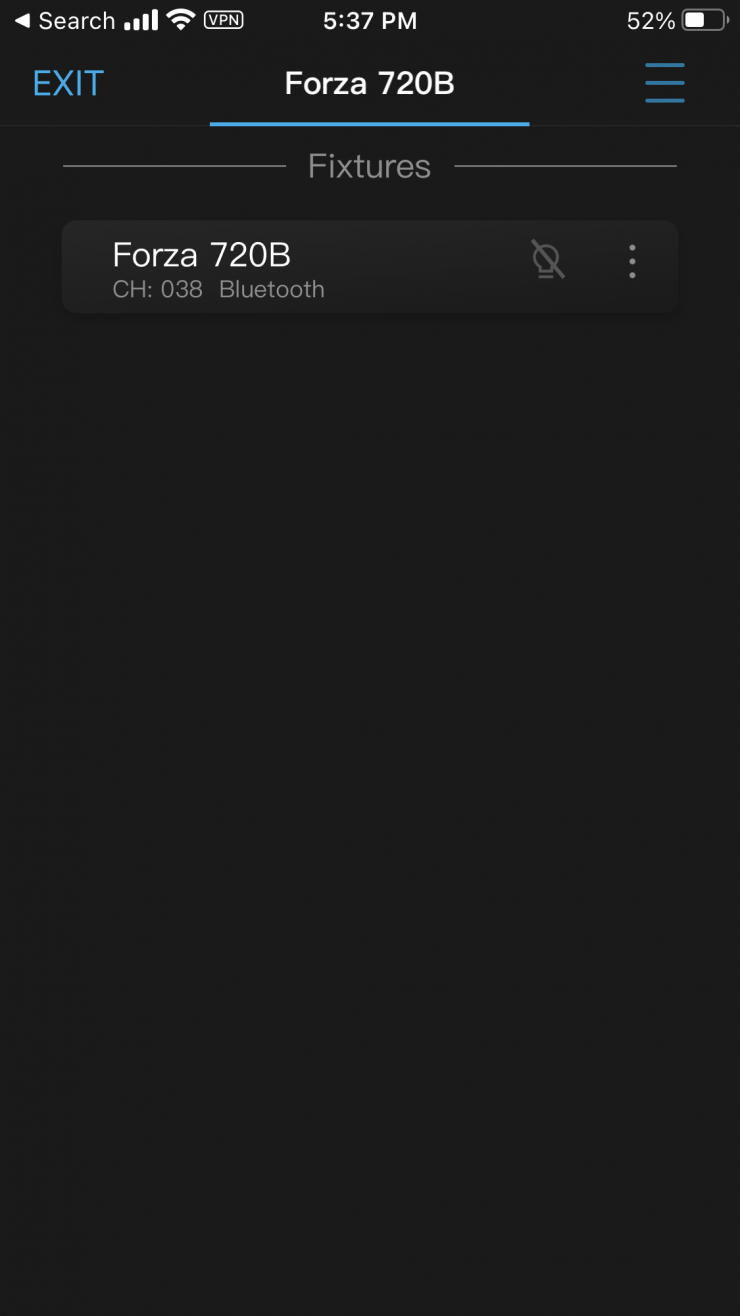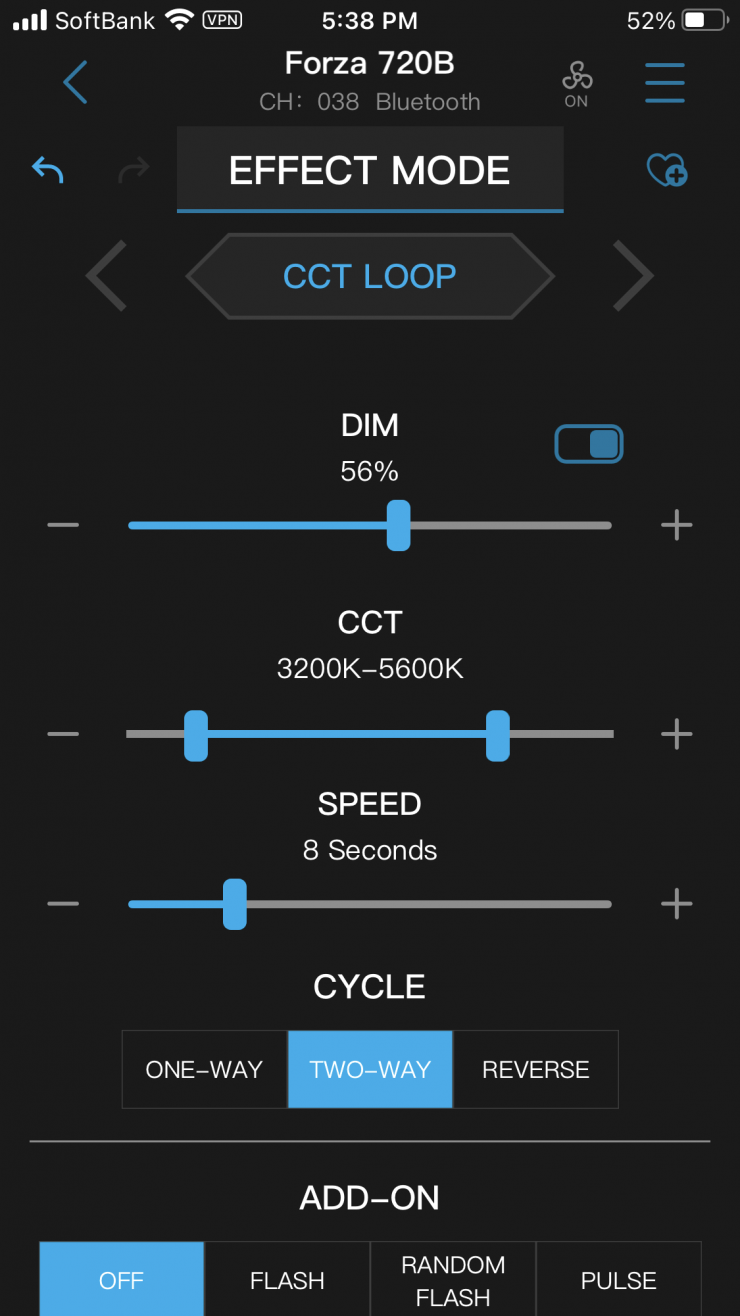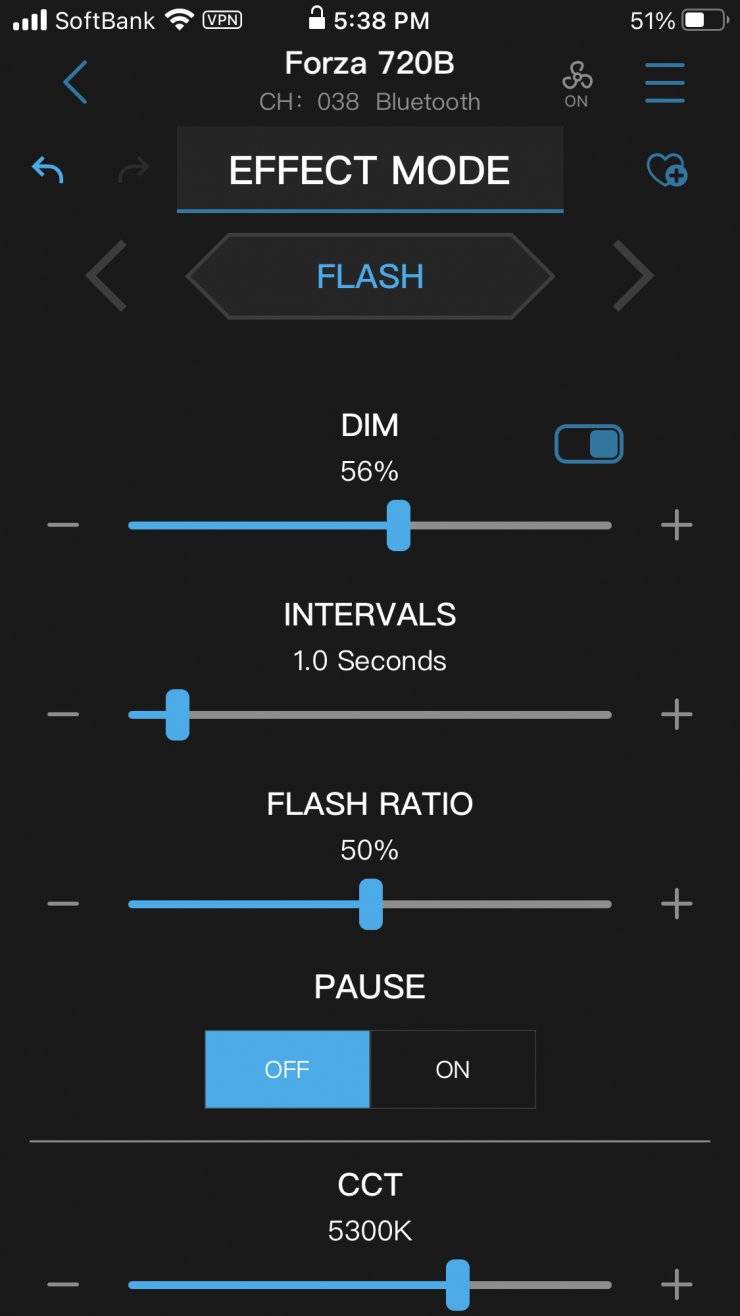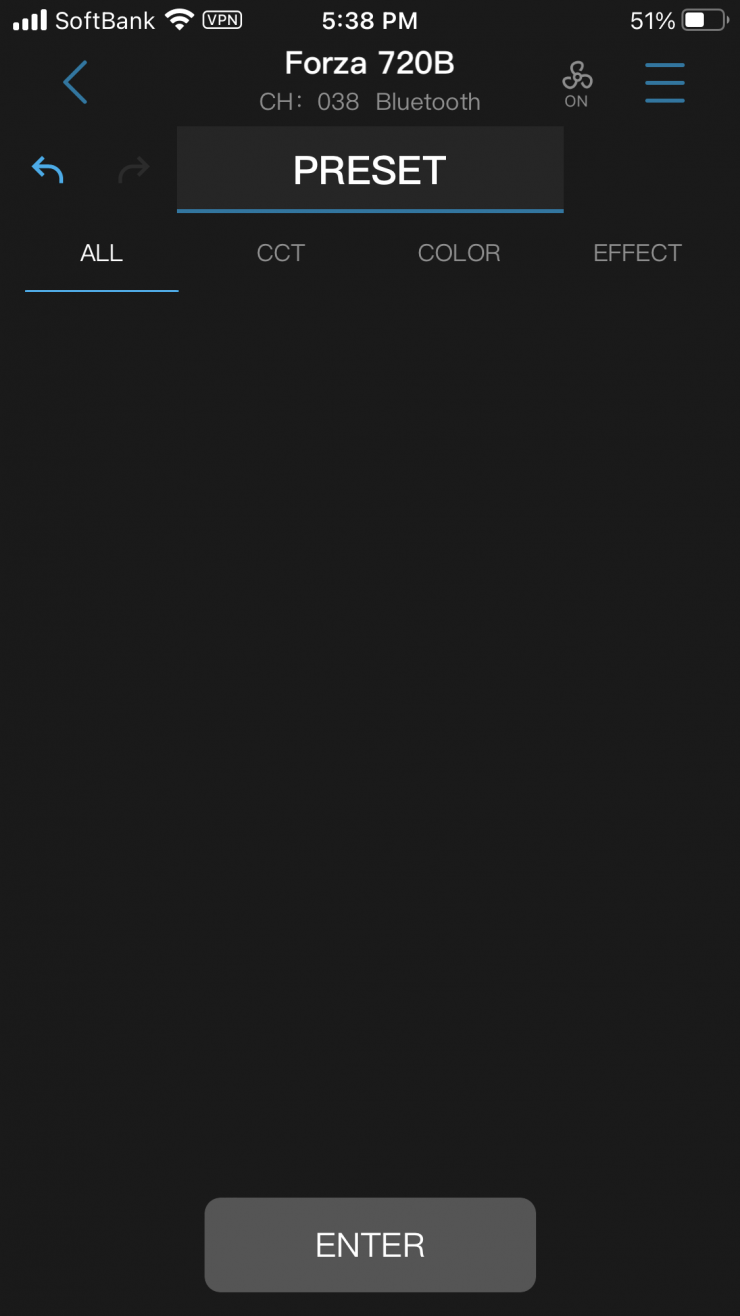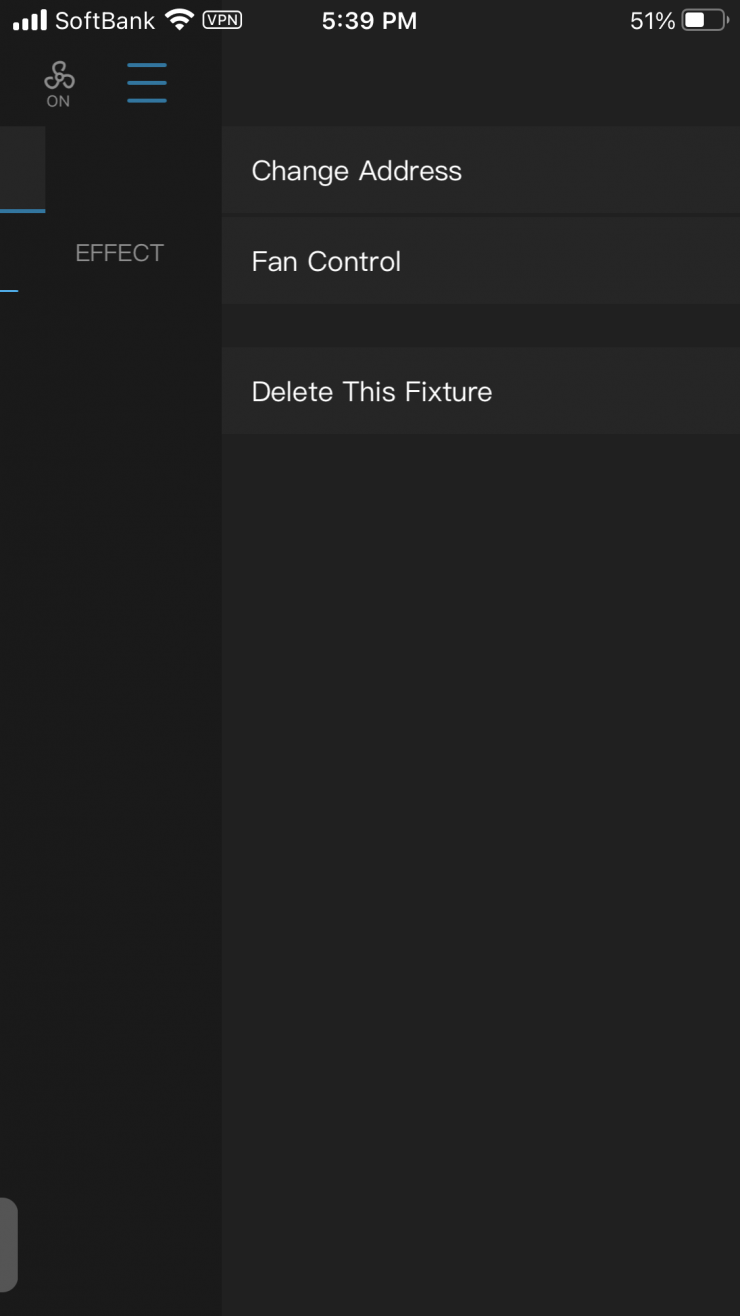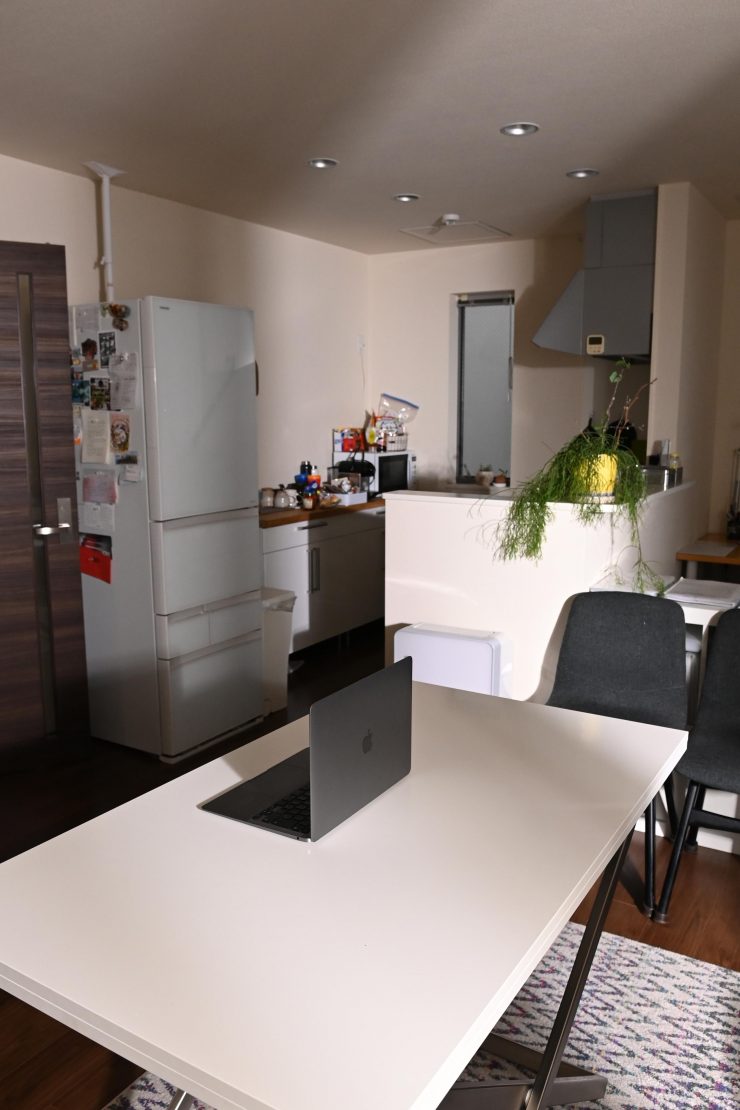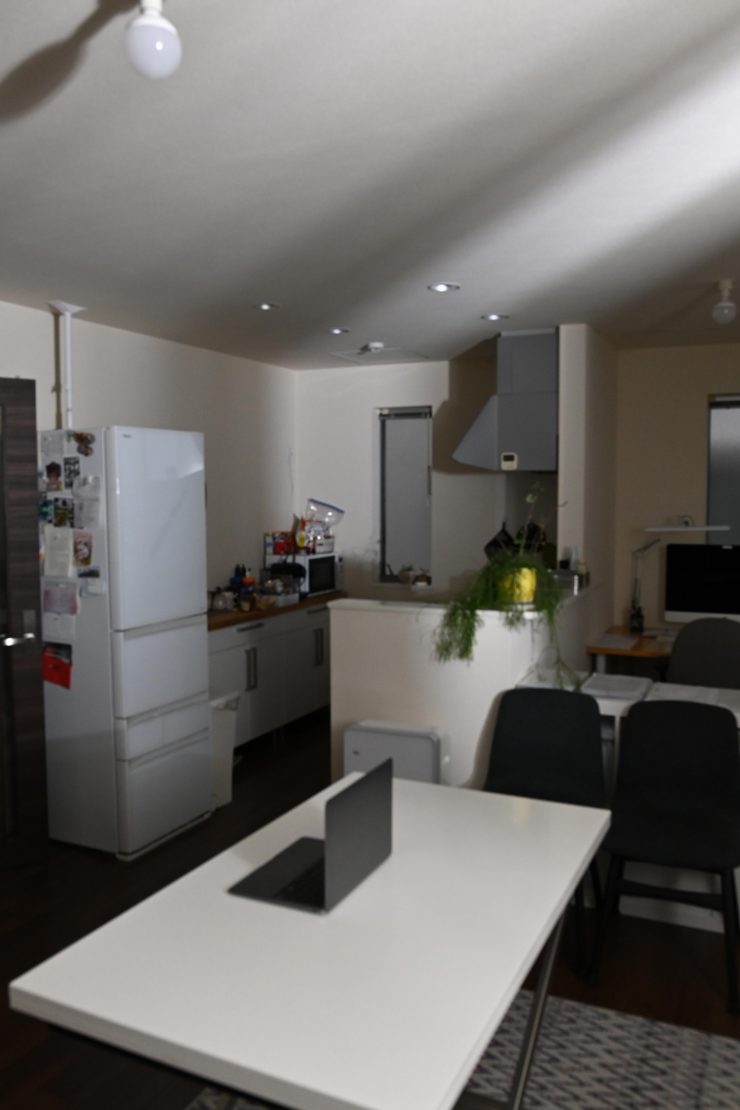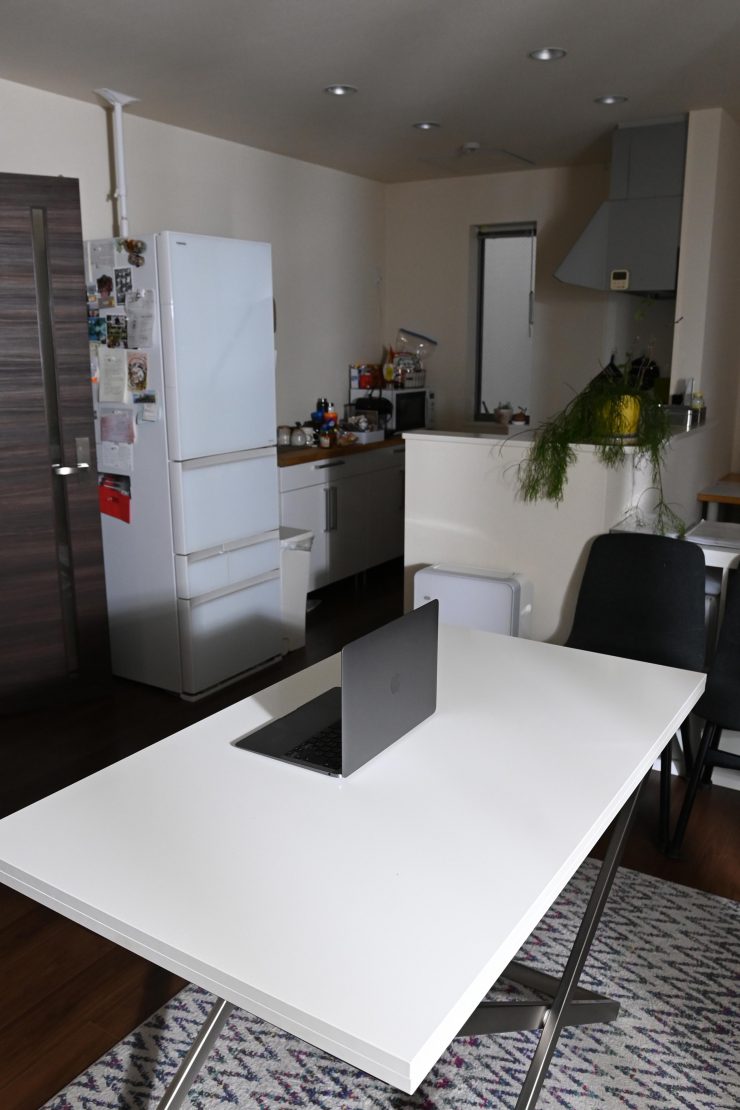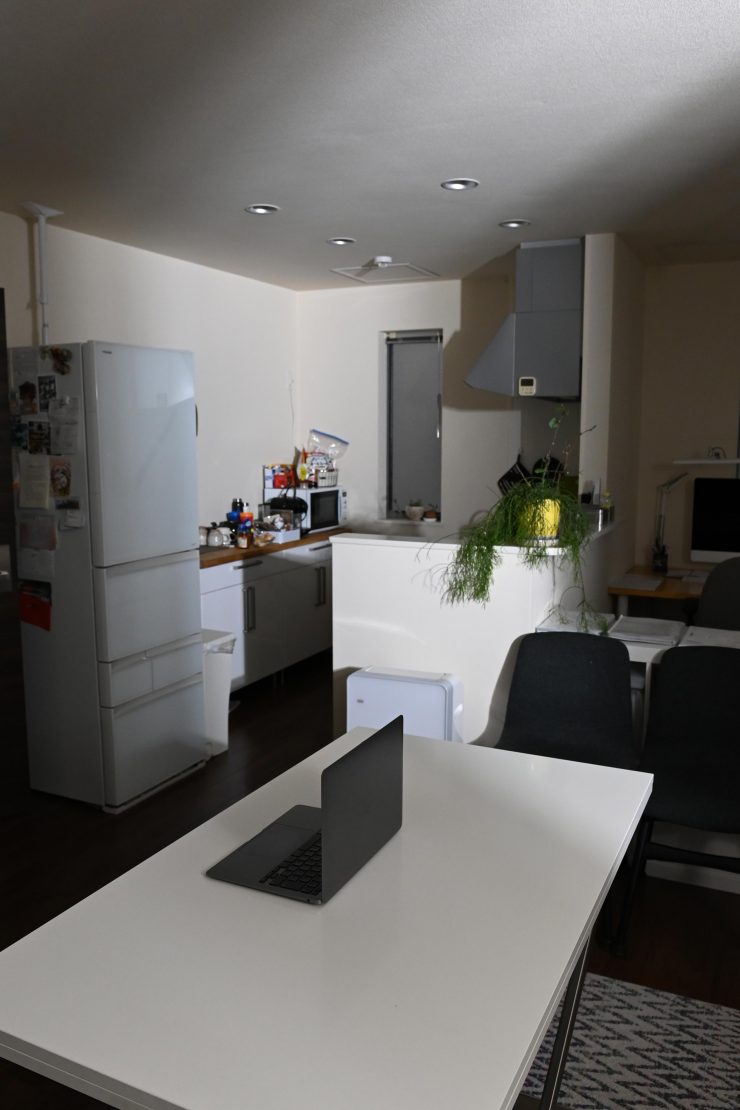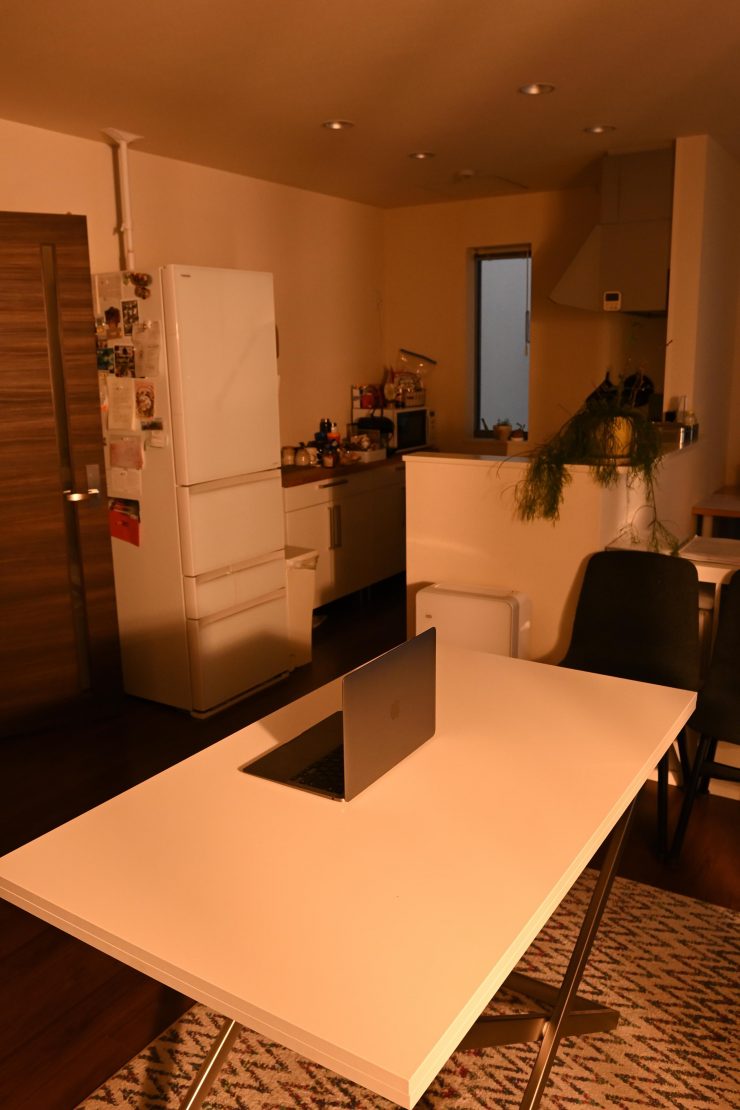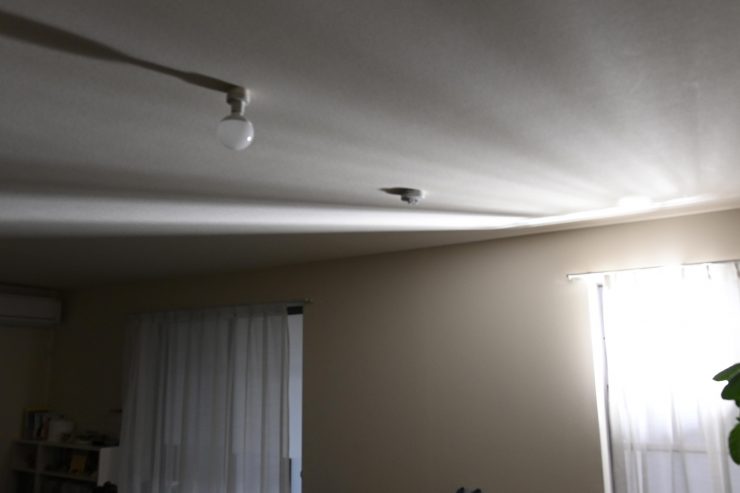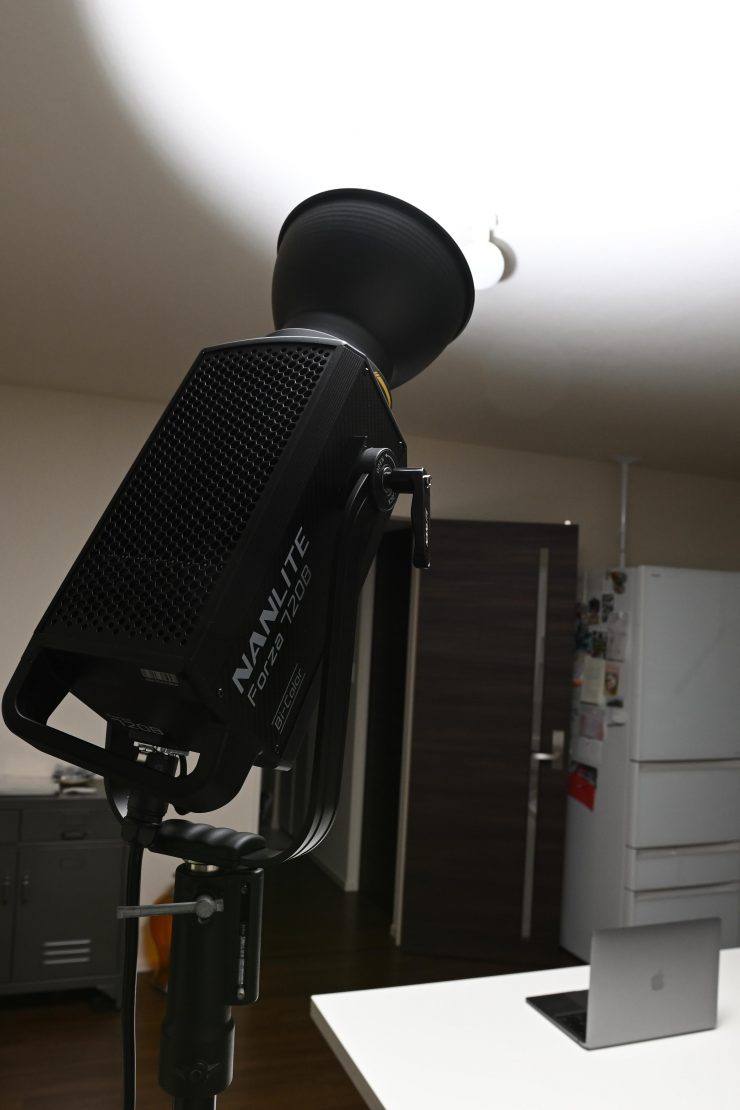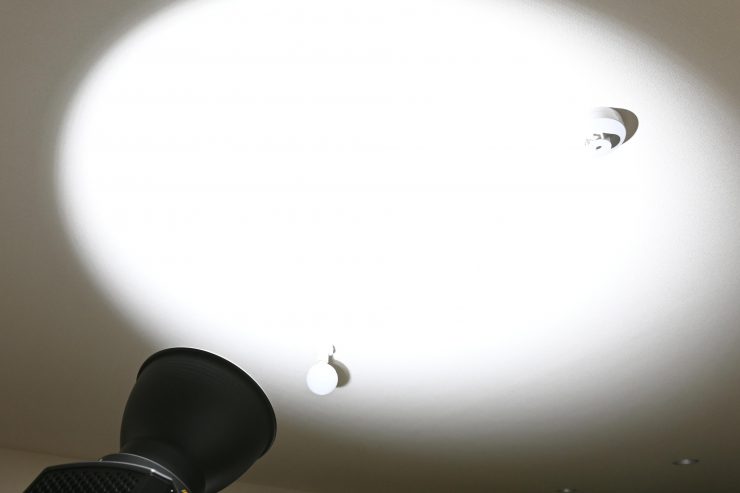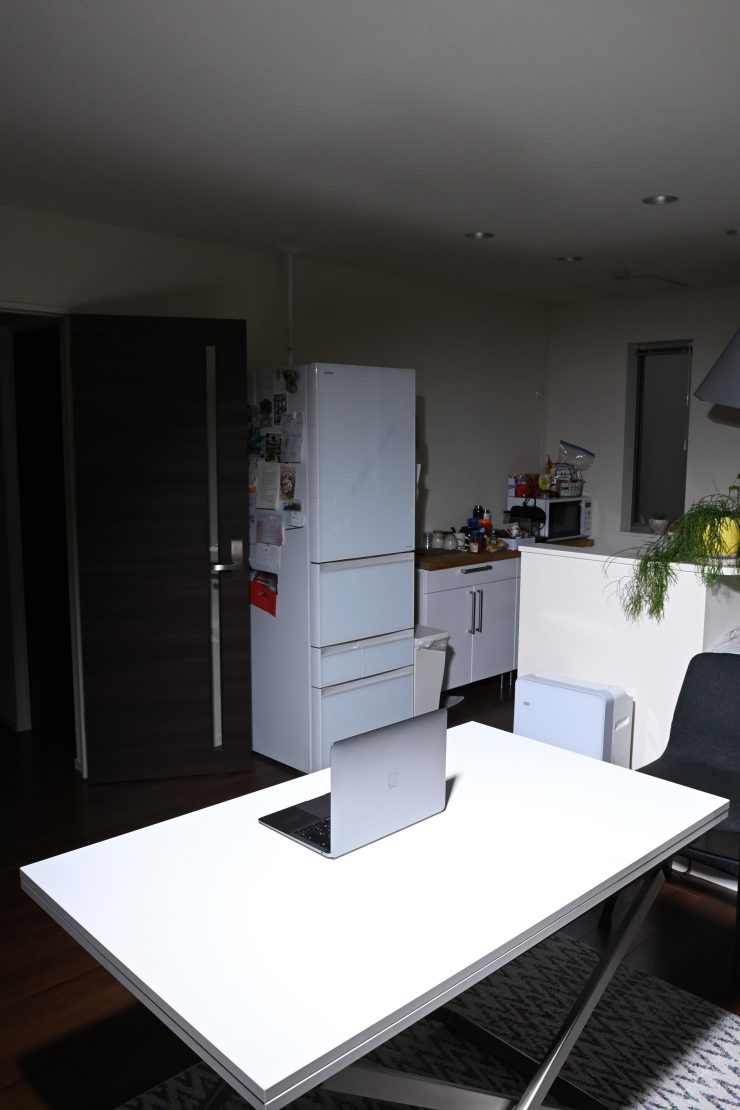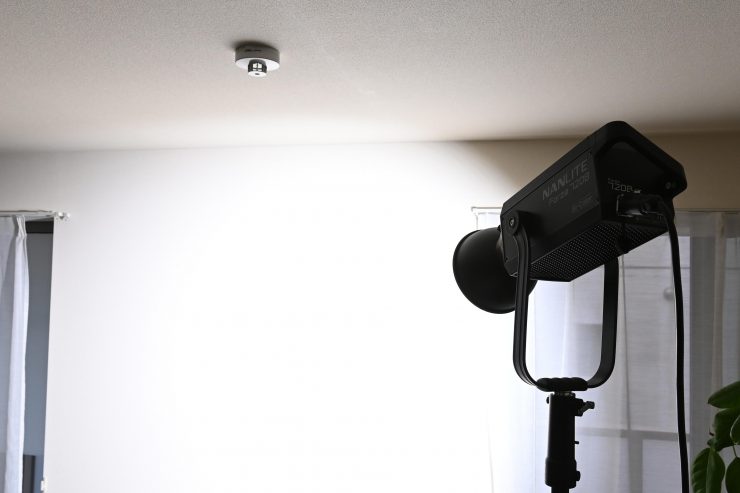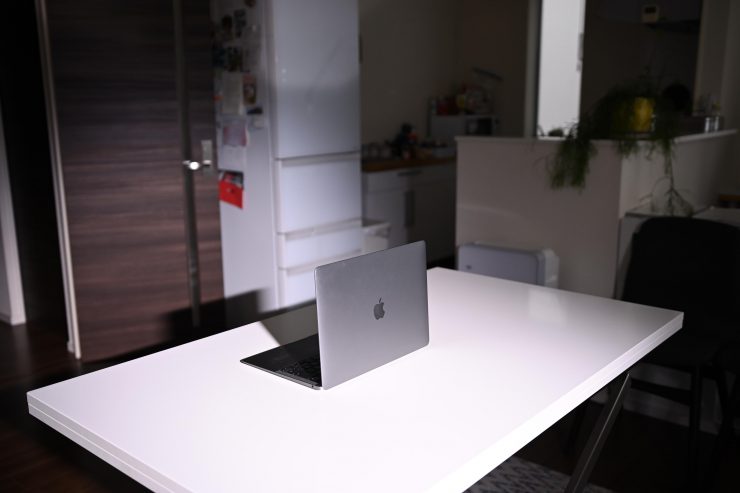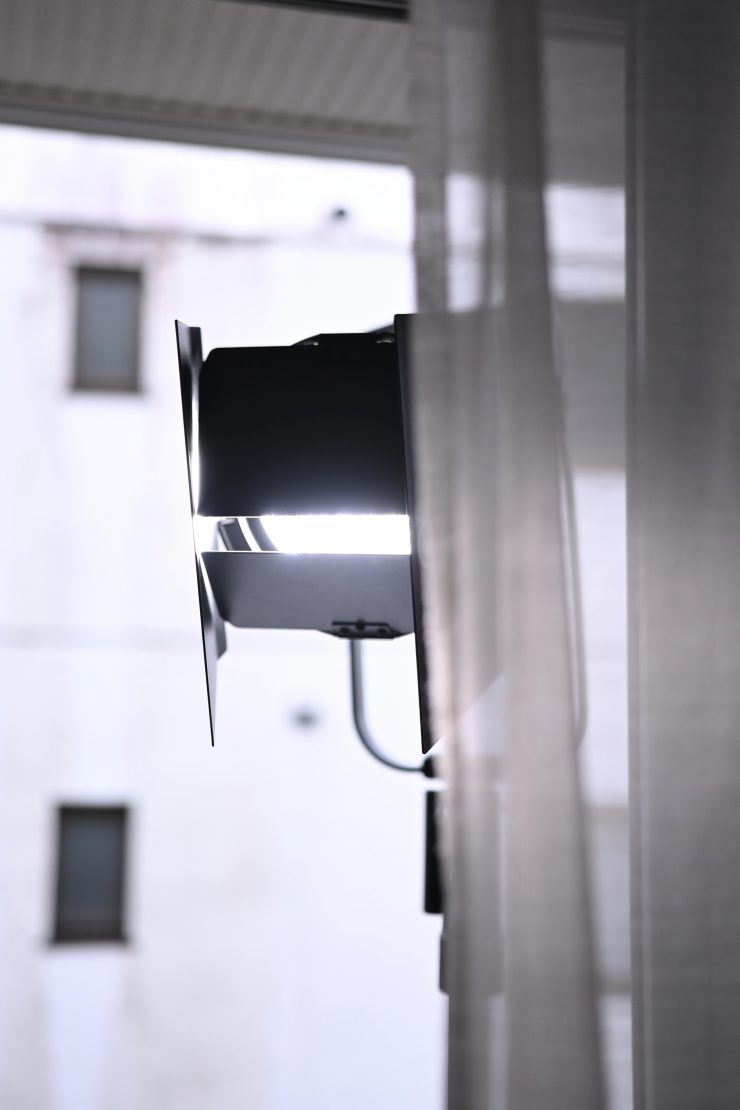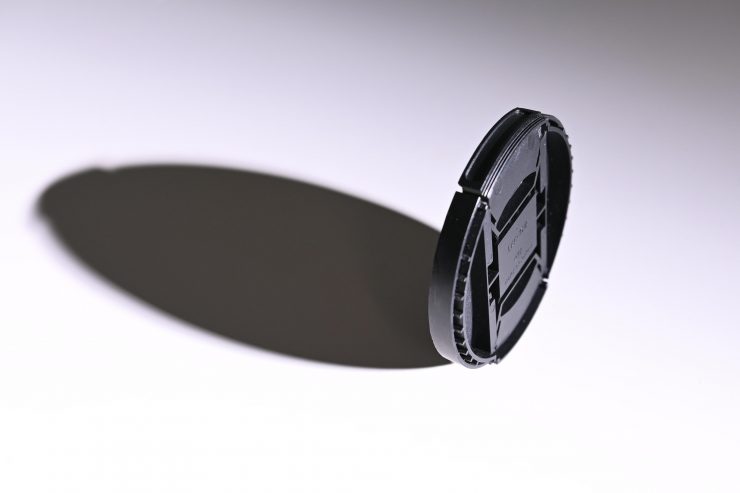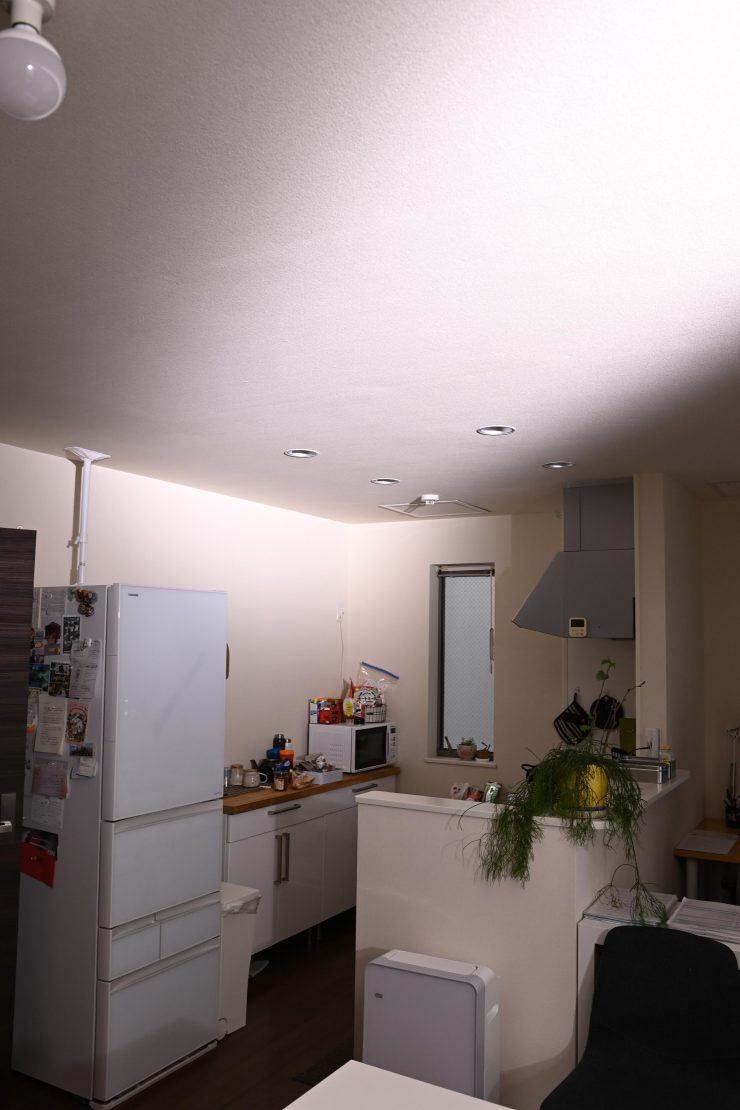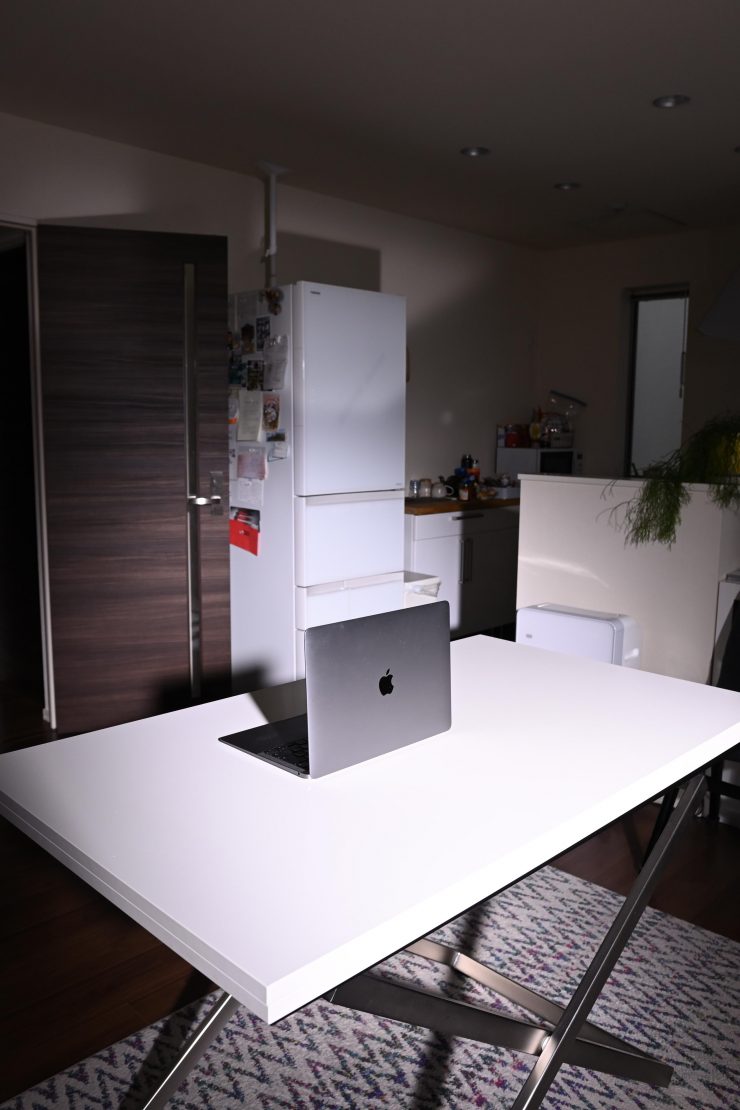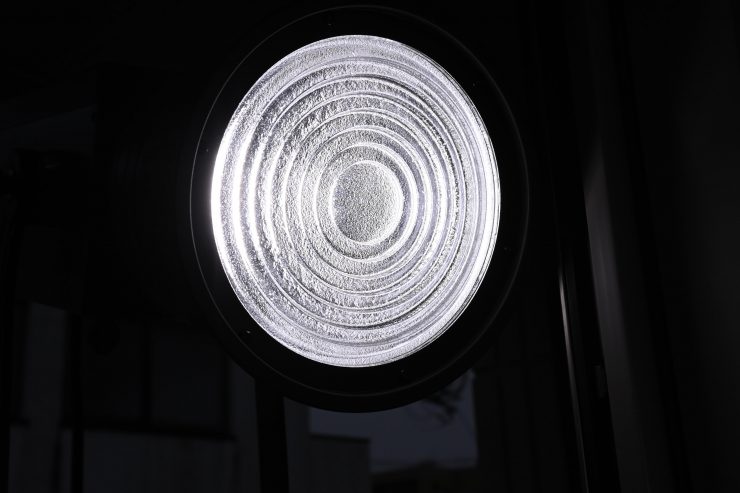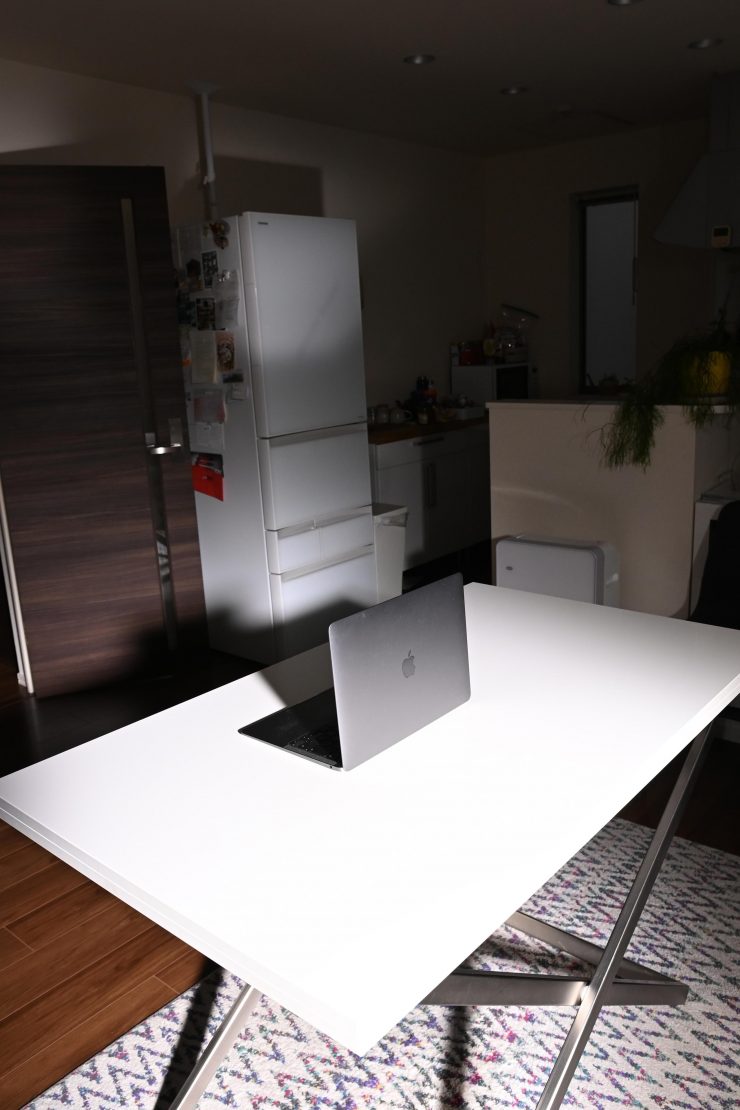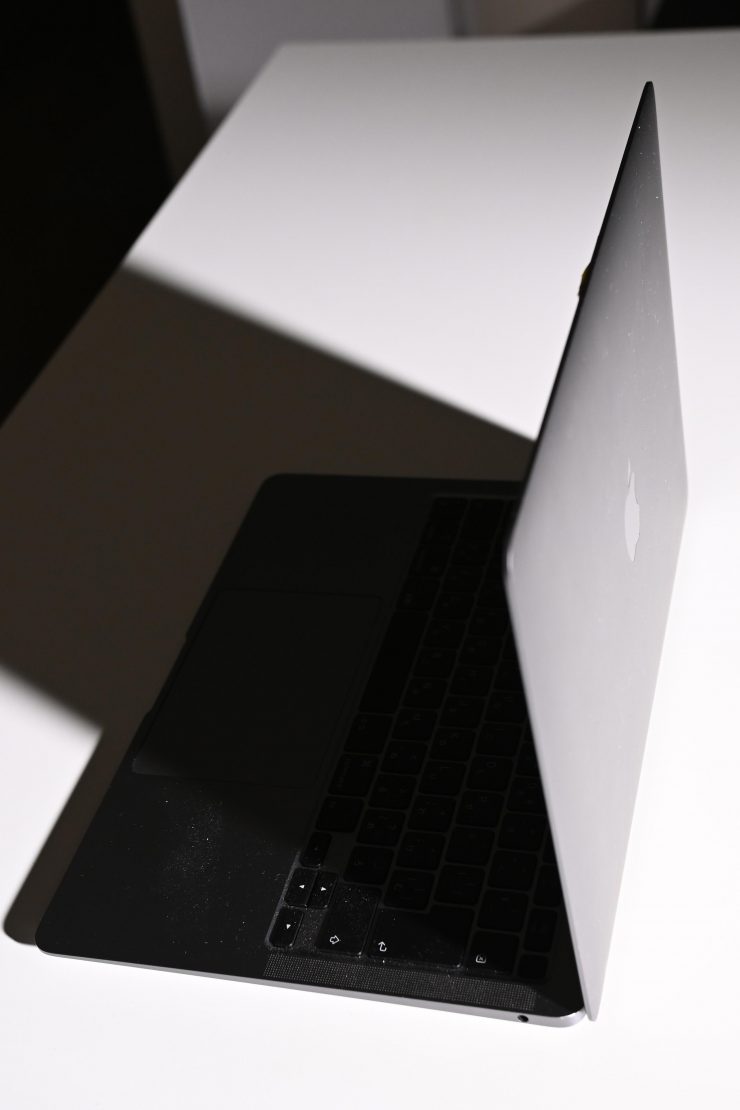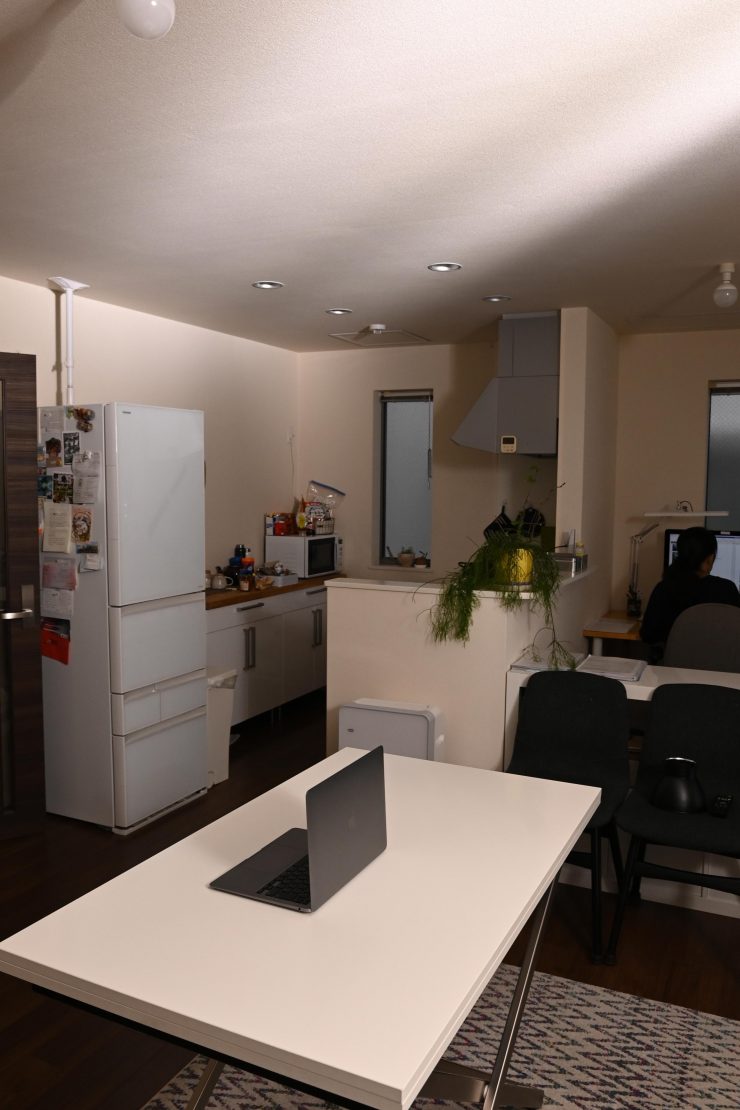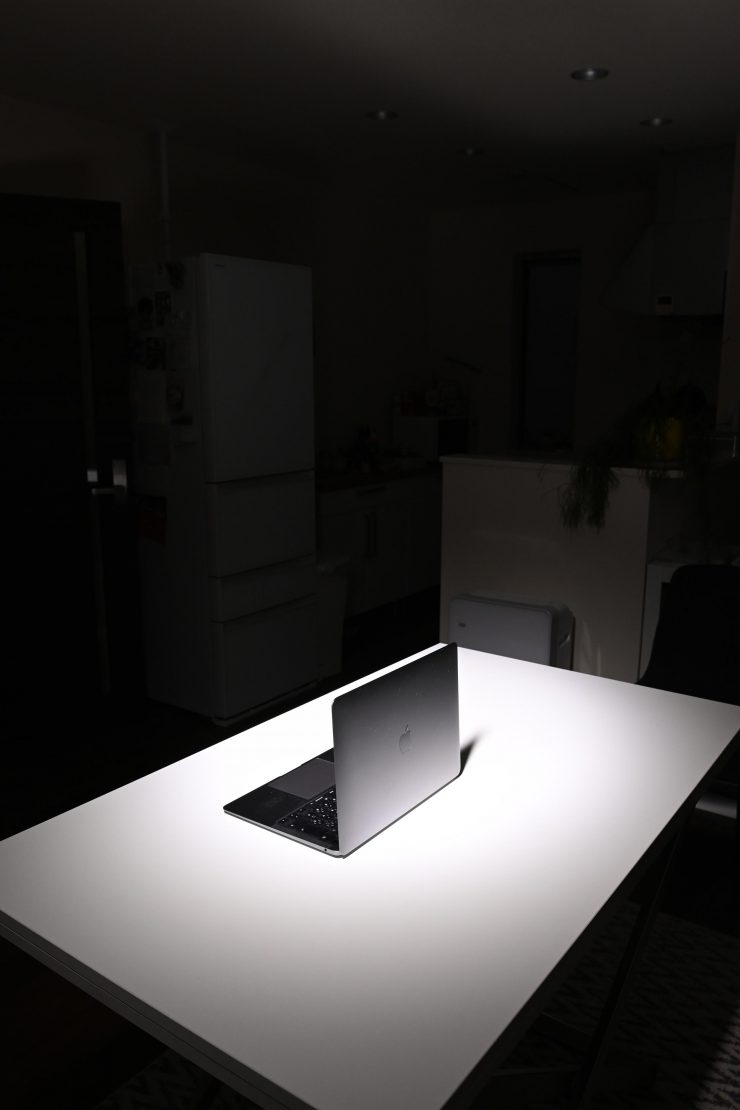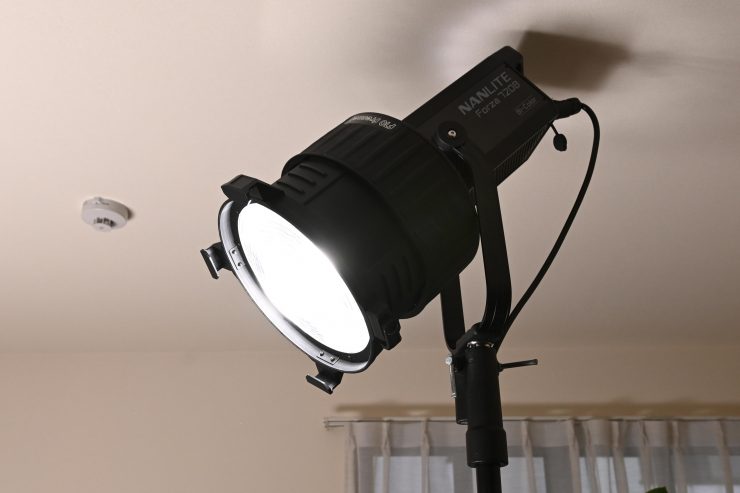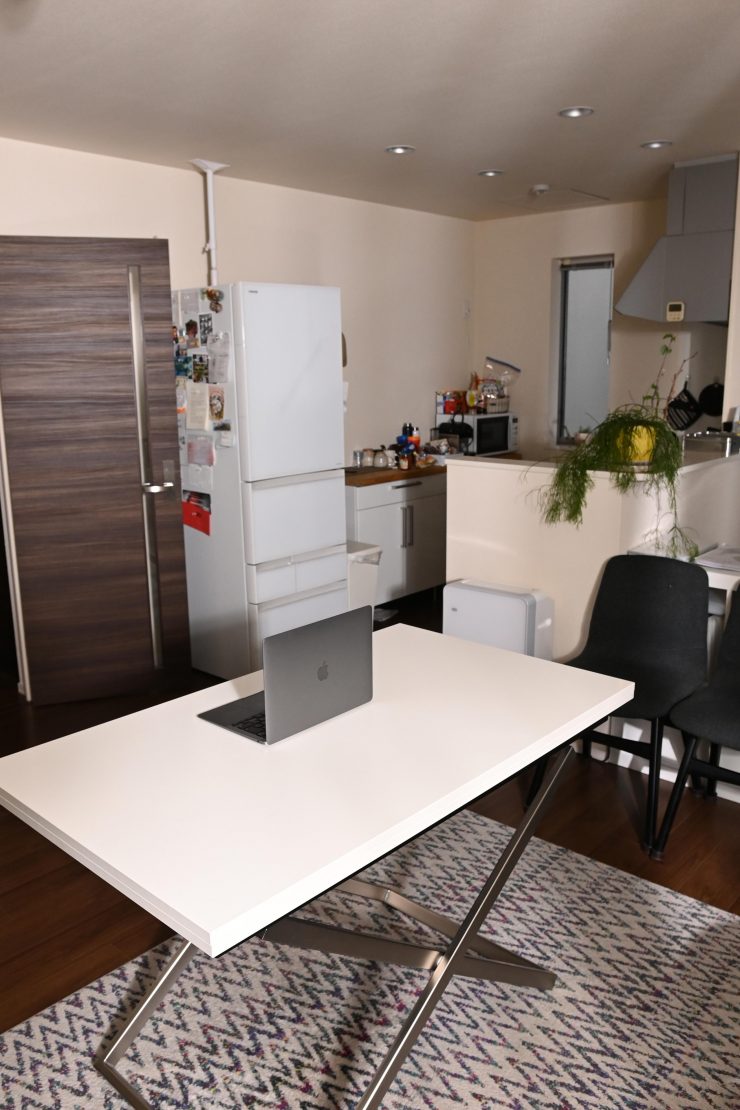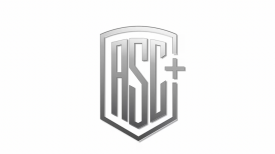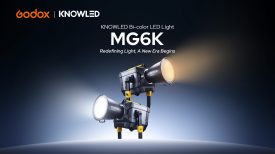
Nanlite recently unveiled its new Forza 720 and 720B LED fixtures. According to Nanlite, they are the most powerful fixtures in the Forza range. The Forza 720 and 720B are direct competition to the Aputure 600d Pro and 600x.
Versatile lights in this form factor have become increasingly popular due to their swiss army knife style abilities, which enable them to be used for a variety of lighting scenarios. This is why we have seen so many of them flood the market. Their popularity with users has certainly driven manufacturers to create lots of options.
Key features
- 800W COB LED Monolight (720B doesn’t use a COB)
- 2700-6500K Color Temperature
- 96/97 CRI/TLCI
- 120° Beam Spread, 55° Reflector
- Bowens S-Type Reflector Mount
- 0-100% Dimming, DMX & Bluetooth Control
- Multi-Voltage AC Operation
- Optional V-Mount Battery Operation
- 2.2″ LCD Display
- Includes Carrying Case
With so many COB spotlights already on the market it will be interesting to see if the Nanlite Forza 720B stands out in this crowded LED market. Without further ado, let’s get on with the review.
Concept
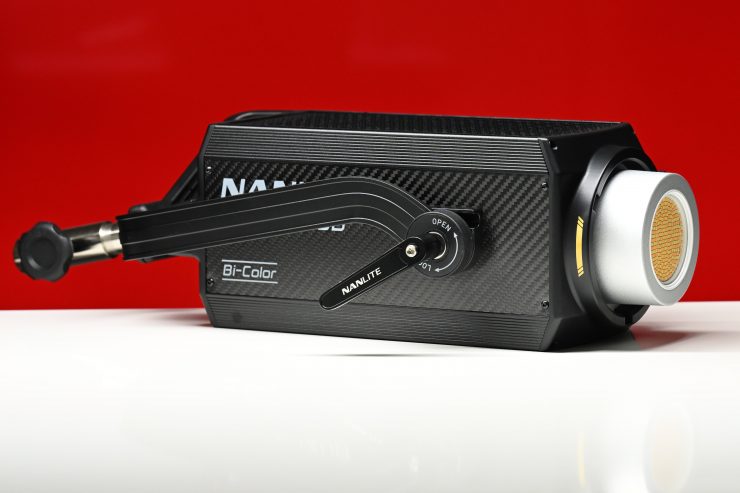
The concept behind the Nanlite 720B was to make a versatile, high-powered lighting solution for professional users. This concept is very similar to what most other lighting brands making similar solutions are also doing.
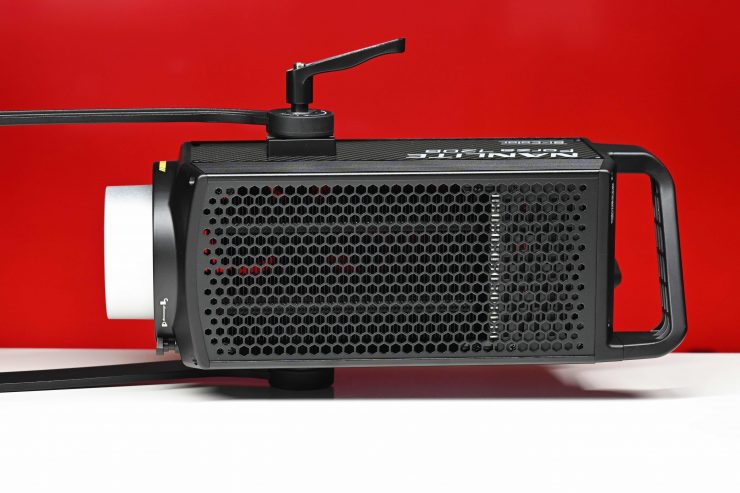
Appearance-wise, the Forza 720B looks very similar to any other COB style fixture. The design of all of these lights makes them hard to distinguish from each other. I would imagine that there is probably a design reason why all of these fixtures look similar. I mean at the end of the day it is a COB or cluster of LEDs attached to a giant cooling system. There are only so many ways to design something like that. There is no point in somebody trying to design something that looks completely different if the form factor doesn’t work well for its intended use.
Build Quality
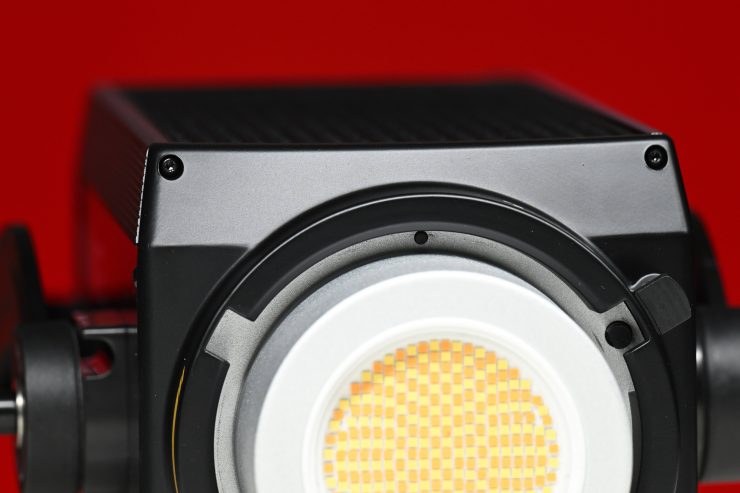
The Forza 720B is solidly made and constructed. The housing seems reasonably robust, and it features all-metal construction. In a nice touch, there is also an umbrella mount in the lock off on the yoke frame.
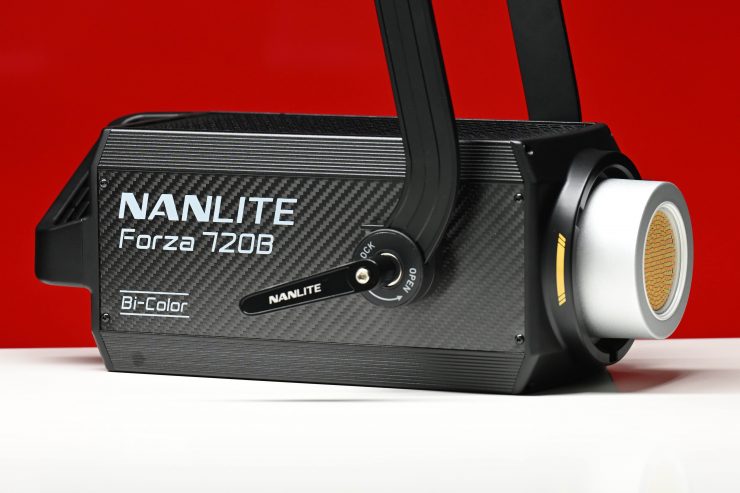
There are two panels on the sides of the fixture that look like they are carbon fiber, but I am not sure whether that is real carbon fiber or whether it has just been made to look like carbon fiber.
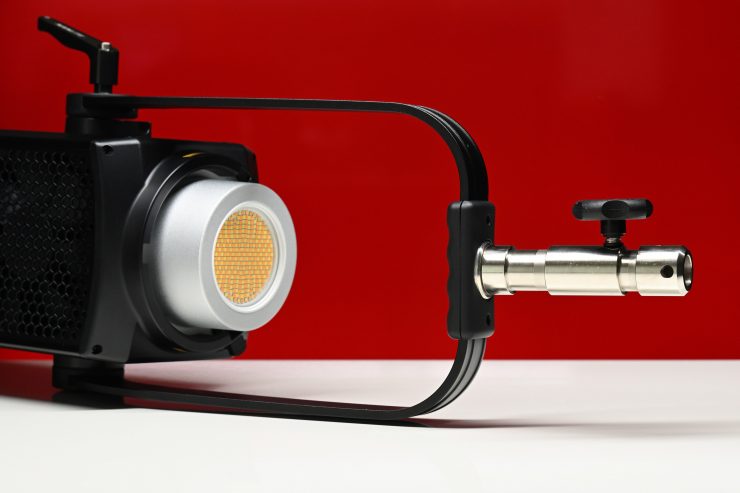
The yoke frame is solidly made and it tightens down very securely.
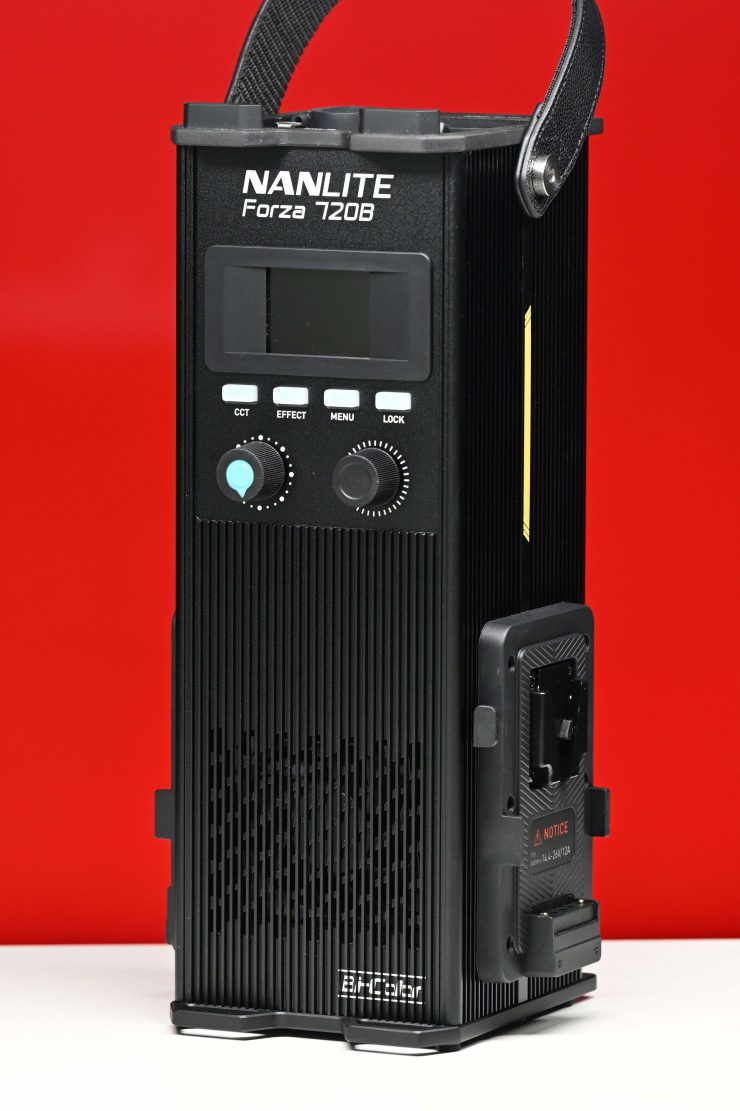
The power supply/controller is well made and looks like it would stand up to the rigors of field use.
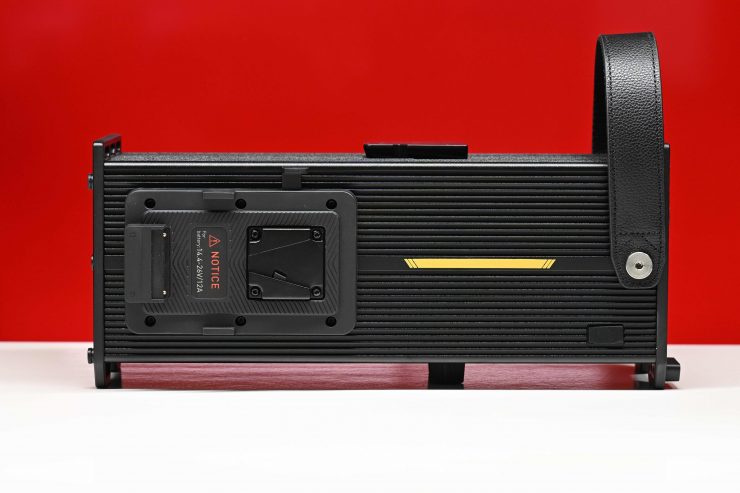
The V-lock battery plates are also well made and I like the little leather strap that you can use to carry the power supply/controller.
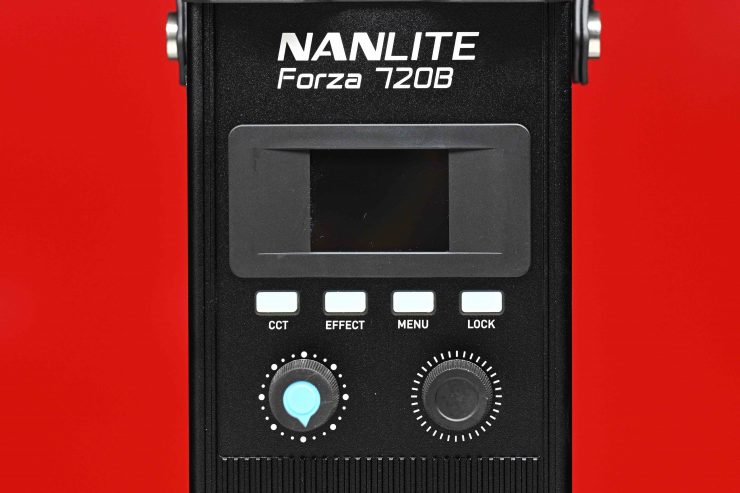
The buttons and dials are decently constructed.
I like that Nanlite includes a very long power cable and a very long cable that goes from the power supply/controller to the light head.
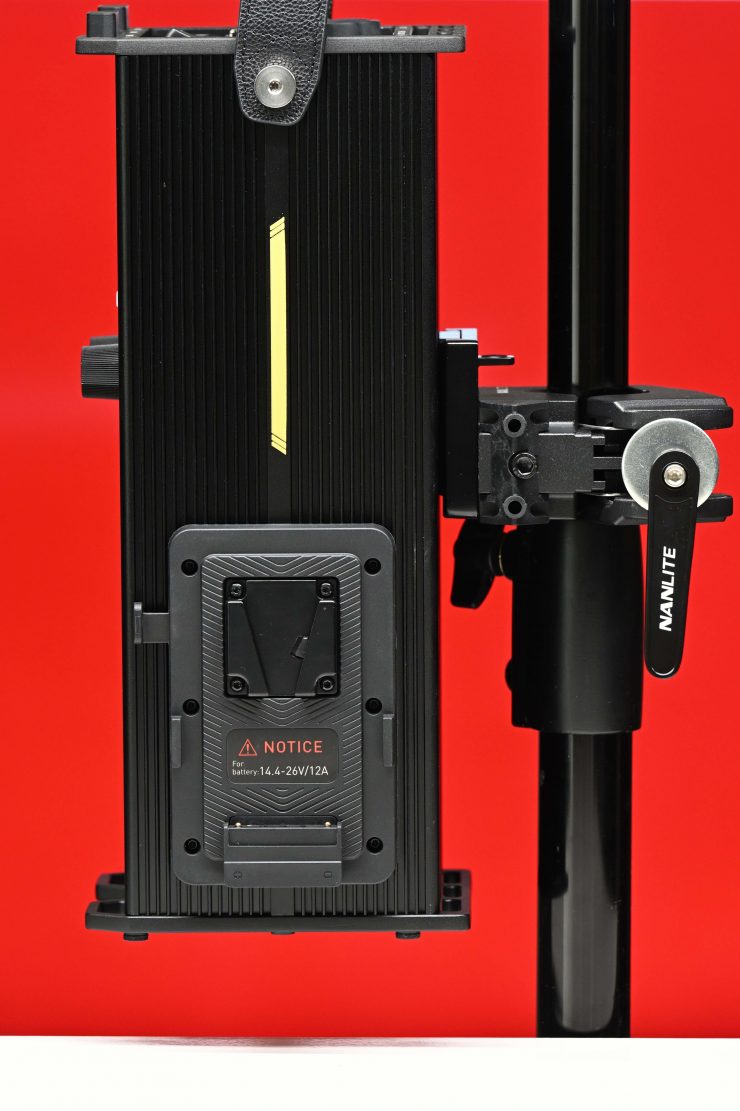
You can place the power supply/controller on the ground or on a light stand. Nanite includes a mounting clamp that has a mini V-lock plate on it for attaching the power supply/controller.
The overall build quality, at least in my opinion, is comparable to an Aputure LS 600x Pro. Nanlite has paid a lot of attention to detail with this light and it shows.
Design
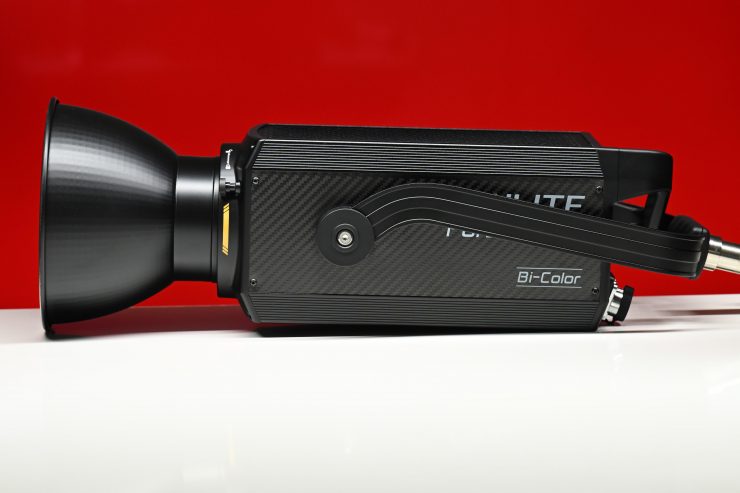
As far as the design goes, as I already mentioned, it does look a lot like most other similar style fixtures.
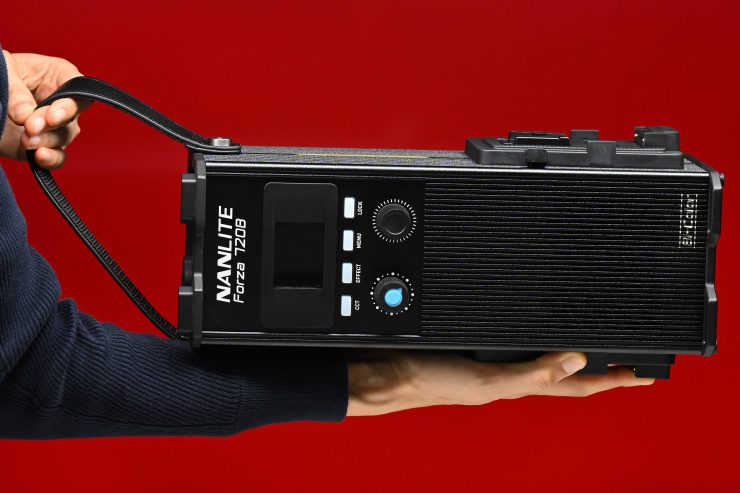
The design consists of the lamp head and a separate power supply/controller. This is fairly common with high-powered, high-power draw lights such as these. Having the power supply and controller built into the light head would make it very large and extremely heavy. The benefit of having a separate power supply/controller is that you can use the light on smaller-sized light stands. and you have the flexibility of placing that power supply/controller further away from where audio is being recorded.
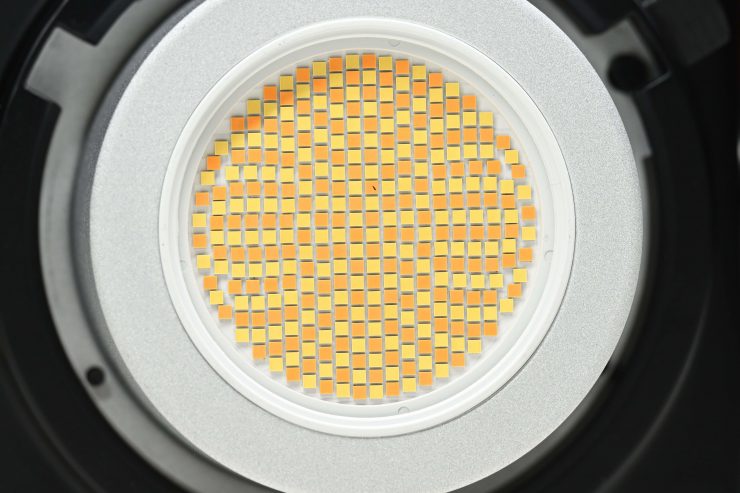
Lots of LED lights on the market, including the Nanlite Forza 720 are using COB technology. COB stands for “Chip On Board” where multiple LED chips are packaged together as one lighting module. The advantage of COB LEDs being multi-chip packaged is that the light-emitting area of a COB LED can contain many times more light sources in the same area that standard LEDs could occupy. This results in a greatly increased lumen output per square inch.
With the Forza 720B, it isn’t using a COB element, instead, it is a tight cluster of LEDs that have been arranged in a circular configuration. Is this a big deal? Not really. While it may not provide results that are as good as the Forza 720 when used with a projection or Fresnel attachment, I didn’t find anything that overly concerned me.
Weight & Size
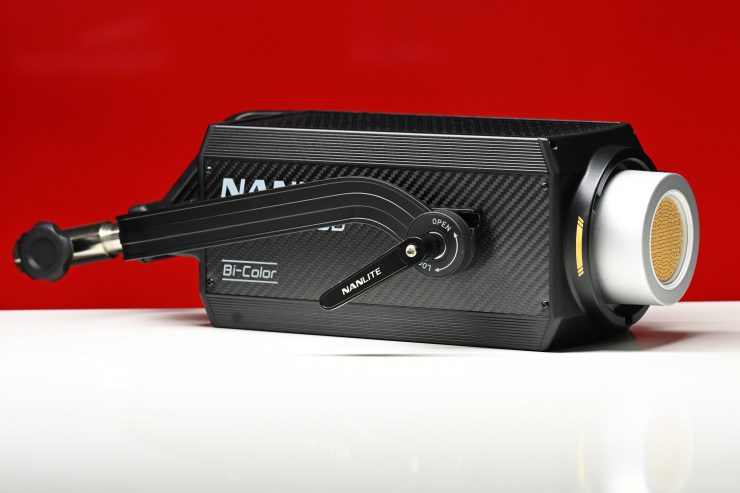
The Nanlite Forza 720B weighs 11.7 lb / 5.3 kg.
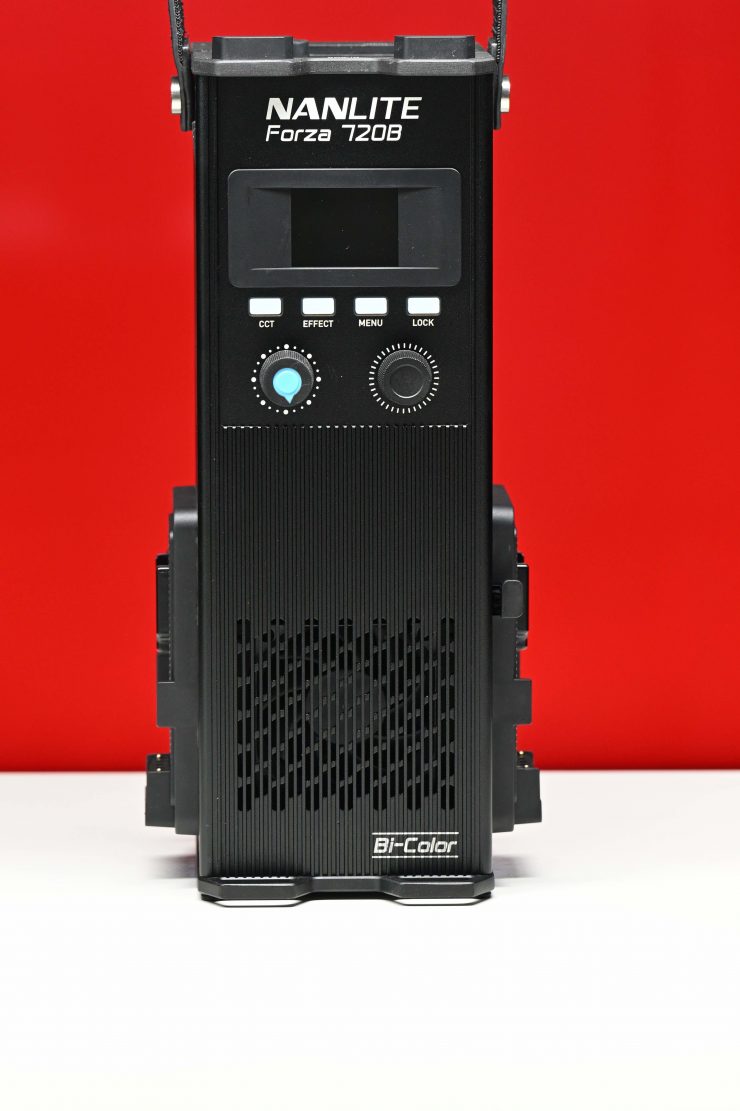
The separate power supply/controller weighs 9.3 lb / 4.2 kg.
So how does this weight compare to the Aputure LS 600x Pro?
| Light Head | Power Supply | |
| Nanlite Forza 720B | 11.7 lb / 5.3 kg | 9.3 lb / 4.2 kg |
| Aputure LS 600x Pro | 11.84 lb / 5.37 kg | 10.78 lb / 4.89 kg |
As you can see, the light heads are very similar in weight, while the Nanlite has a slightly lighter power supply/controller.
Beam Angle
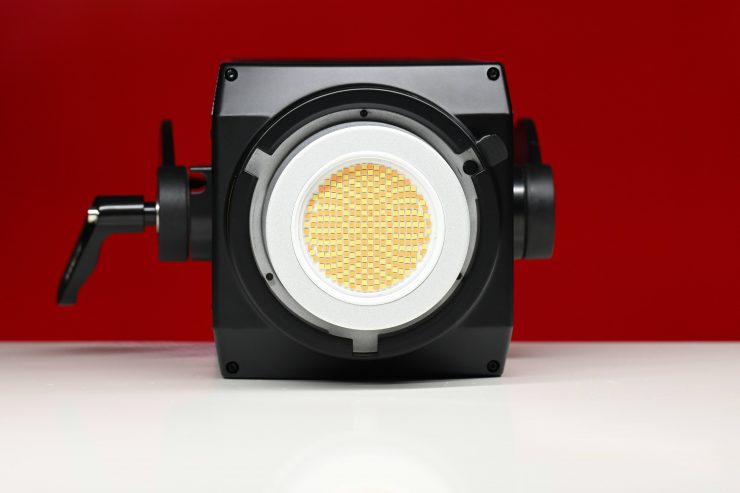
The beam angle of the fixtures is 120° when used open face. I have no idea what the open face beam angle of the Aputure LS 600x Pro is because I couldn’t find it isn’t anywhere. If anyone knows please let me know.
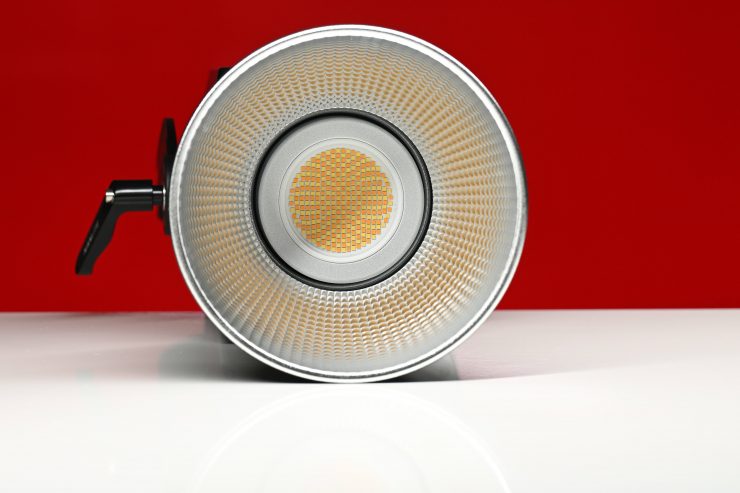
The reflectors for both the Nanlite and the Aputure are 55°.
Mounting

As I already mentioned, the fixture comes with a fairly robust yoke frame.
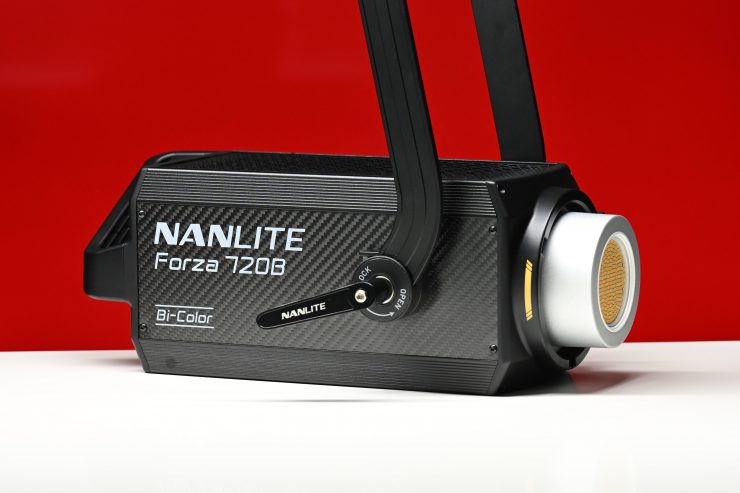
The yoke frame is set a little too forward for my liking and I would have preferred to have seen it moved back a little further on the fixture to provide better weight distribution. In saying that, It was ok when used with a large lighting modifier on the front.
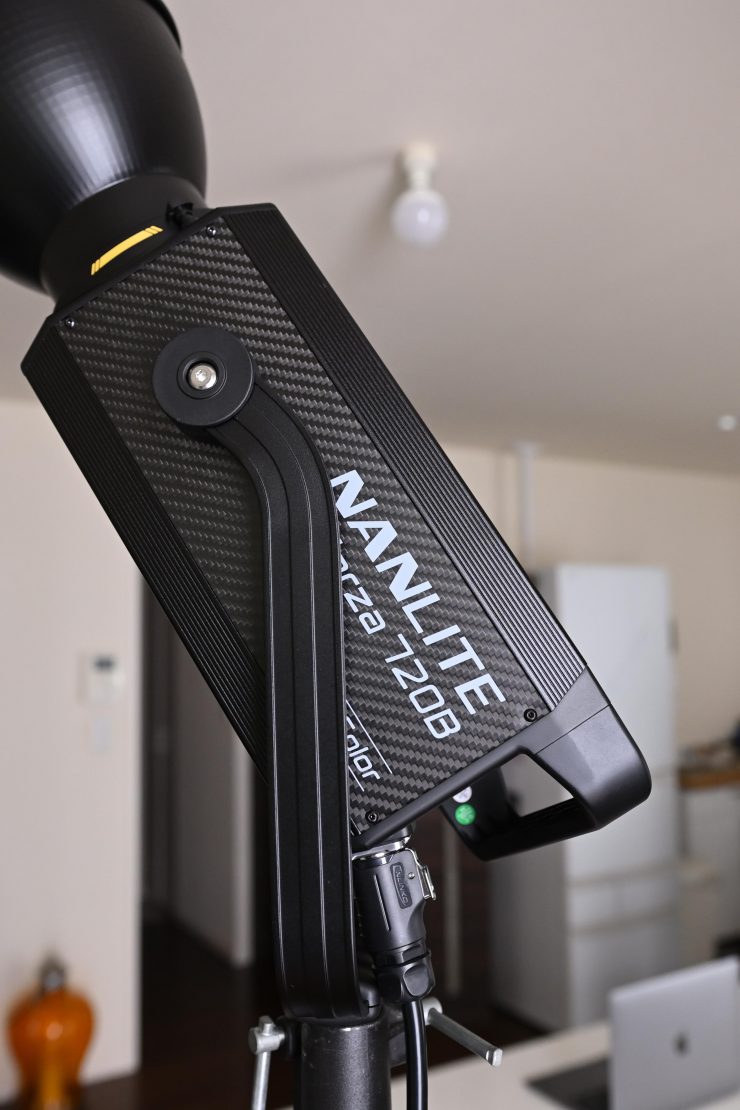
The yoke offers a reasonable amount of adjustment, but if you try and tilt the Forza 720B directly up, the cable will hot the yoke frame.
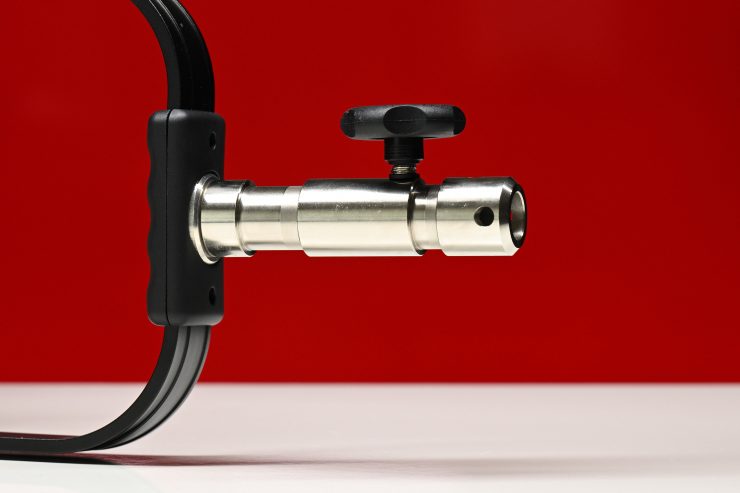
The end of the yoke frame features a junior pin that is also hollowed out so you can place the light on any regular light stand as well.
Power Draw
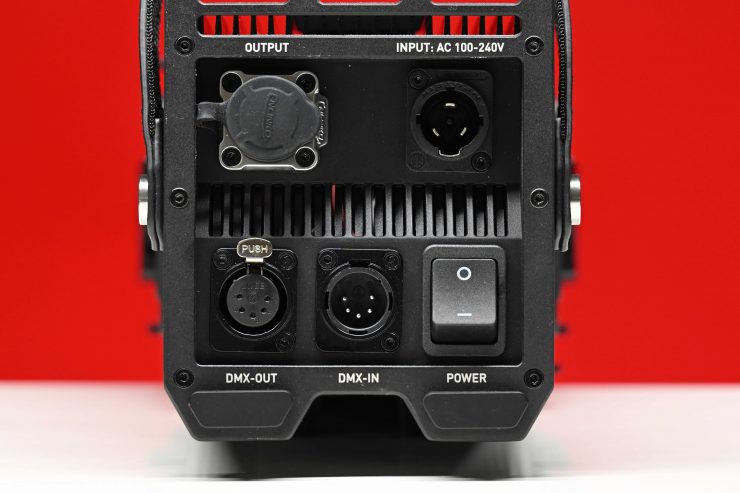
The Nanlite Forza 720B draws 800W. Even though the power draw is 800W the light can both be run via AC and DC sources.
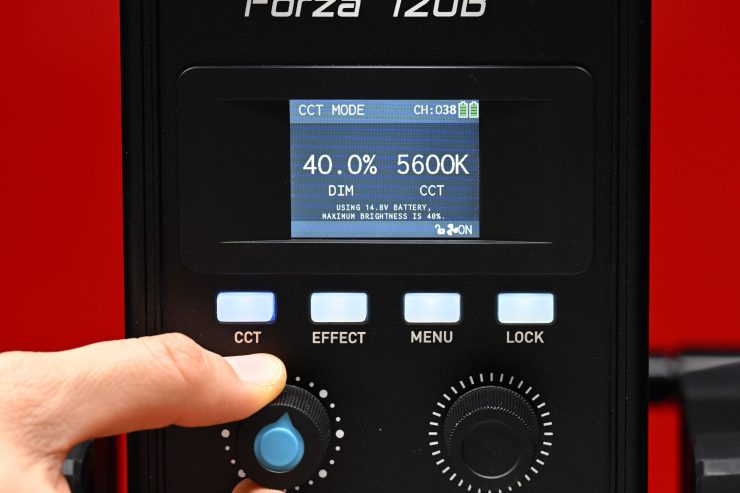
You can use two 14.8V batteries, but the output is limited to 40%. If you use two 26V V-Mount batteries you are supposed to be able to run the light at up to 65% of its full output.
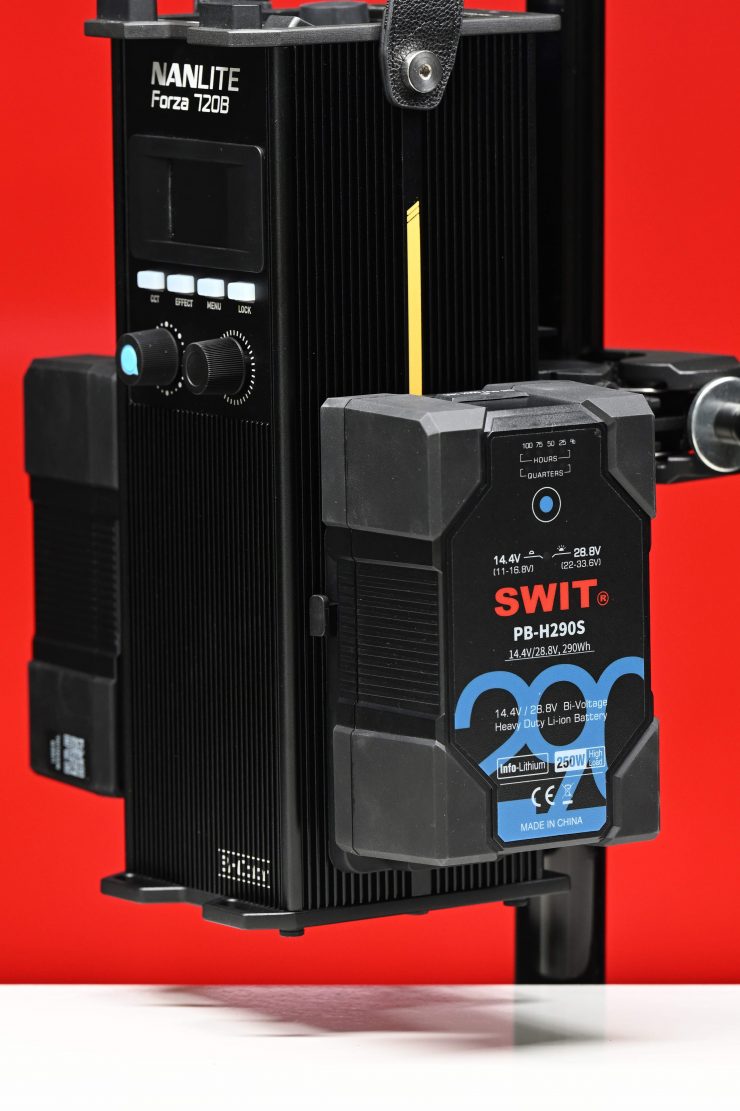
I tried powering the Forza 720B with two SWIT PB-H290S high load batteries and I was limited to running the light at 40% output. I didn’t have any 26V V-mount batteries to test the light with.
How does this power draw compare to the Aputure LS 600x Pro?
| POWER DRAW | |
| Nanlite Forza 720B | 800W |
| Aputure LS 600x Pro | 720W |
As you can see, the Nanlite draws 80W more than the Aputure. 80W doesn’t sound like much, but even though most 15A household power outlets can handle up to 1,800 watts, it is always safer to stick to around 1,500 watts per outlet or circuit. While you could run two Aputure 600x Pro’s from one outlet or circuit, it may be a stretch to run two Nanlite Forza 720B’s.
How does it stay cool?
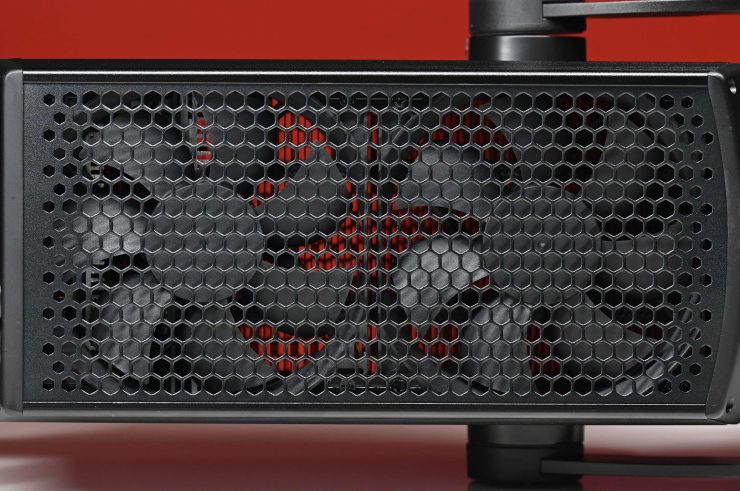
As I mentioned earlier in the review, the fixture does feature two large fans on the underside of the light.
Like every high-powered COB, the fans do emit some noise. It certainly isn’t whisper-quiet, but it isn’t ridiculously noisy either. With lights such as these, you are unlikely to have them really close to where critical audio will be recorded. For most shooting scenarios I don’t think the fan will be an issue that anyone would complain about.
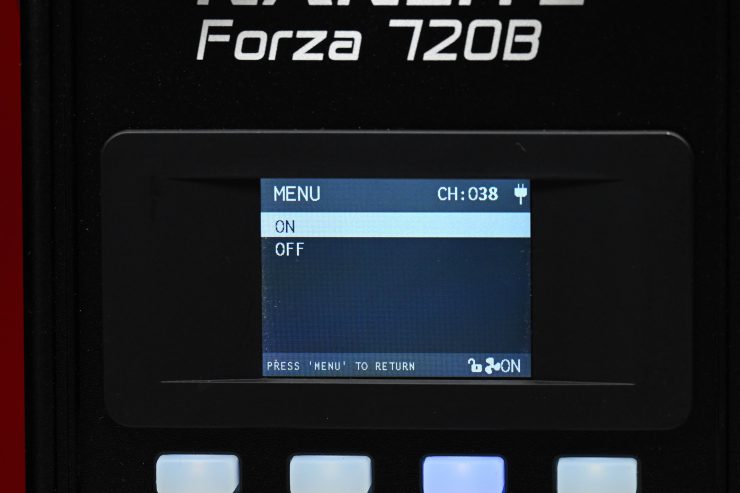
The only options Nanlite gives you when it comes to fan control are On or Off. There are no auto or low or mid fan speed choices available. If you do turn the fan off then the output is restricted to just 15%. This pretty much means that the fan is going to be on all the time unless you are running the fixture at a very reduced output.
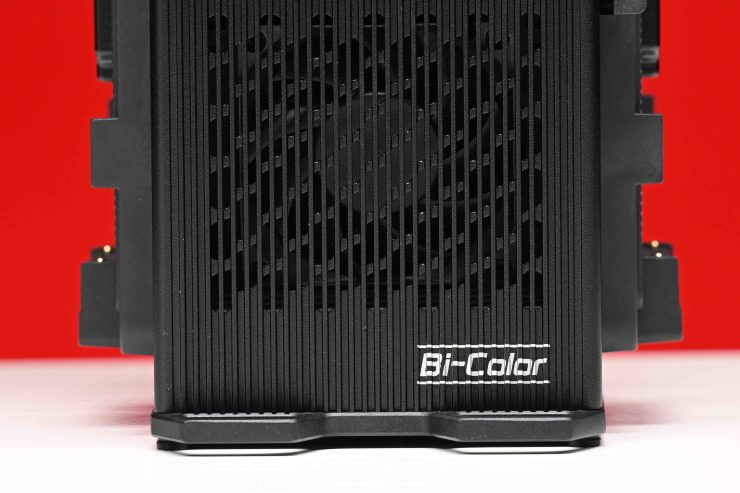
The power supply/controller also features a fan, but it is fairly quiet and you are not going to hear it.
The biggest problem with COB LED lights is that unless you diffuse them they are very bright to look at and unsuitable for directly lighting talent.
The light does emit quite a lot of heat from the COB element and if you are standing too close to it you will feel it starting to burn your skin.
Controls & Menu System
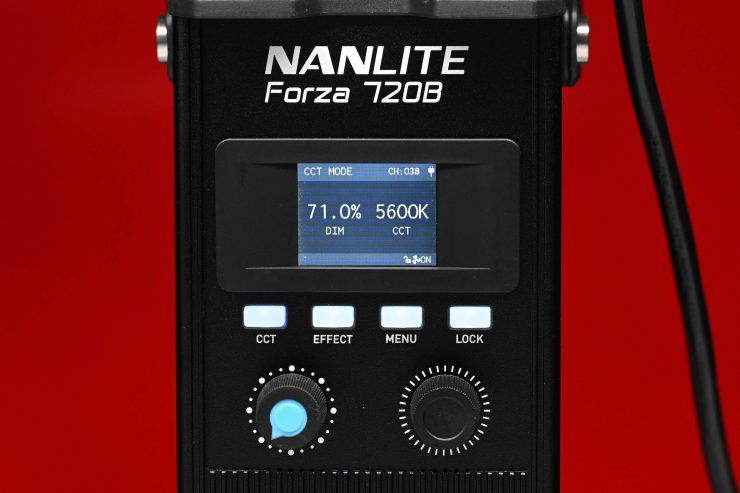
The fixture doesn’t feature any controls at all. They are all located on a separate power supply/controller.
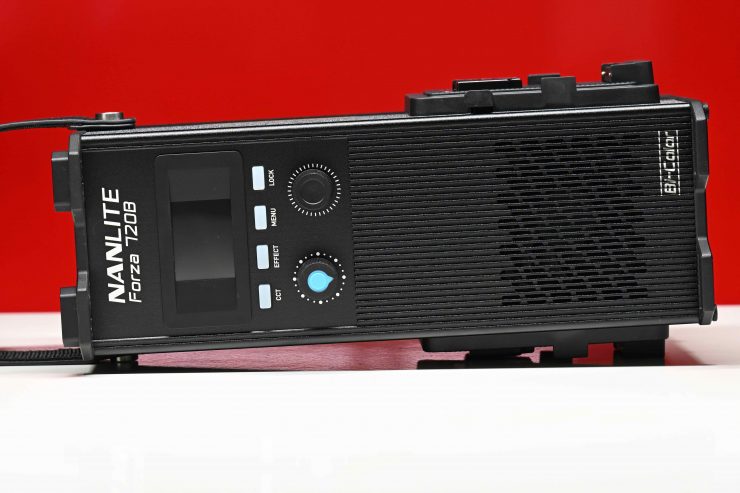
Just like with the Aputure LS 600x Pro, the controls and display screen are located on the side of the power supply/controller. I would personally prefer if companies placed this on the top instead. That way you can stand the power supply/controller up and clearly see your settings and controls without having to crouch down or pick it up.
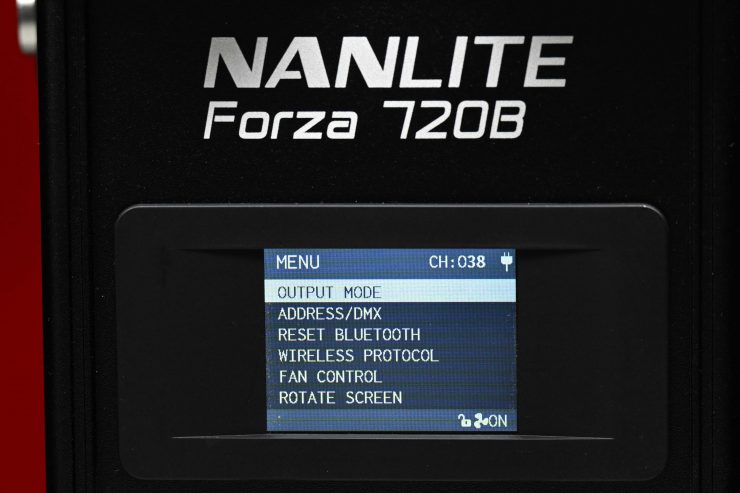
The LCD screen on the light is fairly small and basic, but it does clearly show you key information about the light’s operating modes, brightness, CCT, etc. There aren’t a ton of options on the menu so it is quick and easy to navigate.
With a good light, you shouldn’t have to read a manual to work out how to operate it. You should be able to turn it on and use it straight away. In that respect, this light is straightforward and easy to operate.
The physical dials that you use to control the light are nice and tactile and I found it very easy to dial in the exact amount of output or Kelvin color temperature that I needed.
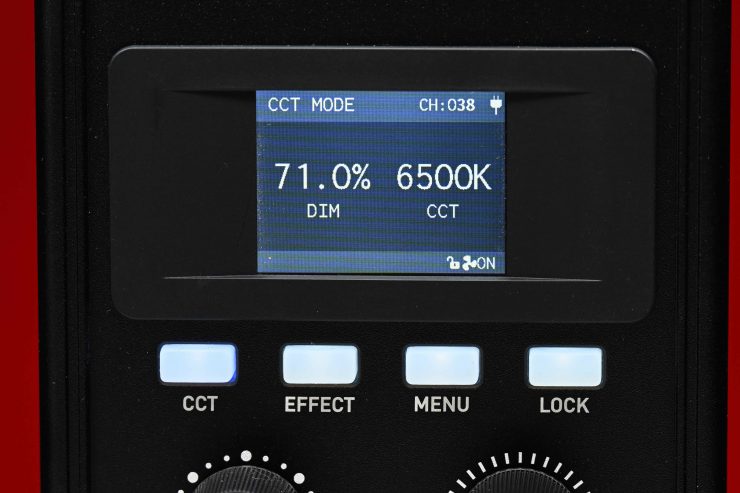
The light can be dimmed in increments of 0.1% and the Kelvin color temperature can be adjusted in 100K blocks. I would have preferred to have seen slightly more adjustment of the Kelvin color temperature, say the ability to make changes in 50K blocks.
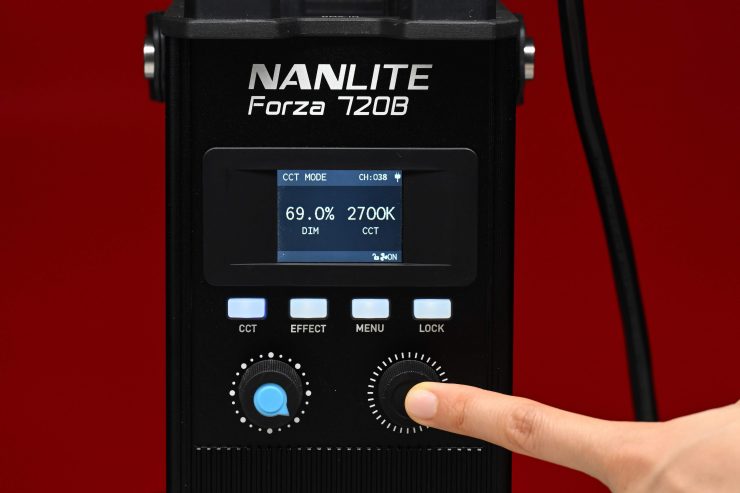
In a nice touch, if you press the Kelvin color temperature dial it automatically jumps between 2700K, 3200K, 4300K, 5600K, and 6500K.
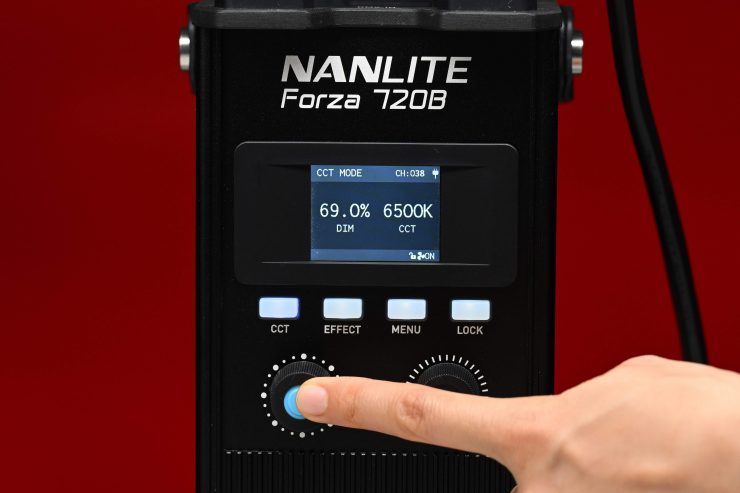
With the intensity dial, you can also dial in the amount of output you want you want and then if you press on that dial it will automatically go down to 0%. If you press it again it will go back to the original amount you had it set at. This is a good way of turning the light off while keeping the power turned on.
The only caveat I came across with the controls is that if you set a particular Kelvin color temperature and output and then you turn the light off at the power switch and turn it back on, it just reverts automatically to 5600K and 0% output. Nanlite has designed the light do to this on purpose because they don’t want anyone getting blinded by the light when it is first turned on.
I would personally prefer to have the light recall the last settings that were used and even if the light turns back on at 0%, you should just be able to press the intensity button and have it jump to your last setting.
Bluetooth App
You can also control the Forza 720B, as well as other Nanlite lights via built-in Bluetooth control using the NANLINK mobile app. The app lets you customize and save effects, change modes, and adjust intensity, CCT, etc.
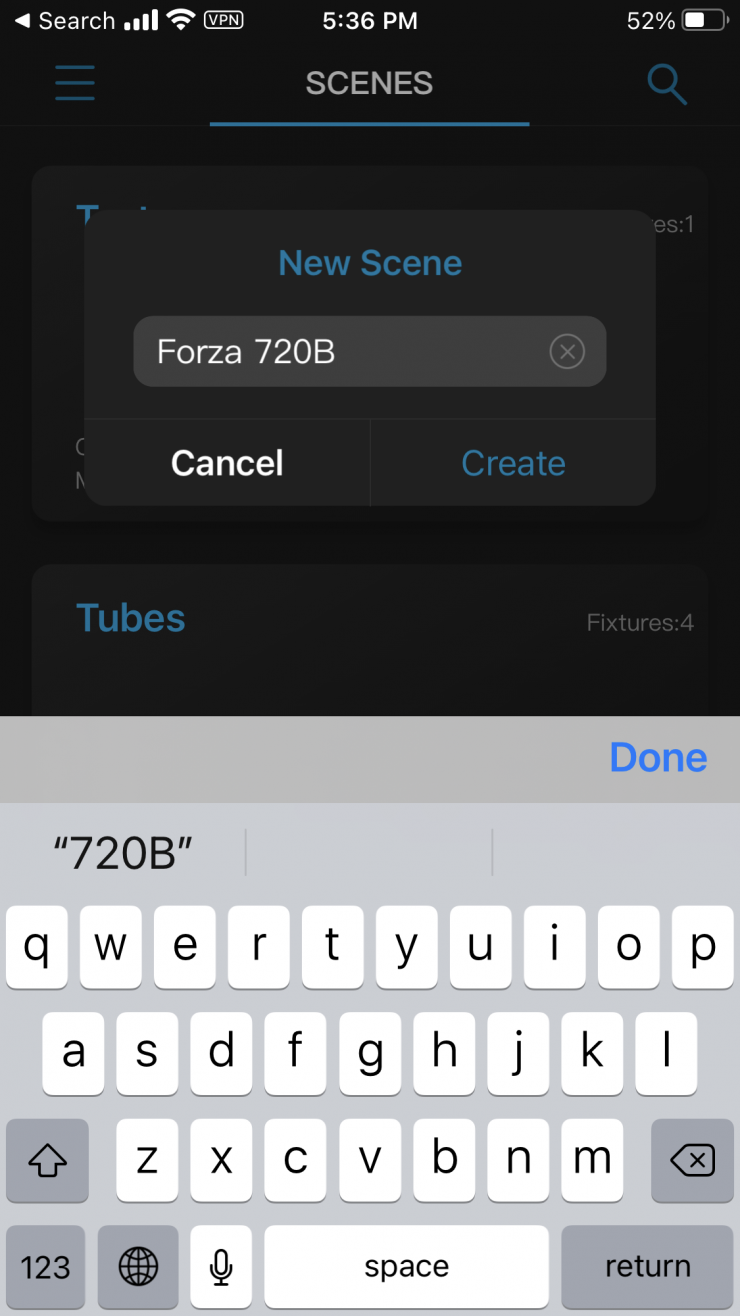
Connecting to the app is fairly straightforward. You just turn the light on, open the app, and then add a fixture. It will scan to see what lights are turned on and then you choose which ones you want to add.
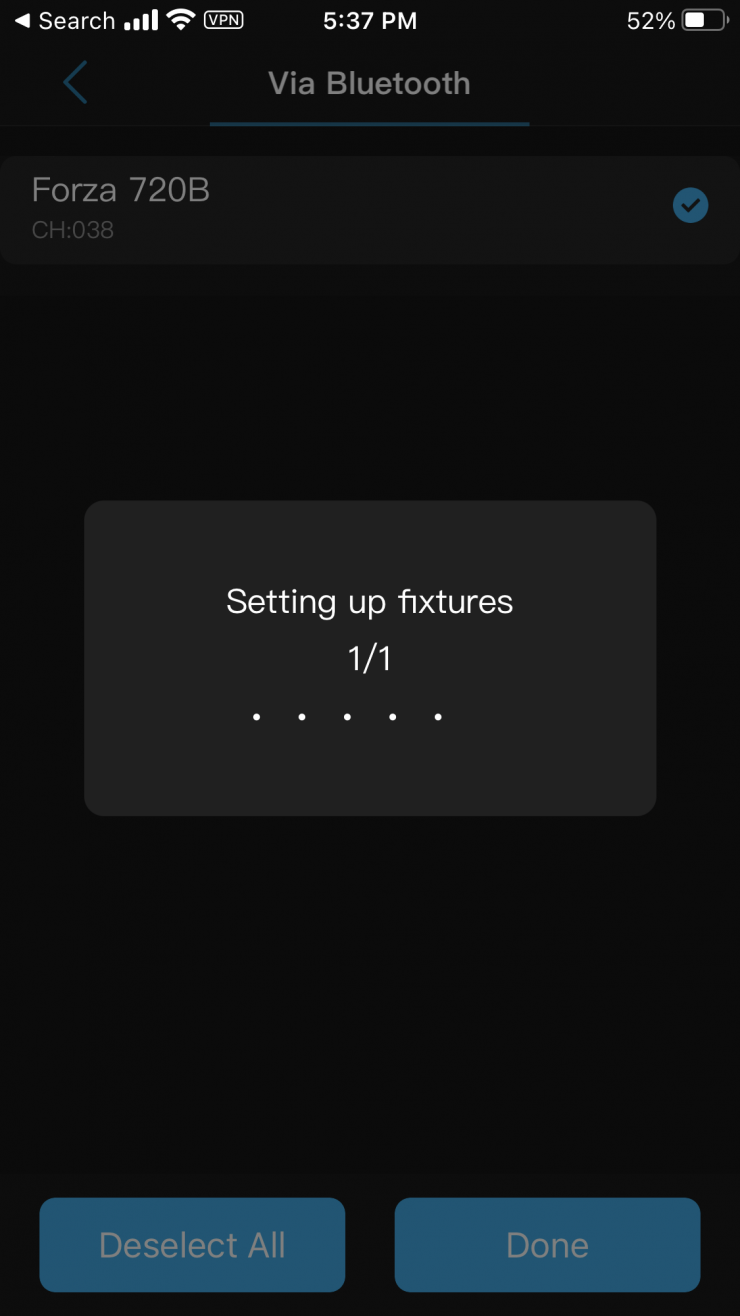
It takes about 30 seconds to set up the light and get it ready to use when you are adding a light for the first time. The lights will automatically appear next time you go to use them.
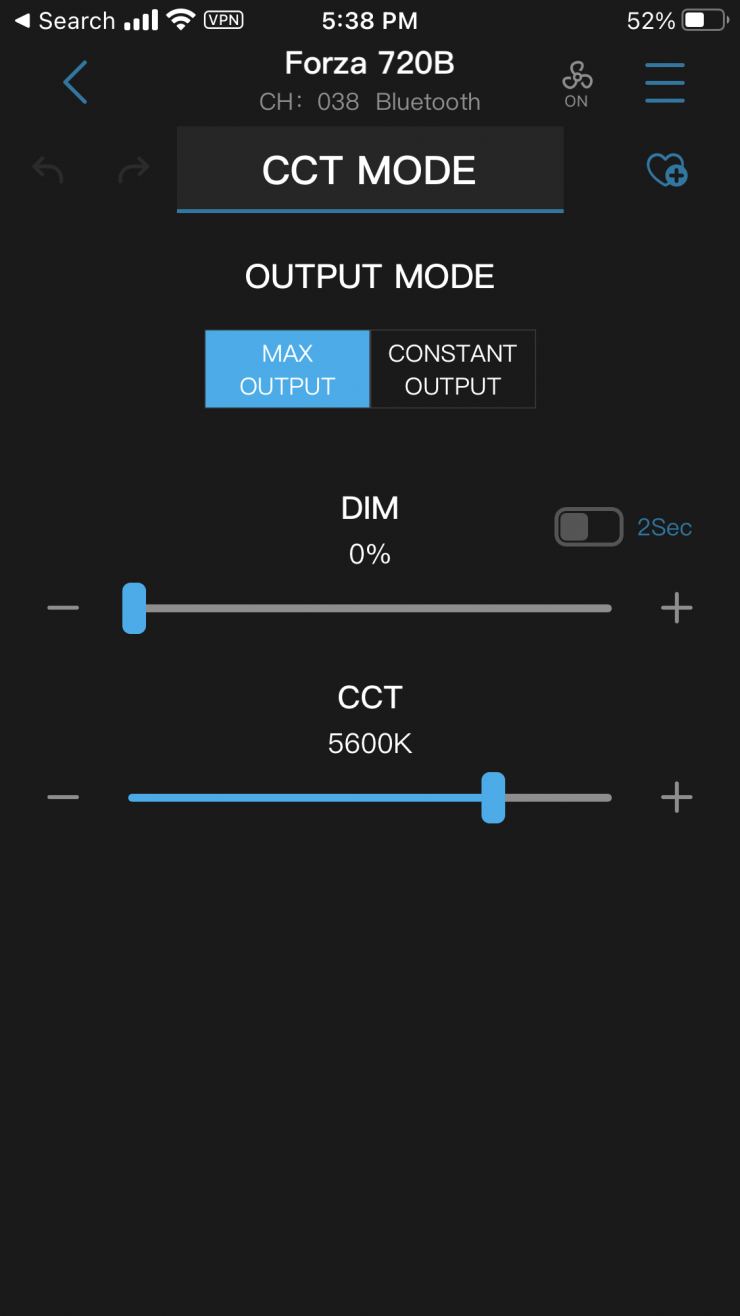
Once you have done that you enter a very easy-to-use interface.
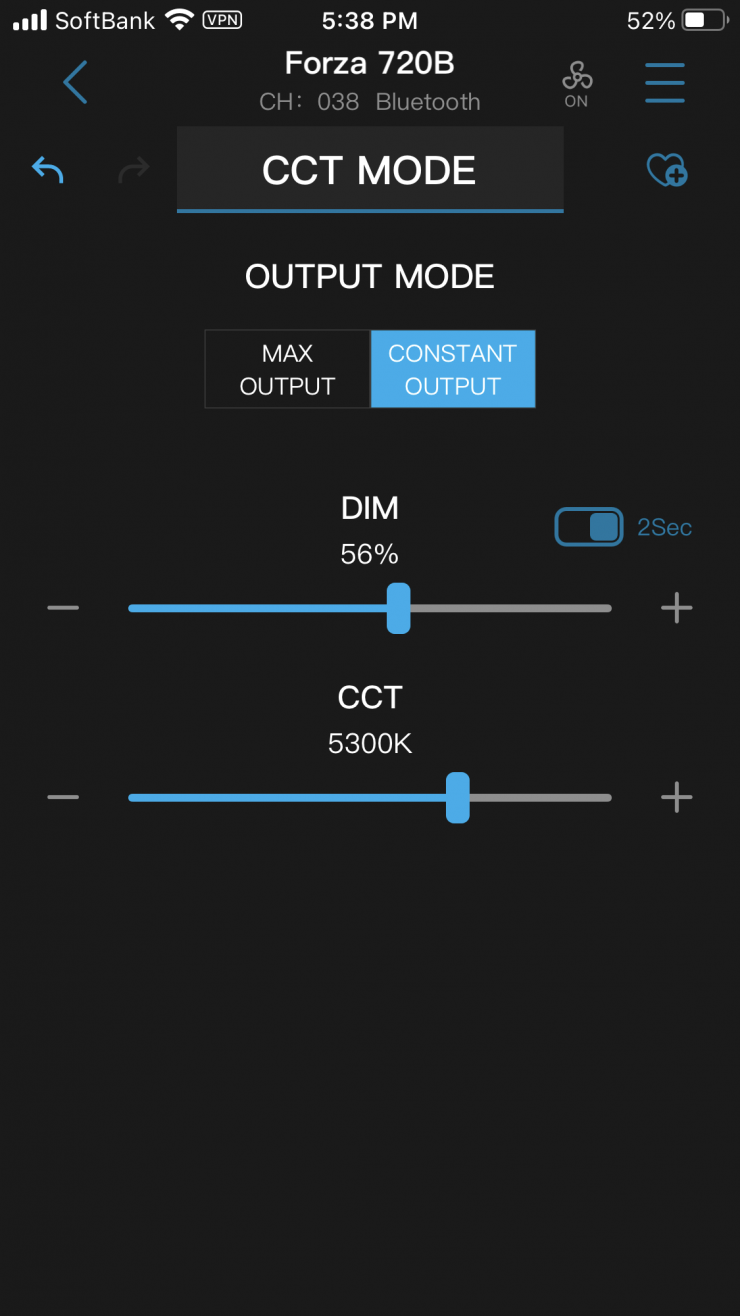
Here you can choose between CCT Mode, Effect Mode, and Preset.
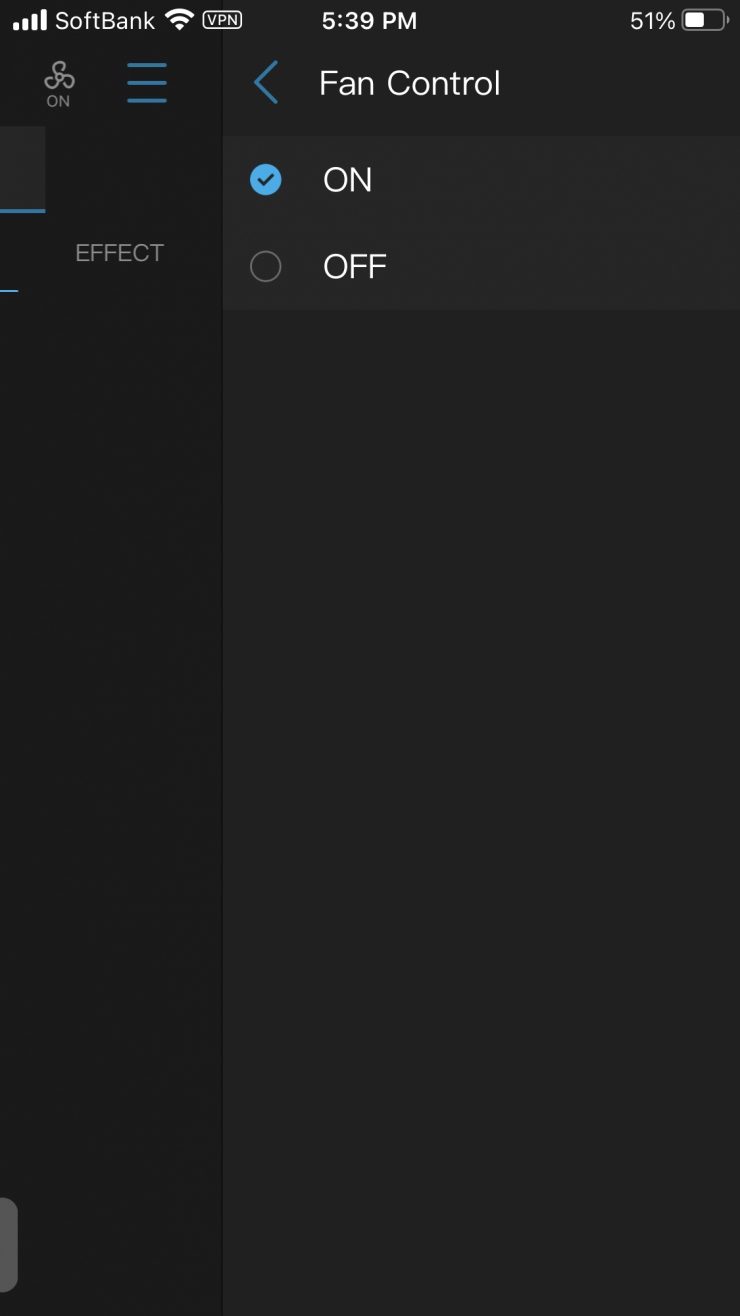
You can also choose to turn the fan on or off or change the address of the fixture.
Operating Modes
The light only has two operating modes that you can choose from:
- CCT Mode
- Effect Mode
CCT Mode

This is the mode most people are going to use. In the CCT Mode you can adjust the Kelvin color temperature from 2700K to 6500K.
The fixture doesn’t feature any continuously variable (full minus green to full plus green) correction. This would have been nice if Nanlite had included this.
Effects Mode
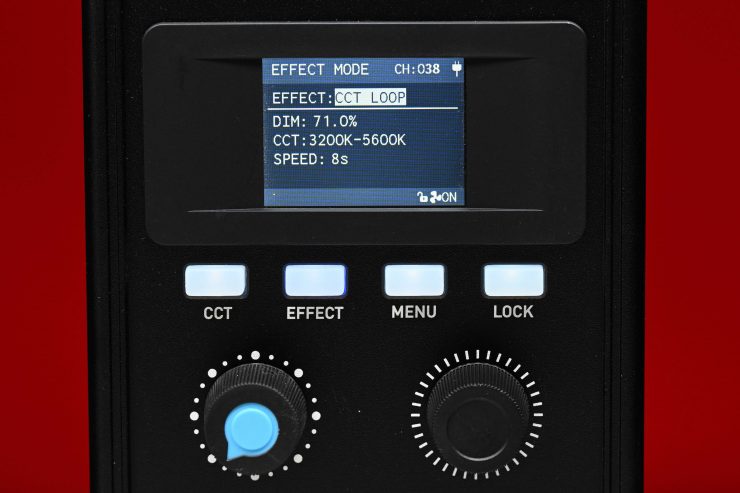
The FX mode lets you recreate a few lighting effects that can be handy for certain scenarios. The effects include:
- CCT Loop
- INT Loop
- Flash
- StorPaparazzi
- Bab Bulb
- Explosion
- Pulse
- TV
- Candle/Fire
- Firework
- Welding
All the effects modes can be individually adjusted which allows for a lot of creative freedom.
How does the Nanlite Forza 720B compare to the Aputure LS 600x Pro?
| Nanlite Forza 720B | Aputure LS 600x Pro | |
| CCT | 2700-6500K | 2700-6500K |
| +/- GM | No | No |
| Effects | Yes | Yes |
| Mount | Bowens-S Mount | Bowens-S Mount |
| Reflector Beam Angle | 55° | 55° |
| Power Draw | 800W | 720W |
| App Control | Yes | Yes |
| Battery Power | Yes | Yes |
| Total Weight | 21 lb / 9.5 kg | 22.62 lb / 10.26 kg |
As you can see, at least on paper, both the Nanlite and the Aputure are very, very similar.
Photometrics
So now let’s get to the photometric results. I always test lights in this way so that I get a reference to how they compare to other fixtures. Results only tell part of the story and should never be used alone to judge a light. I have found from extensive testing over the years that certain lights that have good photometric results don’t always look good, and lights that have worse photometric scores can sometimes look better than their results indicate.
You need to look at all of the photometric results to get an accurate assessment of a light. Looking at just one set of results is like reading one chapter in a book and skipping the rest.
Different lights can also look different depending on what camera you happen to be using.
Output & Color Temperature Accuracy
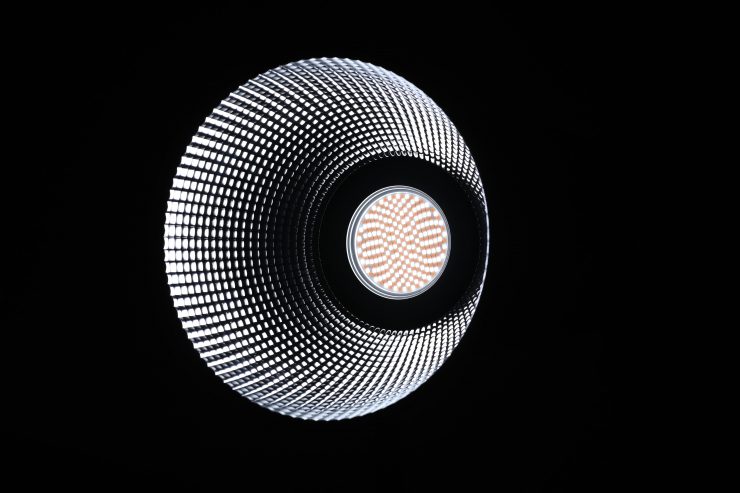
I tested the Nanlite 720B using a Sekonic C-800 Spectrometer to find out how much output the light had and how accurate the Kelvin color temperature reproduction was. All readings are taken at a distance of 1m (3.28ft) in a controlled environment. In the case of readings that were done with the reflector being used, these measurements were taken from the edge of the reflector and not from the COB.
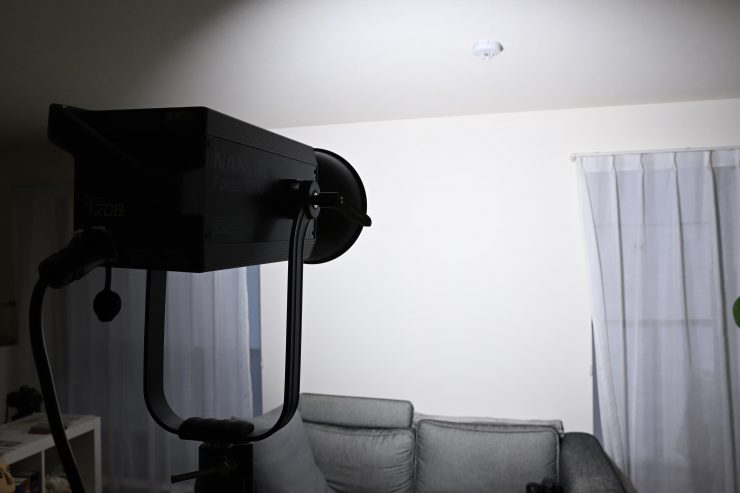

Reflector 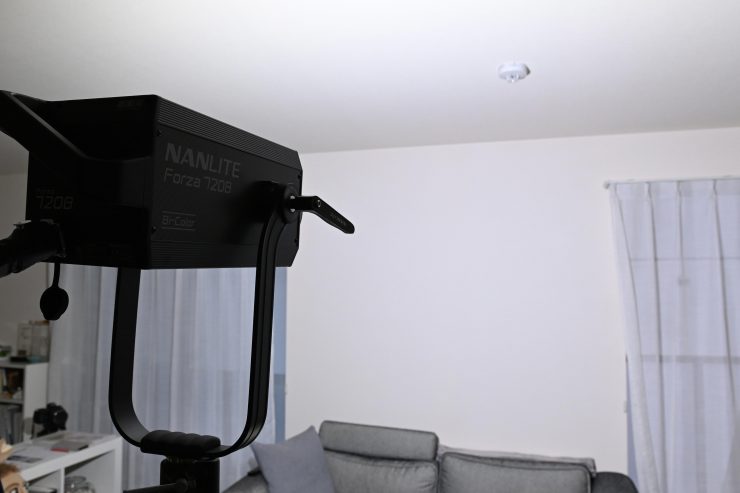
No Reflector
What you clearly need to know upfront is that when you use the reflector there is no big hot spot in the middle like you see with some other COB spotlights. The output figures when using the reflector represent an accurate indication of what you will actually get. I have reviewed some high-powered spotlights where the output figures are very deceiving because the lights had a massive hotspot when using a reflector. This is a problem with the Hyper Reflector that comes with the Aputure LS 600x/600d Pro.
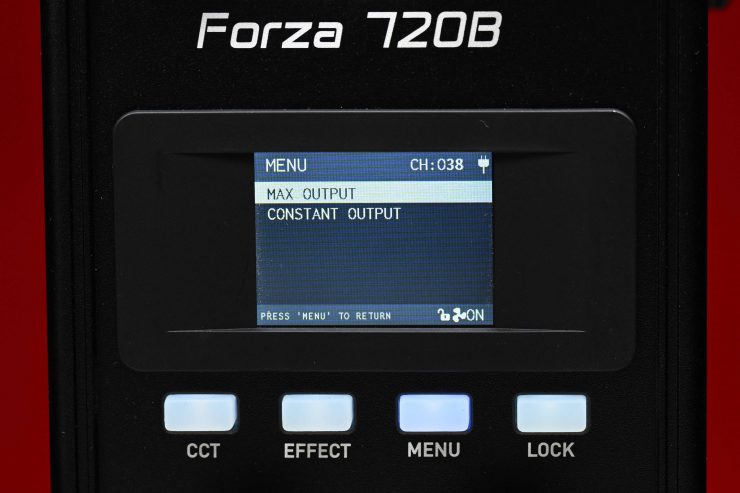
The Forza 720B has two output modes, High Output and Constant Output.
5600K High Output (55° Reflector)
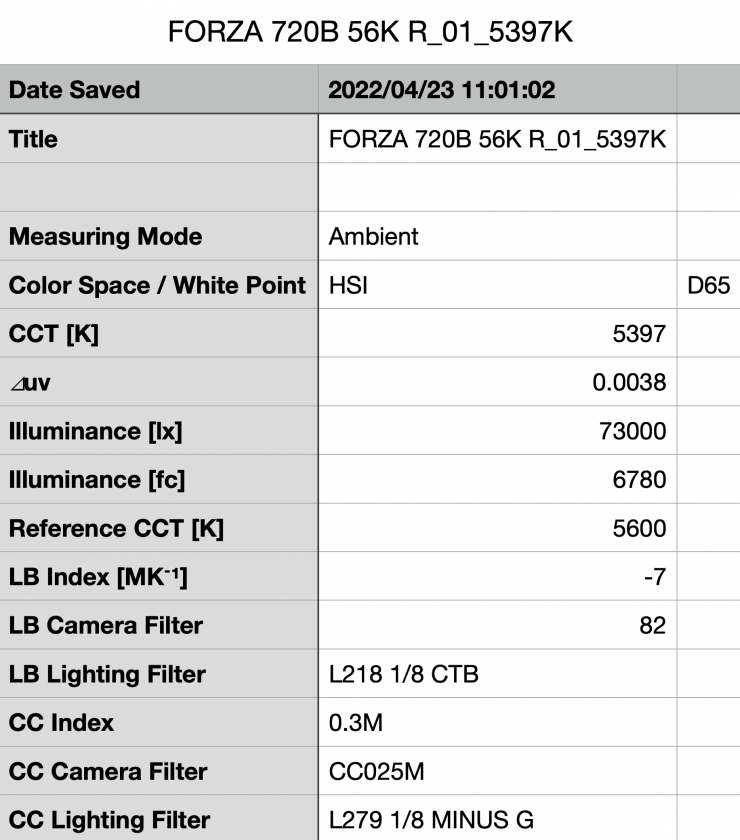
Above you can see that the Forza 720B recorded an output of 73,000 lx (6,780 fc) when the reflector was used.
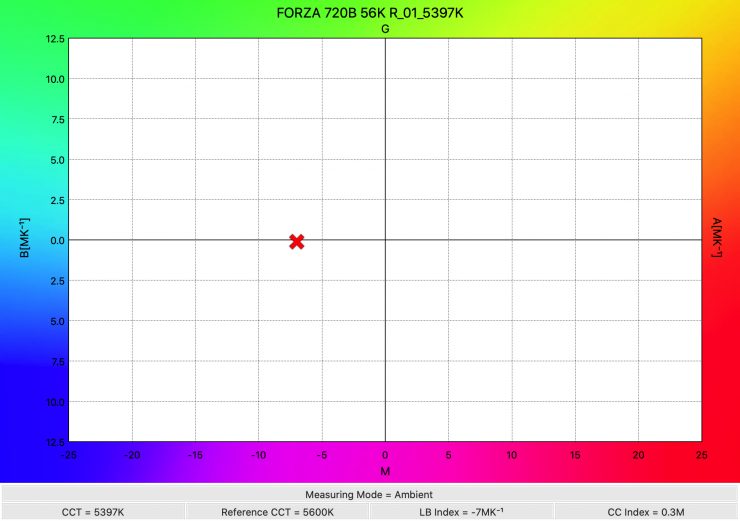
The light recorded a Kelvin color temperature reading of 5397K which was more than 200K off being a 5600K source light.
3200K High Output (55° Reflector)
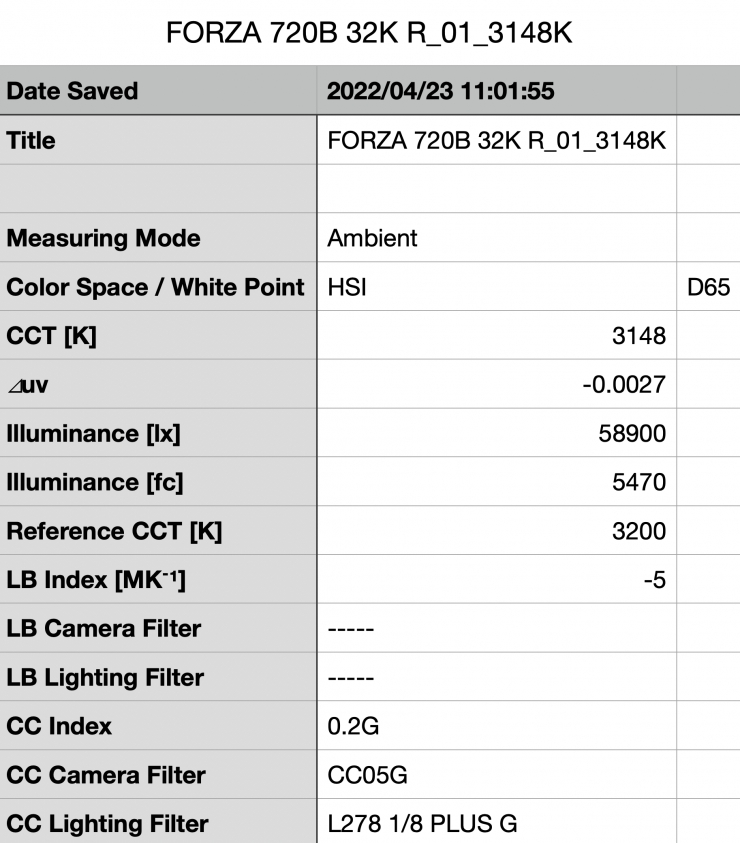
Above you can see that the Forza 720B recorded an output of 58,900 lx (5470 fc) when the reflector was used and the light was set at 3200K. This was 19.3% less than what it output at 5600K.
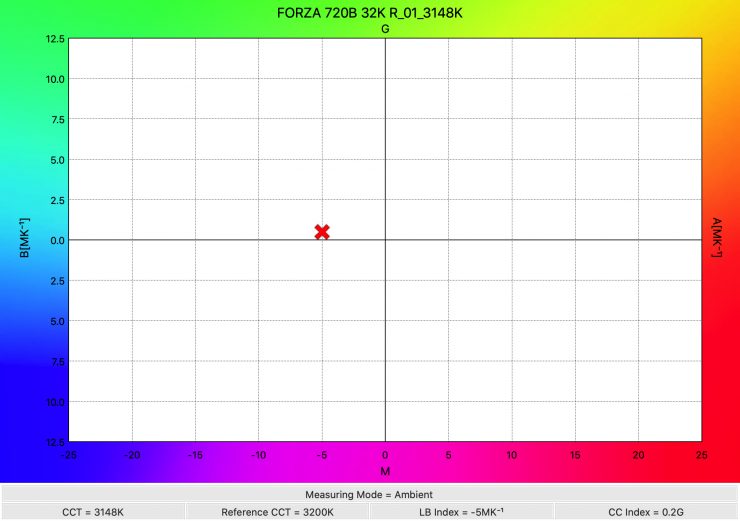
The light recorded a Kelvin color temperature reading of 3148K which was very good for a 3200K source light.
So how does this compare to the Aputure LS 600x Pro? Well, below you can see:
5600K (55° Reflector)
| OUTPUT | CCT | |
| Nanlite Forza 720B | 73,000 lx | 5397K |
| Aputure LS 600x Pro | 68,400 lx | 5397K |
3200K (55° Reflector)
| OUTPUT | CCT | |
| Nanlite Forza 720B | 58,900 lx | 3148K |
| Aputure LS 600x Pro | 49,600 lx | 3064K |
What you clearly need to remember is that the Nanlite draws 80W more than the Aputure, so you would expect it to be brighter. The Forza 720B is only 6.3% brighter than the Aputure when used at 5600K and 15.8% brighter at 3200K. In saying that, the Hyper Reflector that comes with the Aputure LS 600x Pro has a very noticeable hotspot, so the readings will appear higher than they actually are.
Interestingly enough, the Nanlite and the Aputure had the exact same Kelvin color temperature reading at 5600K, however, the Nanlite had a better reading at 3200K.
5600K Constant Output (55° Reflector)
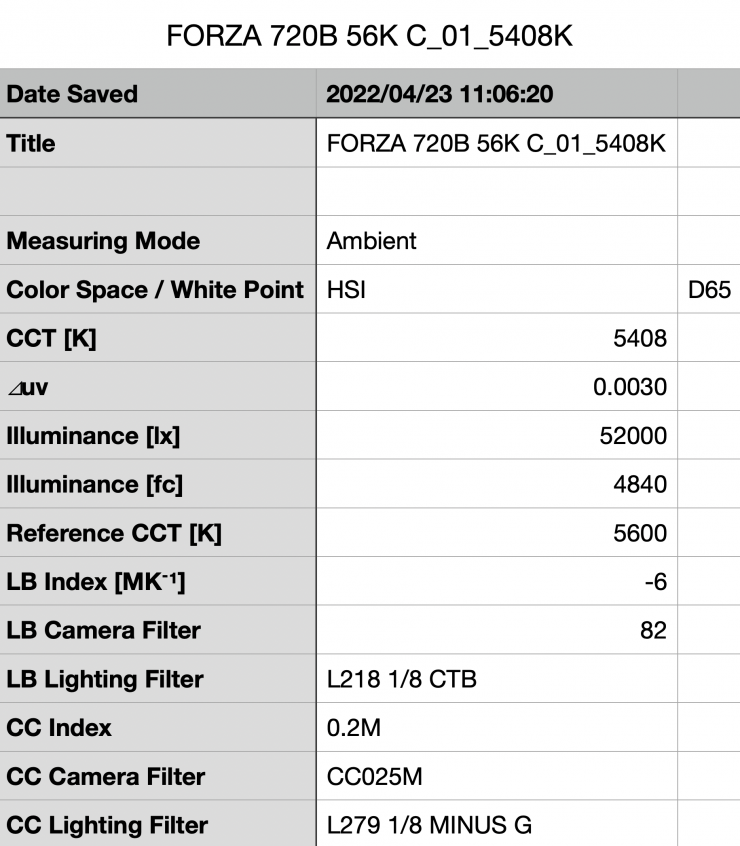
Above you can see how much output the light provided if I set the Forza 720B to Constant Output instead of High Output. The light recorded an output of 52,000lx (4,840 fc). This was 28.76% less than when you set the light to High Output.
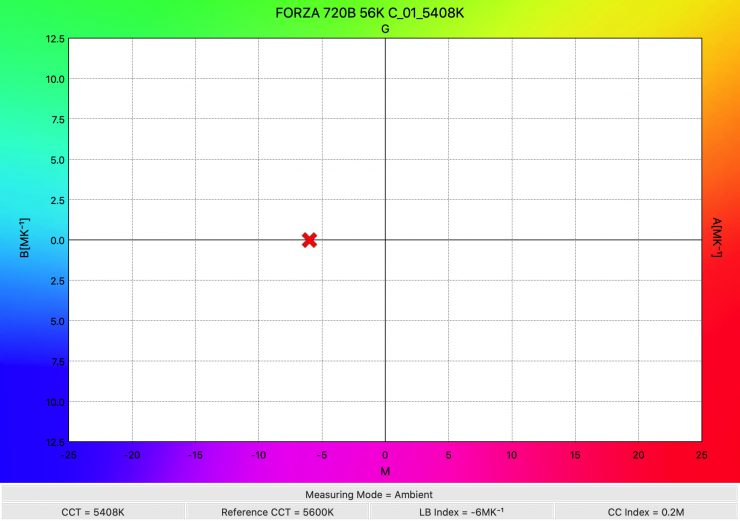
As far as Kelvin color temperature accuracy goes, it recorded a reading of 5408K which was very similar to what it recorded when set in the High Output mode. This clearly tells me that the light isn’t getting any more Kelvin color temperature accurate when used in the Constant Output mode.
3200K Constant Output (55° Reflector)
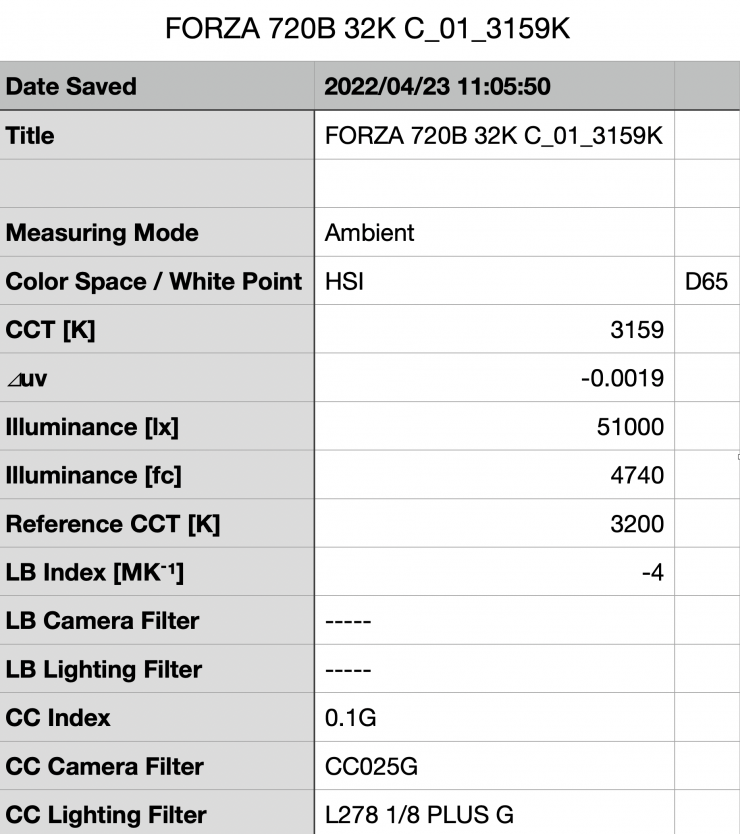
Above you can see how much output the light provided if I set the Forza 720B to Constant Output instead of High Output. The light recorded an output of 51,000lx (4,840 fc). This was 1.96% less than when you set the light to High Output.
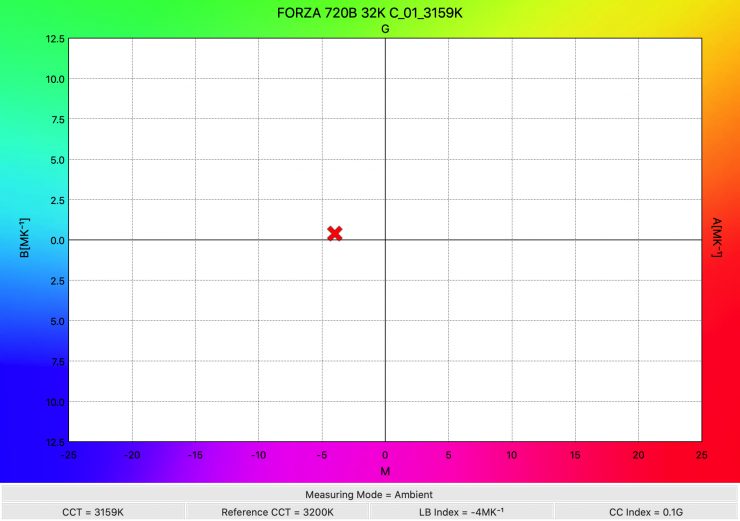
As far as Kelvin color temperature accuracy goes, it recorded a reading of 3159K which was very similar to what it recorded when set in the High Output mode. This clearly tells me that the light isn’t getting any more Kelvin color temperature accurate when used in the Constant Output mode.
5600K High Output Open Face
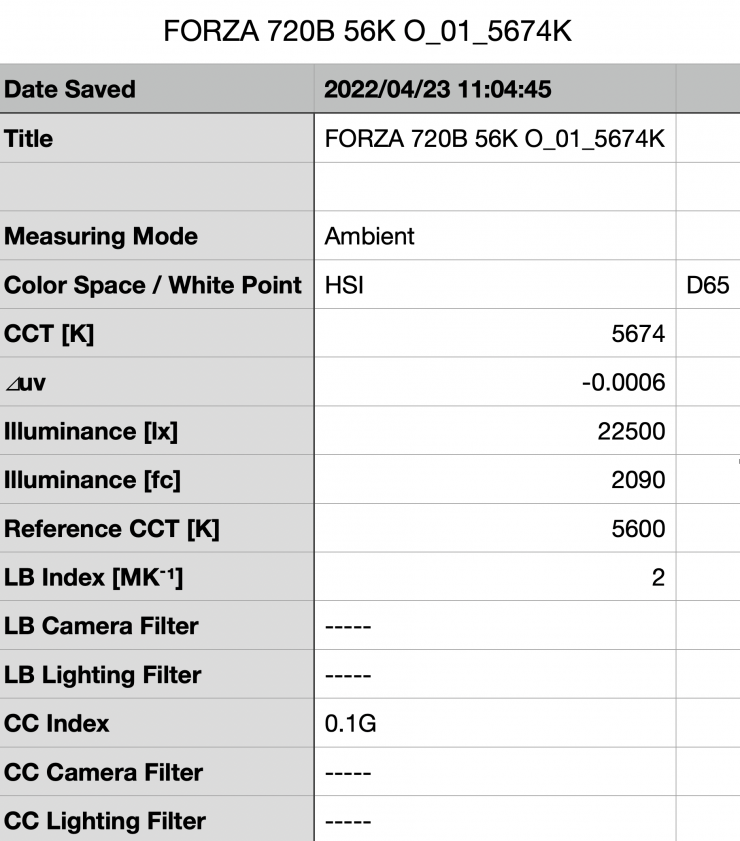
Above you can see the lights output when used open face was 22,500 lx (2,090 fc). This was 69.17% less than when the light is used with its reflector.
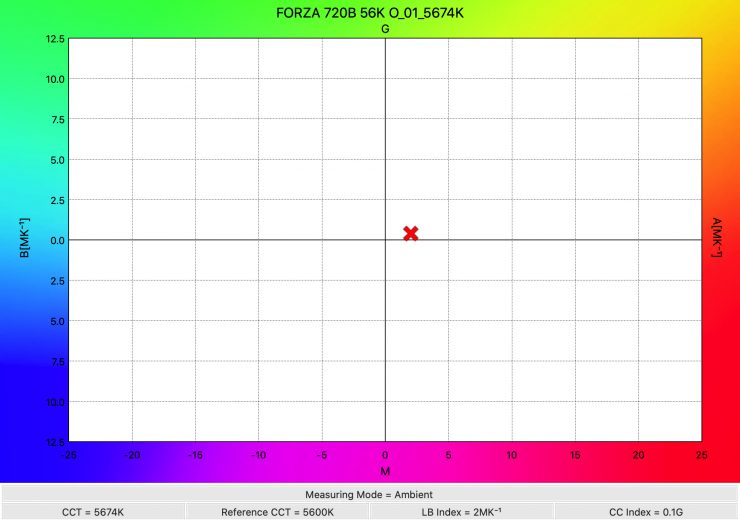
As far as Kelvin color temperature accuracy goes, it recorded a pretty accurate reading of 5674K. This was better than the 5397K it recorded when you use the reflector. This also tells me that the reflector is actually altering the Kelvin color temperature of the light.
3200K High Output Open Face
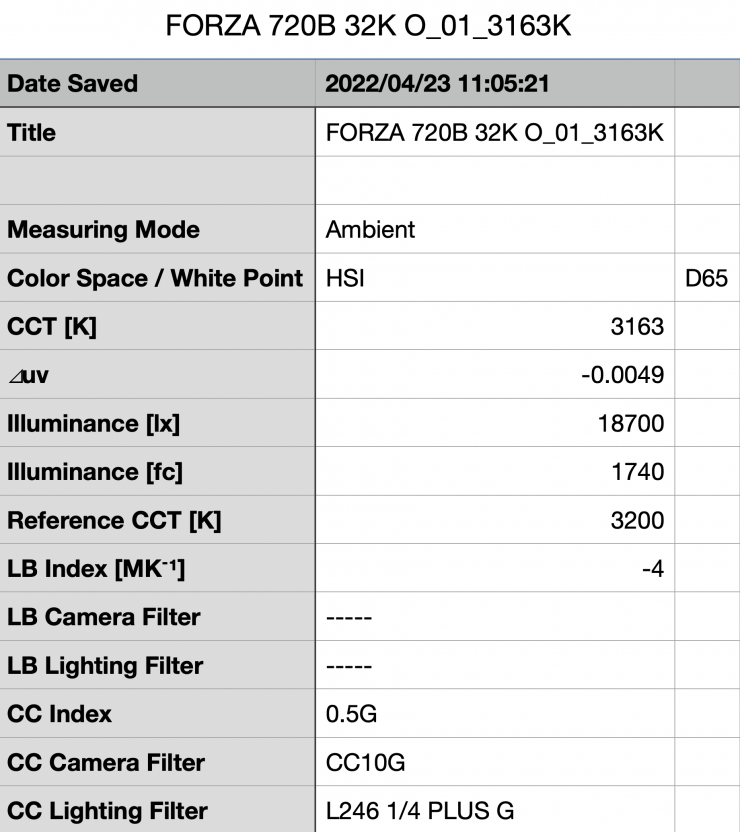
Above you can see the lights output when used open face was 18,700 lx (1,740 fc). This was 68.25% less than when the light is used with its reflector.
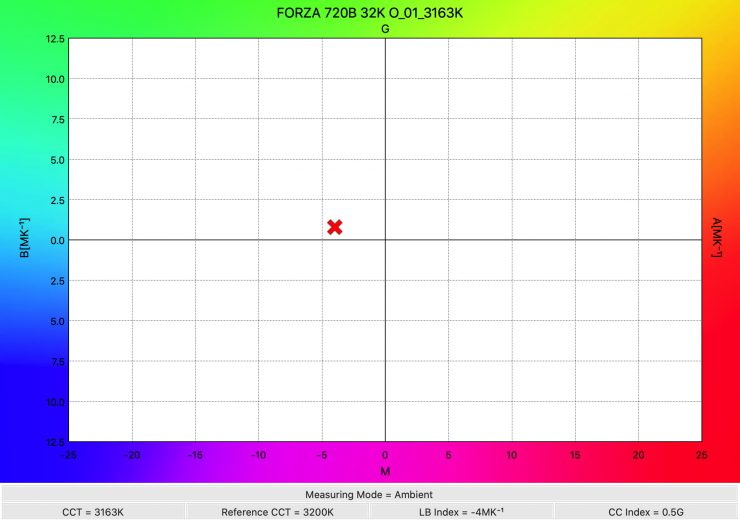
As far as Kelvin color temperature accuracy goes, it recorded a very accurate reading of 3163K. This was very similar to the 3148K it recorded when you use the reflector.
So how does this compare to the Aputure LS 600x Pro? Well, below you can see:
5600K (Open Face)
| OUTPUT | |
| Nanlite 720B | 22,500 lx |
| Aputure LS 600x Pro | 18,600 lx |
3200K (Open Face)
| OUTPUT | |
| Nanlite 720B | 18,700 lx |
| Aputure LS 600x Pro | 13,400 lx |
The Forza 720B has 17.33% more output than the Aputure at 5600K and 28.34% more output at 3200K.
Kelvin color consistency & linear output when dimming the light
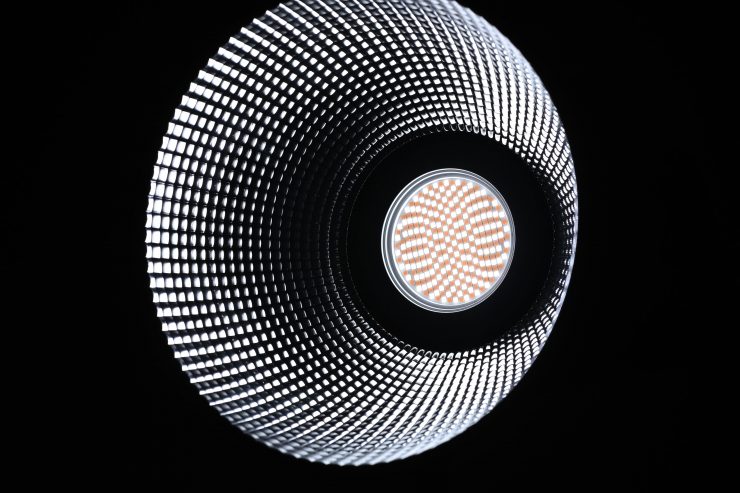
Now, what you should always do when testing lights is to see if the Kelvin color temperature remains consistent when dimming the light. Just because you set a light at say 5600K, that doesn’t mean that the Kelvin color temperature will remain stable as you start dimming the fixture down. I also wanted to see how linear the dimming curve was.
I decided to do a series of tests at 100%/75%/50%/25%10% to see if the Kelvin color temperature being recorded changed. This was done at a distance of 1m using a Sekonic C-800. These tests were done at 5600K with the reflector and the light set in the High Output mode.
Nanlite Forza 720B
| CCT READING | OUTPUT | INTENSITY % |
| 5397K | 73,000 lx | 100 |
| 5379K | 50,100 lx | 75 |
| 5354K | 33,300 lx | 50 |
| 5329K | 16,800 lx | 25 |
| 5319K | 6,960 lx | 10 |
The Nanlite Forza 720B is able to maintain very good Kelvin color consistency as you start dimming the fixture. My testing showed that the Kelvin color temperature only varied by 78K. These are good results and it shows me that you can dim this fixture down without having to worry about big changes in Kelvin color temperature.
As far as how linear the output is when you start dimming the light, at 50% output it had 54.1% less output than when used at 100%. At 25% it had 76.9% less output than when used at 100%. At 10% output it had 90.46% less output than when used at 100%. This shows me that the light’s dimming curve is very linear.
Color Rendering
5600K Reflector (High Output)
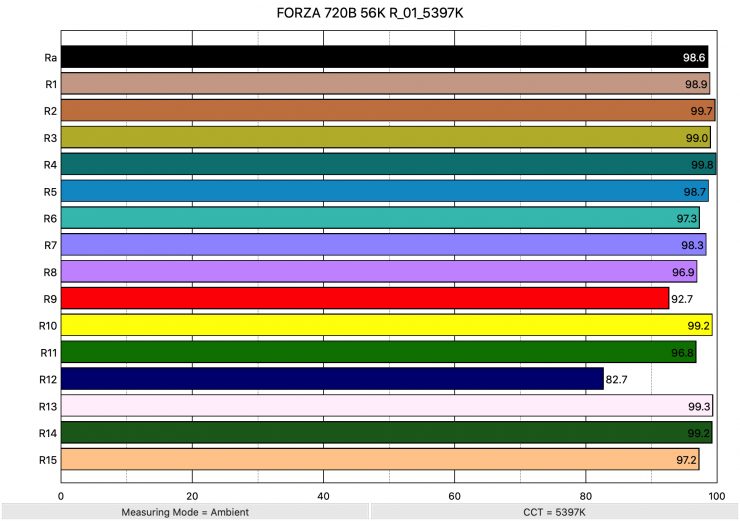
So now that we have seen how much output the Nanlite Forza 720B produces, how does it perform when it comes to replicating accurate colors? Above you can see that when the light was set at 5600K using the standard reflector it recorded an average CRI (R1-R8) of 98.6 and an extended CRI (R1-R15) of 97.04. For replicating accurate skin tones it recorded for R9 92.7 (red), 99.3 for R13 (closest to caucasian skin tones), and 97.2 for R15 (closest to Asian skin tones). These are excellent results and some of the best I have seen from any light I have tested. R12 (Blue) was the only score under 90.
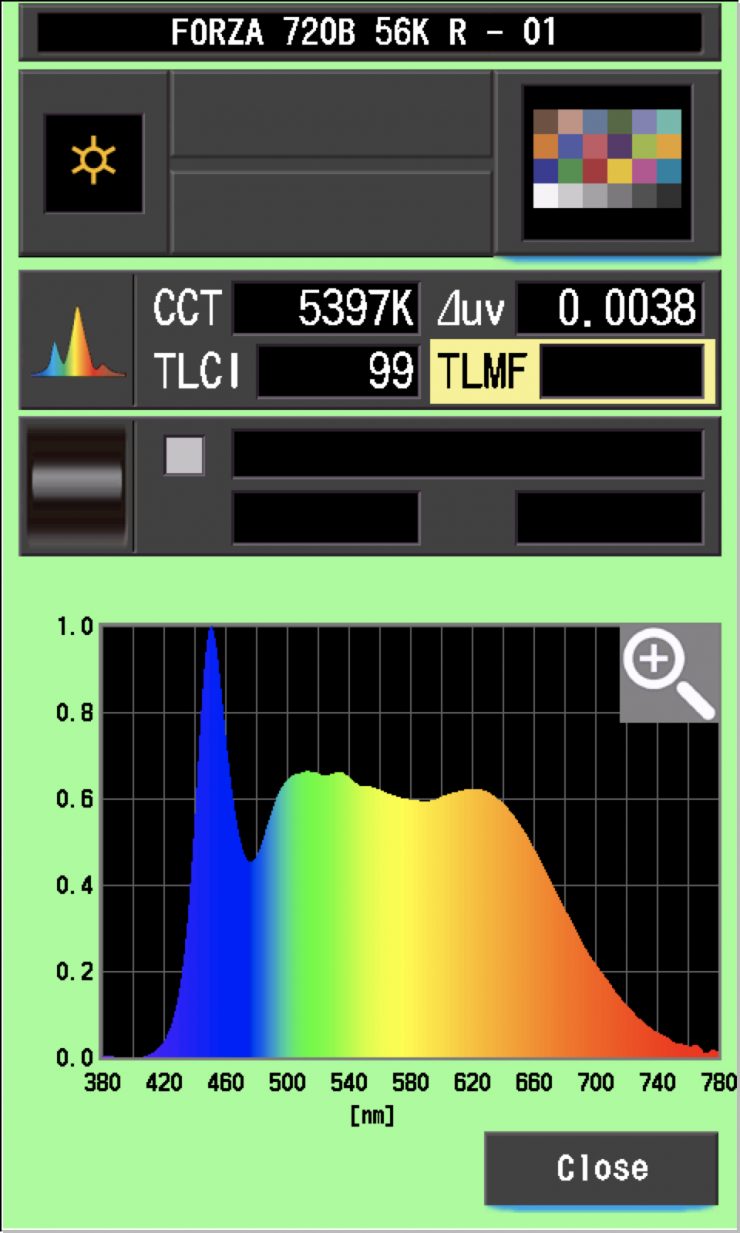
The light recorded a TLCI score of 99.
So how do these results for the Nanlite Forza 720B compare against the Aputure LS 600x Pro? Below you can see:
| EXTENDED CRI | |
| Nanlite Forza 720B | 97.04 |
| Aputure LS 600x Pro | 95.34 |
As you can see the Nanlite had more accurate color rendering scores when used at 5600K.
3200K Reflector (High Output)
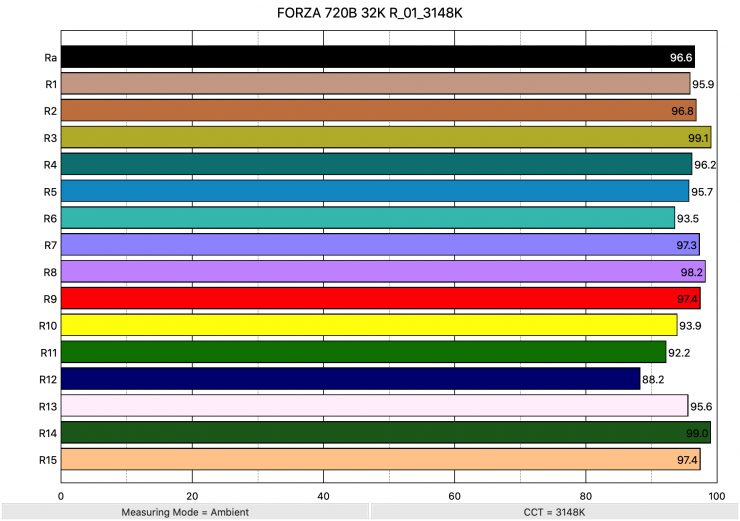
Above you can see that when the light was set at 3200K using the standard reflector it recorded an average CRI (R1-R8) of 96.5 and an extended CRI (R1-R15) of 96.22. For replicating accurate skin tones it recorded for R9 97.4 (red), 95.6 for R13 (closest to caucasian skin tones), and 97.4 for R15 (closest to Asian skin tones). These are all excellent results. Again, Blue (R12) was the only score under 90.
The consistency of this color rendering at both 3200K and 5600K is impressive.
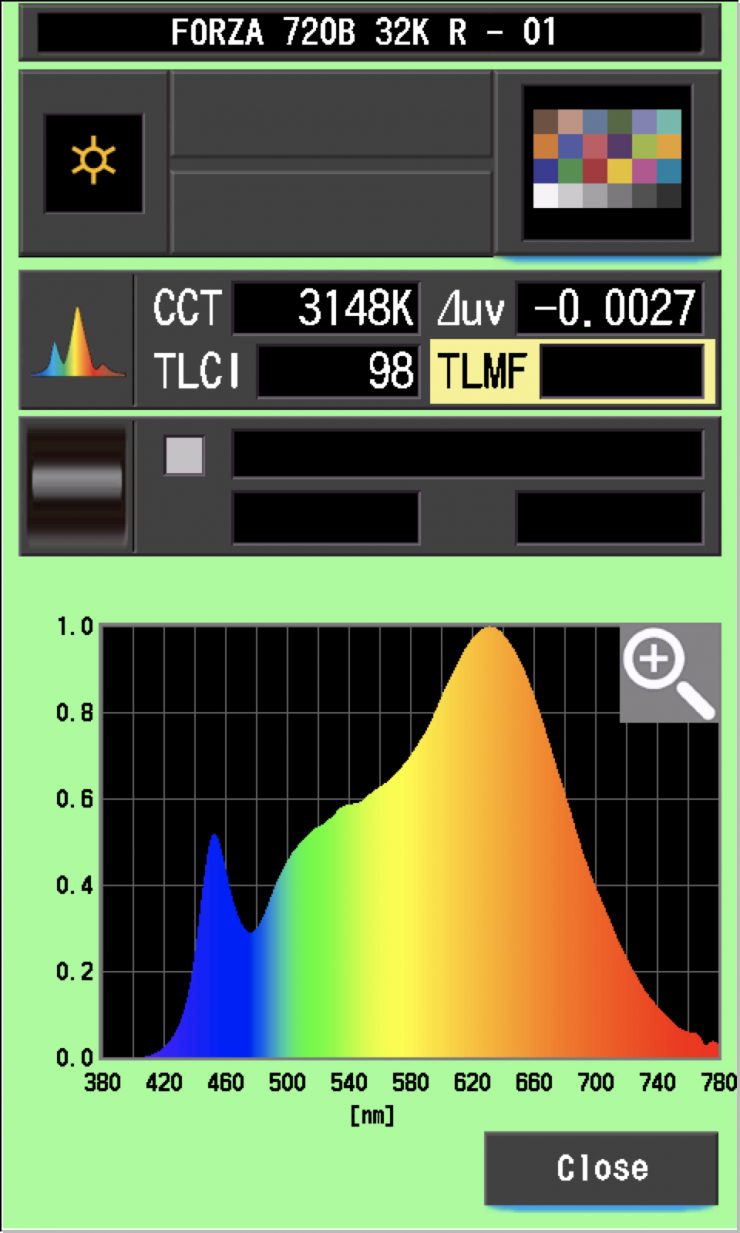
The light recorded a TLCI score of 98.
So how do these results for the Nanlite Forza 720B compare against the Aputure LS 600x Pro? Below you can see:
| EXTENDED CRI | |
| Nanlite Forza 720B | 96.22 |
| Aputure LS 600x Pro | 96.71 |
As you can see the scores are basically identical., with the Aputure having a slight edge.
I was also curious to see if the Constant Output mode produced better color rendering scores than the High Output mode. So did they?
5600K Reflector (Constant Output)
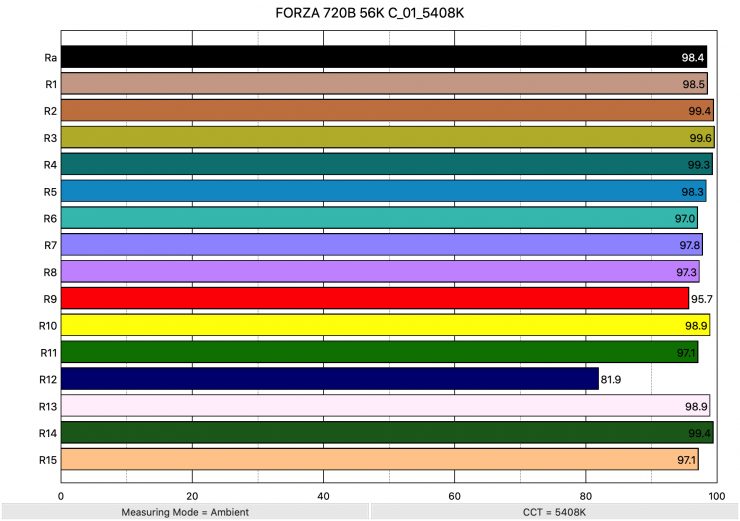
Above you can see that when the light was set at 5600K using the standard reflector and set to Constant Output it recorded an average CRI (R1-R8) of 98.4 and an extended CRI (R1-R15) of 97.08. For replicating accurate skin tones it recorded for R9 92.7 (red), 98.9 for R13 (closest to caucasian skin tones), and 97.1 for R15 (closest to Asian skin tones).
These scores were very, very similar to when using the High Output mode and it shows me that the High Output mode does not affect color rendering accuracy.
CC Index & ⊿uv
The CC Index displays the CC correction value and whether any magenta or green need to be added or subtracted. 1 CC corresponds to 035 Kodak CC values or 1/8 Rosco filter values. Any reading less than +1.00 or -1.00 and you’re probably not going to need to make any kind of adjustment. The ⊿uv is the value to show how much this light is away from being an ideal light source (black body radiation = incandescent lamp). As with the CC Index you want this number to theoretically be zero. Kelvin is not a linear value, so we need to convert from Kelvin to MK-1 to compare the values of color temperature. To calculate from Kelvin to Mired is MK-1= 1*1000000/Kelvin. While this may sound confusing, it is the only way of measuring if the Kelvin shift is significant enough to warrant having to use a filter for correction. Below are the results for the Nanlite Forza 720B:
Kelvin Vs MK-1
| Kelvin | Difference in K | MK-1 | Difference in MK-1 | |
| SET VALUE | 2700K | 0 | 370.37 | 0 |
| ACTUAL READING | 2686K | 14 | 372.30 | -1.93 MK-1 |
| SET VALUE | 3200K | 0 | 312.5 | 0 |
| ACTUAL READING | 3148K | 52 | 317.66 | -5.16 MK-1 |
| SET VALUE | 4500K | 0 | 222.22 | 0 |
| ACTUAL READING | 4427K | 73 | 225.88 | -3.66 MK-1 |
| SET VALUE | 5600K | 0 | 178.57 | 0 |
| ACTUAL READING | 5397K | 203 | 185.28 | -6.71 MK-1 |
| SET VALUE | 6500K | 0 | 153.84 | 0 |
| ACTUAL READING | 6252K | 248 | 159.94 | -6.1 MK-1 |
These figures might look confusing, but what it tells me is that the light is pretty Kelvin color accurate at most temperatures. Any MK-1 score that is under -9/9 means you wouldn’t have to use any color correction gels. The MK-1 scores for this light were pretty decent at all Kelvin color temperature settings.
As a comparison, the Aputure LS 600x Pro recorded an MK-1 score of -13.87 when used at 3200K and -6.71 when used at 5600K. -13.87 MK-1 is not a good score and you would need to use a color correction gel with the Aputure when it is set at 3200K.
In saying that, these are all just technical scores and technical data doesn’t always reflect real-world performance.
CC INDEX & ⊿uv
| CC INDEX | ⊿uv | |
| 2700K | 0 | 0.0011 |
| 3200K | 0.2G | -0.0027 |
| 4500K | 0.1G | -0.0019 |
| 5600K | 0.3M | 0.0038 |
| 6500K | 0.3M | 0.0058 |
The ⊿uv scores were ok and the light doesn’t have any real significant push towards green or magenta at any Kelvin color temperature.
TM-30
TM-30 is a relatively new color rendering standard that was developed to deal with the limitations of CRI. TM-30 looks at 99 individual colors. These 99 colors are categorized into seven groups: nature, skin color, textiles, paints, plastics, printed material, and color systems.
TM-30 scores go from 0 – 100. The higher the score, the more accurate a light is at producing colors. Any TM-30 Rf score in the ’90s is considered to be good. What is interesting and something that you need to be very aware of is that two separate light sources with the exact same CRI scores can render colors very differently. A light with a high CRI rating could have a low TM-30 score. Conversely, a light with a good TM-30 score could have a bad CRI score.
Now, there are two measurements associated with TM-30, Rf and Rg.
- Rf (Color Fidelity)
- Rg (Color Gamut)
With Rf value, ideally, you want a score in the 90’s.
With Rg value, a score below 100 indicates that the light source renders colors with less saturation than the reference source. So ideally you want this score to be above 100.
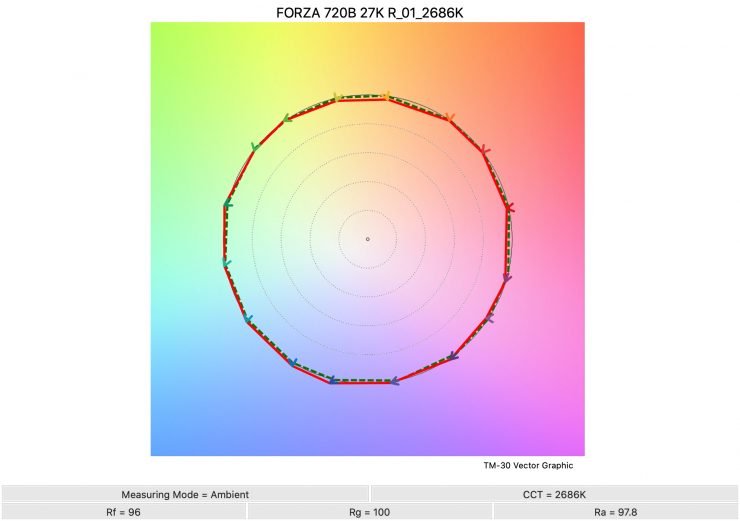

2700K 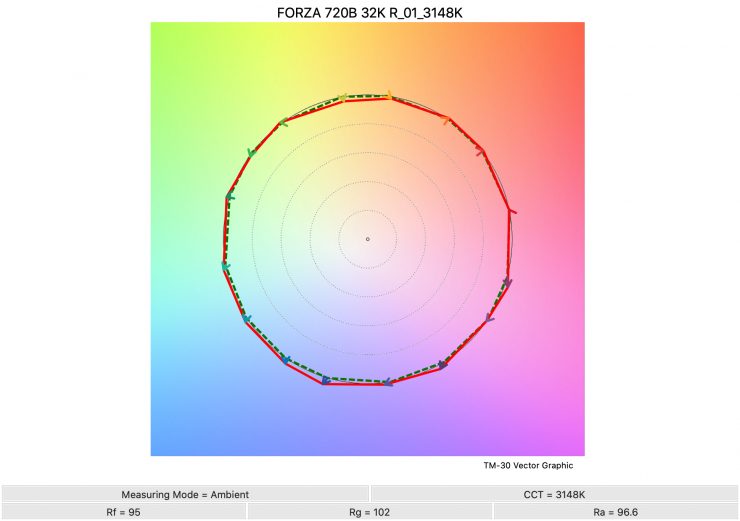
3200K 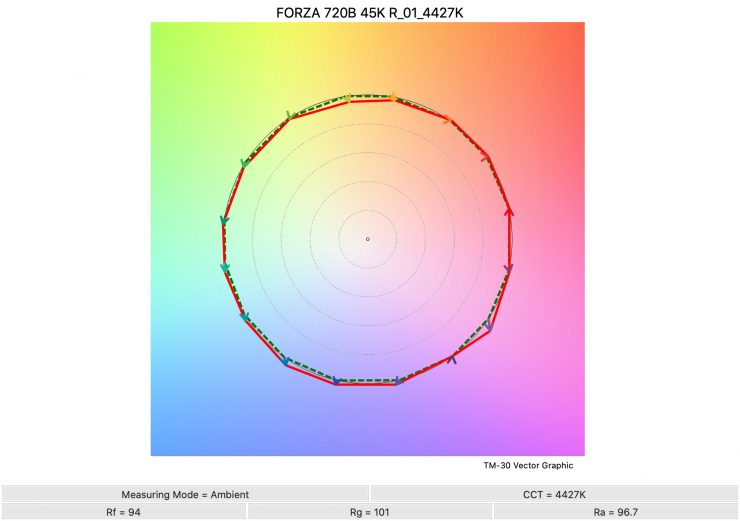
4500K 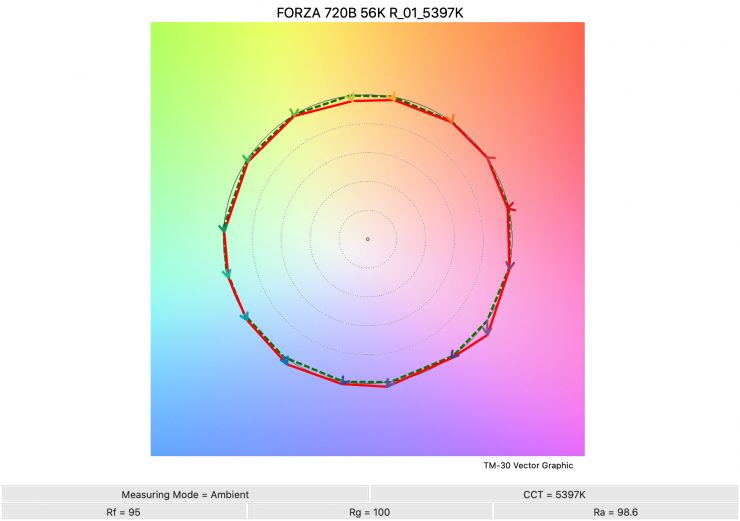
5600K 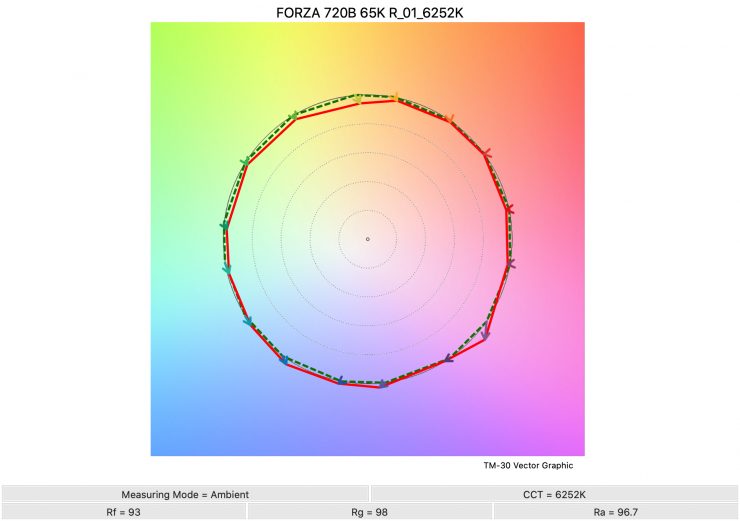
6500K
Above you can see the scores for the Nanlite Forza 720B at various Kelvin color temperatures. Below I have listed the figures as well.
| Rf | Rg | |
| 2700K | 96 | 100 |
| 3200K | 95 | 102 |
| 4500K | 94 | 101 |
| 5600K | 95 | 100 |
| 6500K | 93 | 98 |
The TM-30 scores are all really good and it shows me that the light is pretty consistent at replicating accurate colors with full saturation. Only at 6500K was it unable to achieve full saturation.
SSI
SSI (Spectral Similarity Index) was developed by the Sci-Tech Council of the Academy. SSI gives me the ability to set any light as a standard, or use predefined standards (such as CIE D55), and then give other lights an SSI score based upon how well they will match standards such as CIE D55. This way I can measure spectral response and compare it directly against an ideal light source. This is actually a much better test than recording CRI scores.
Nanlite Forza 720B 5600K
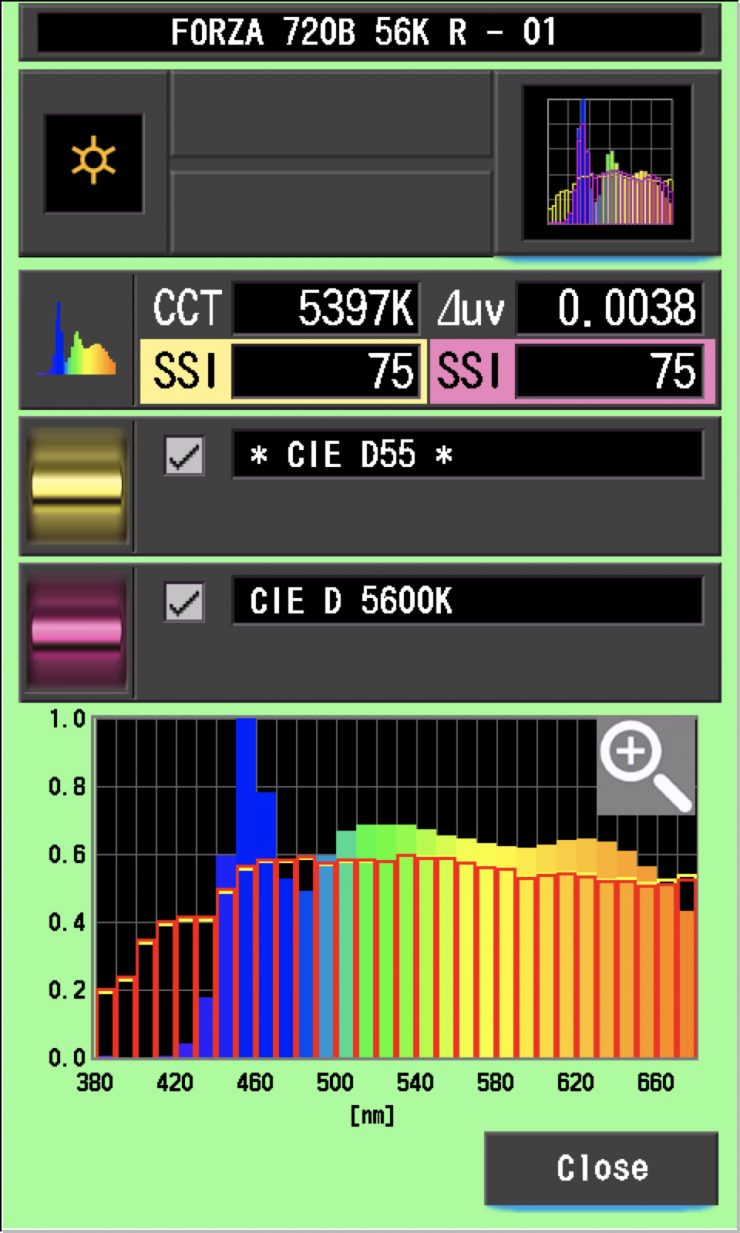
In the graph above the gold bars indicate a perfect CIE D55 source. The red bars indicate a perfect CIE D 5600K source. This lets us compare how close to a perfect 5600K lighting source the Nanlite is. A score in the low 70’s is typical for a 5600K LED source. A score in the mid 70’s is very good.
The main reason we want to record SSI scores is so we can see how well they match with other lights. As an example, I wanted to see how well the Forza 720B matched the ARRI Orbiter and Godox LA150D. Below you can see the results.
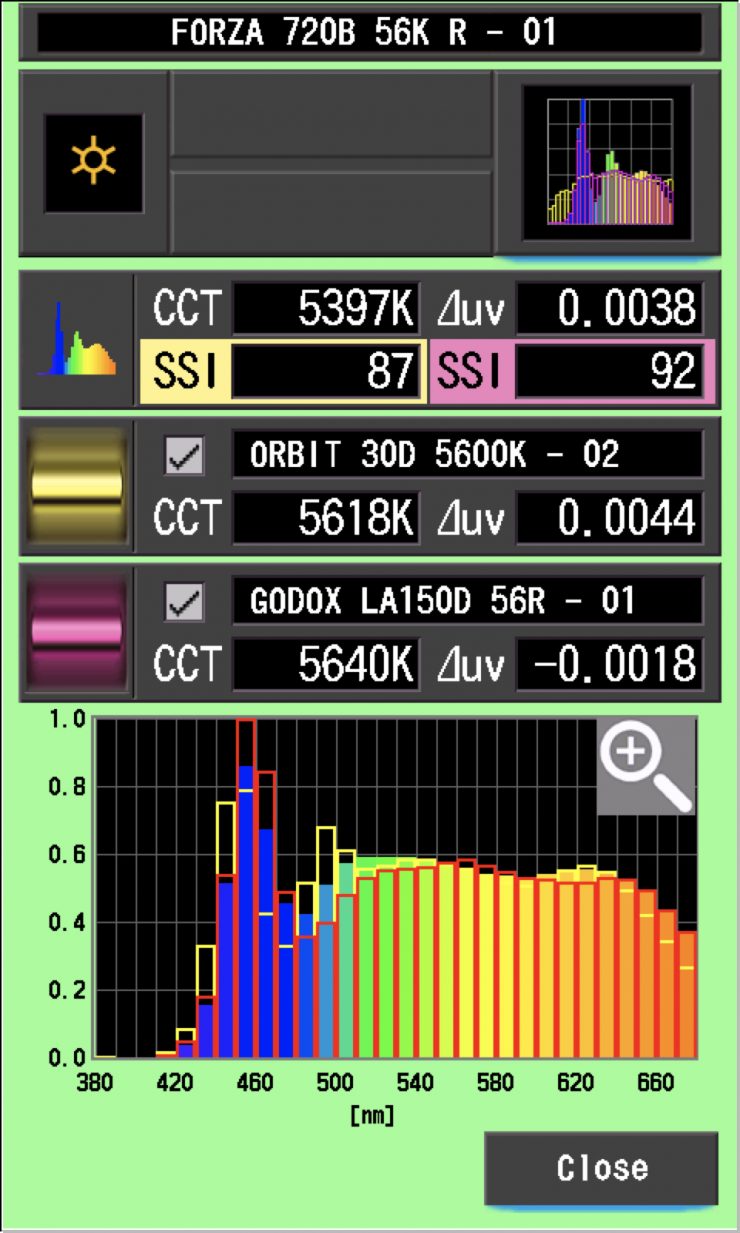
As you can see the Forza 720B is a pretty reasonable match with both the ARRI and the Godox.
Nanlite Forza 720B 3200K
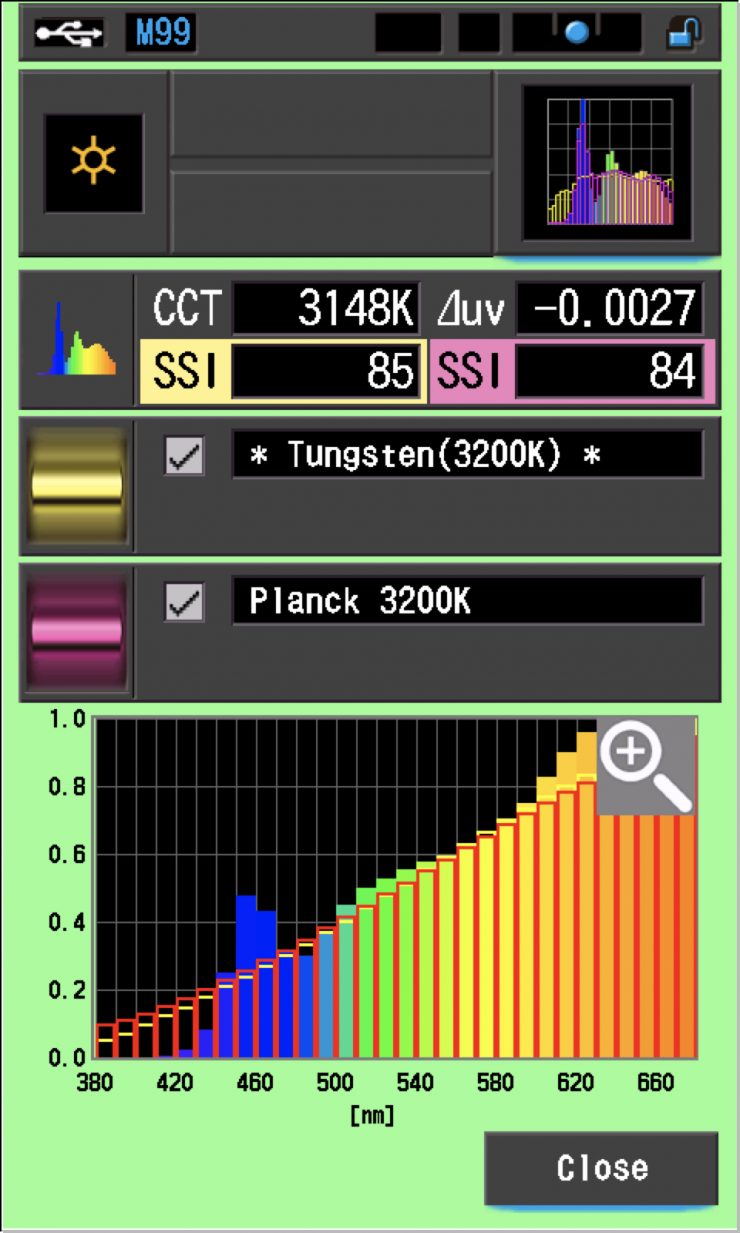
In this graph, the red bars indicate a perfect 3200K Tungsten source. The Red bars indicate a Planck 3200K source. This lets us compare how close to a perfect 3200K lighting source the Forza 720B is. A score in the low to mid-’80s is very good for a LED light trying to replicate a 3200K source.
As an example, I wanted to see how well the Forza 720B matched the ARRI Orbiter and Luxli Timpani 2. Below you can see the results.
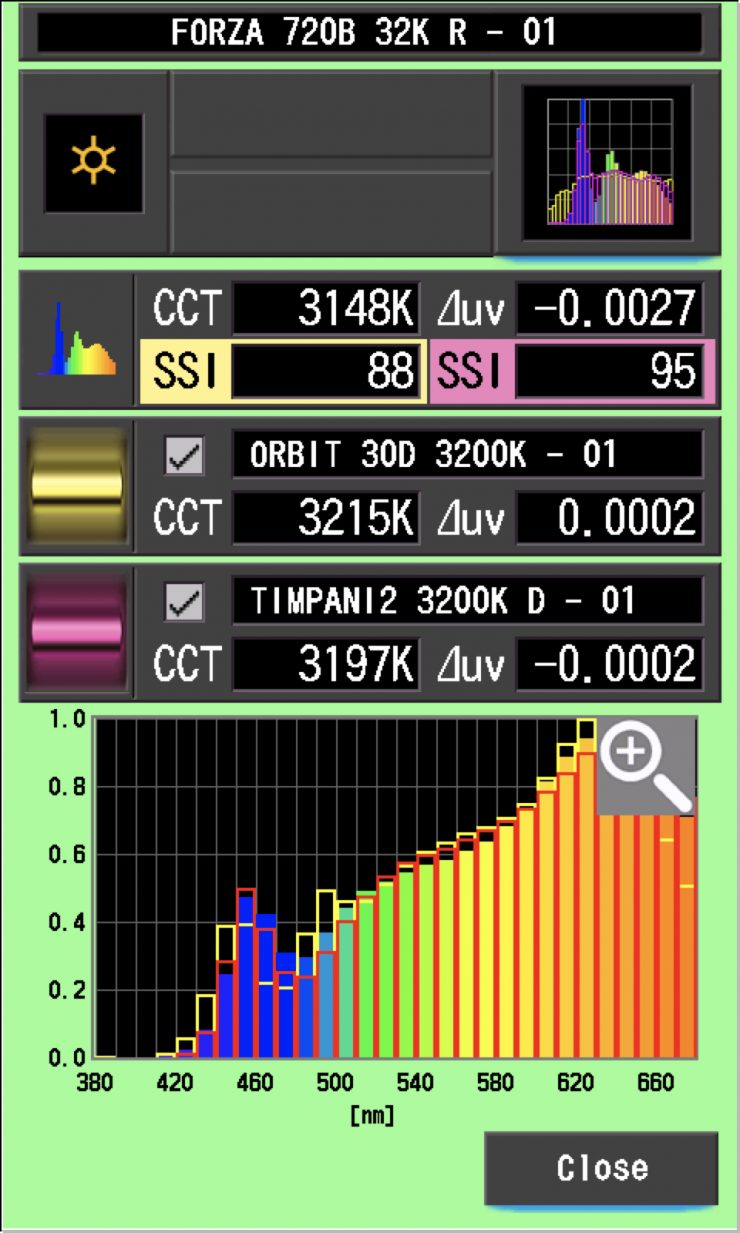
As you can see the Forza 720B is a pretty reasonable match with both the ARRI and the Luxli, however, it more closely matches the Luxli. The Orbiter and Luxli Timpani are outstanding lights at re-producing an accurate 3200K source.
SSI tests are a great way of telling you what lights you own or use will work well together.
Spectral Distribution
5600K
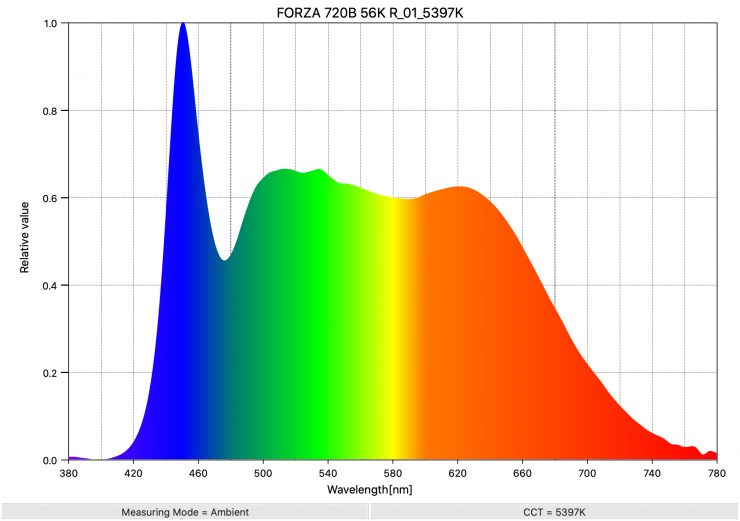
Above you can see the spectral distribution of the Nanlite Forza 720B. The spectral distribution is really good and there aren’t any spikes where there shouldn’t be.
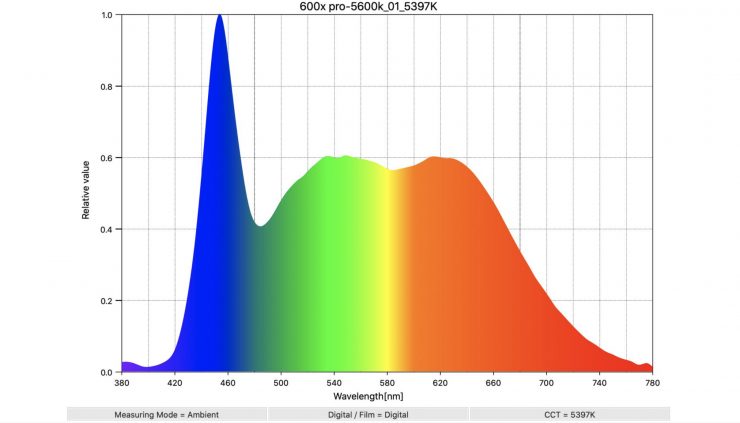
As a comparison, above you can see the spectral distribution of the Aputure LS 600x Pro when used at 5600K. As you can see the Aputure has less information in the color spectrum than the Nanlite.
3200K
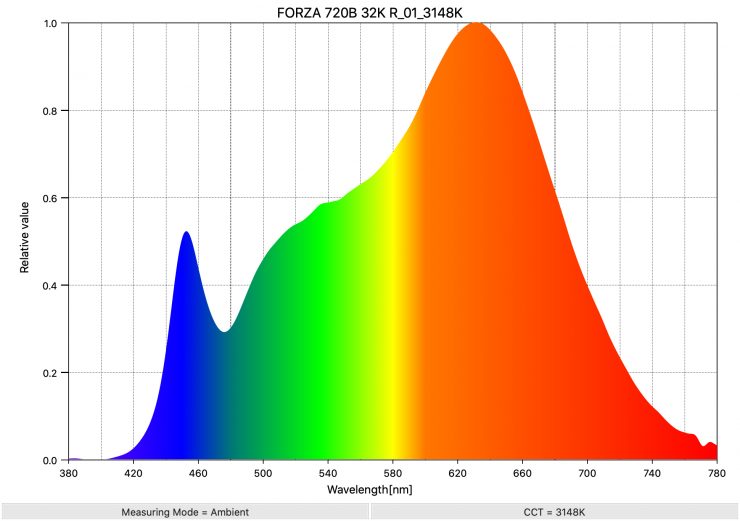
Above you can see the spectral distribution of the Nanlite Forza 720B. The spectral distribution is really good and there aren’t any spikes where there shouldn’t be.
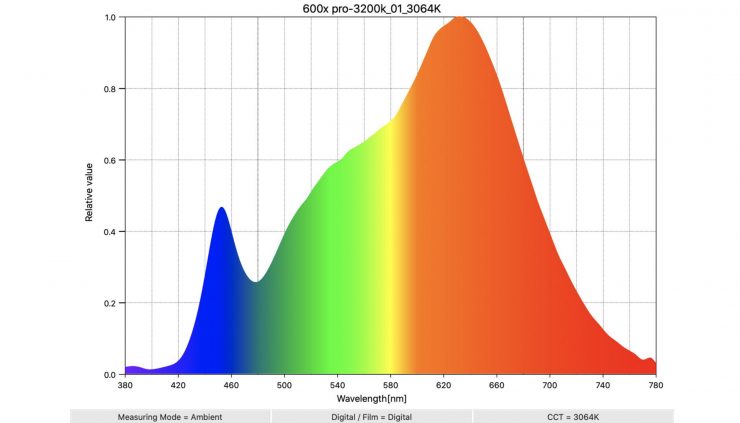
As a comparison, above you can see the spectral distribution of the Aputure LS 600x Pro when used at 5600K. As you can see the Aputure has less information in the color spectrum than the Nanlite, but they are fairly similar.
Accessories
As the Nanlite 720B uses a Bowens mount you can attach a large range of affordable accessories and modifiers. If you own multiple lights that utilize a Bowens mount you can swap and switch around accessories.
It is this versatility that has made COB lights like this that use a Bowens mount so popular.
Real-World Performance & Quality of Light
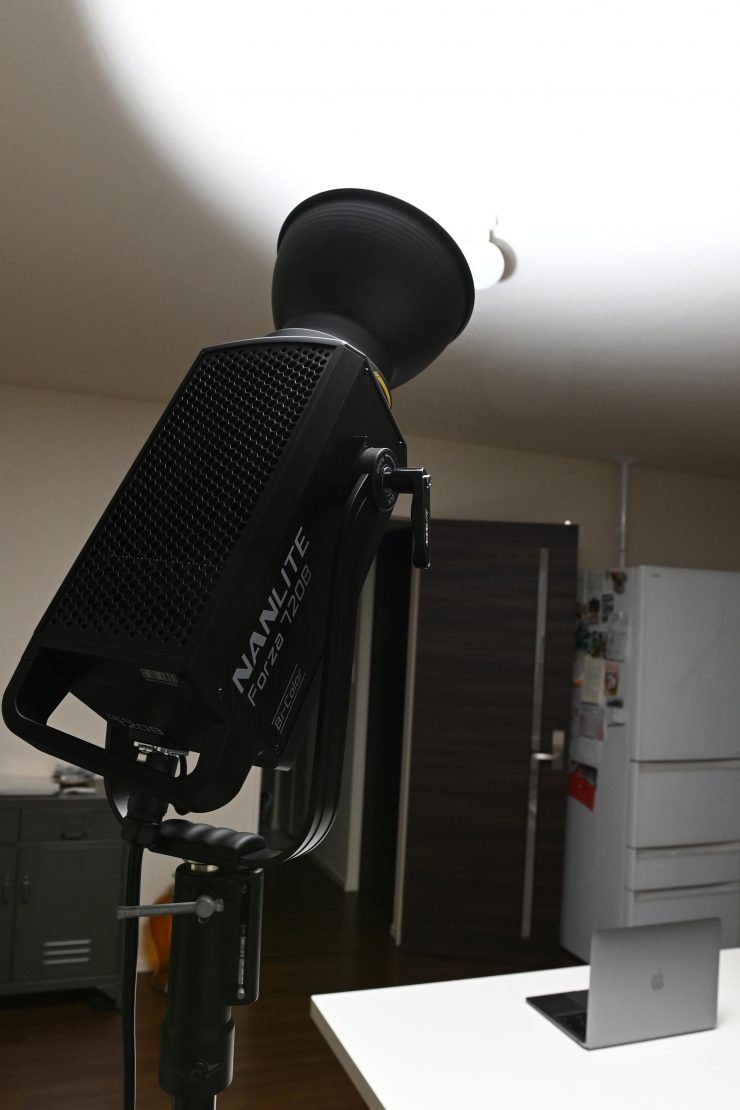
As I always say, photometric scores only tell you part of the story. So let’s find out if the scores from the Nanlite Forza 720B translate into good real-world performance.
The photometric data can only give me scientific data and it is much more important for me to see how the light looks and performs.
Unfortunately, it is very hard at the moment with the Coronavirus for me to showcase the strengths of the light. I live in Japan in an apartment so there isn’t a lot of space to do much testing. I apologize that I can’t do more!
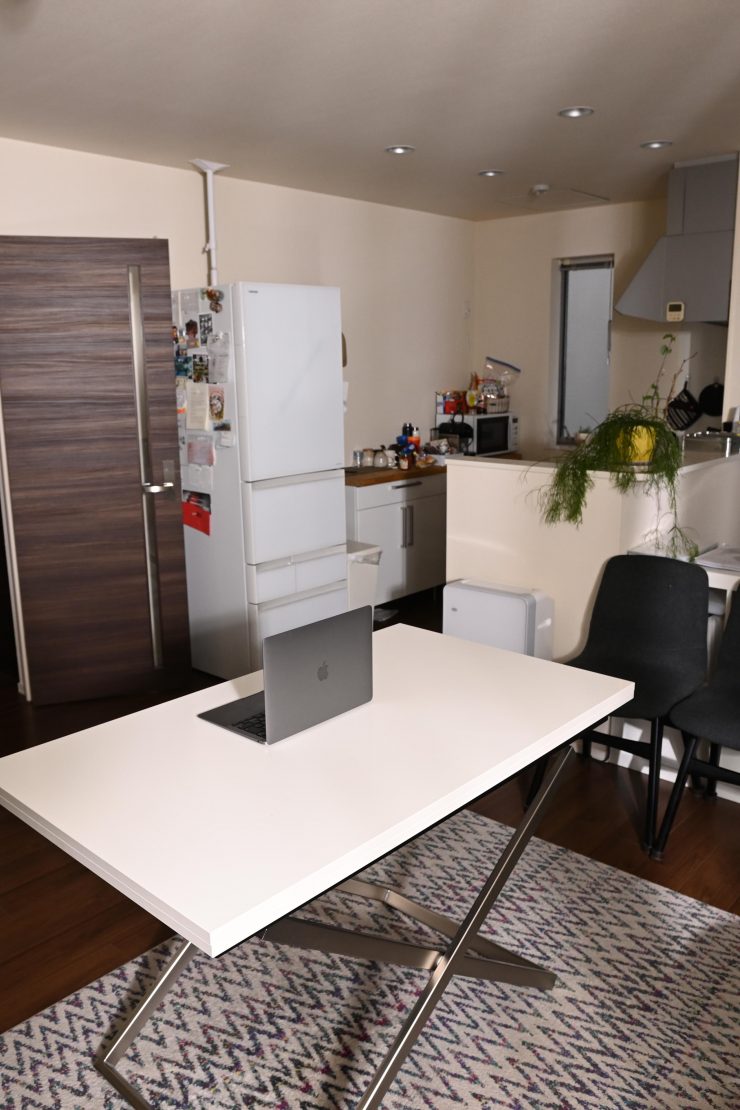

Light on 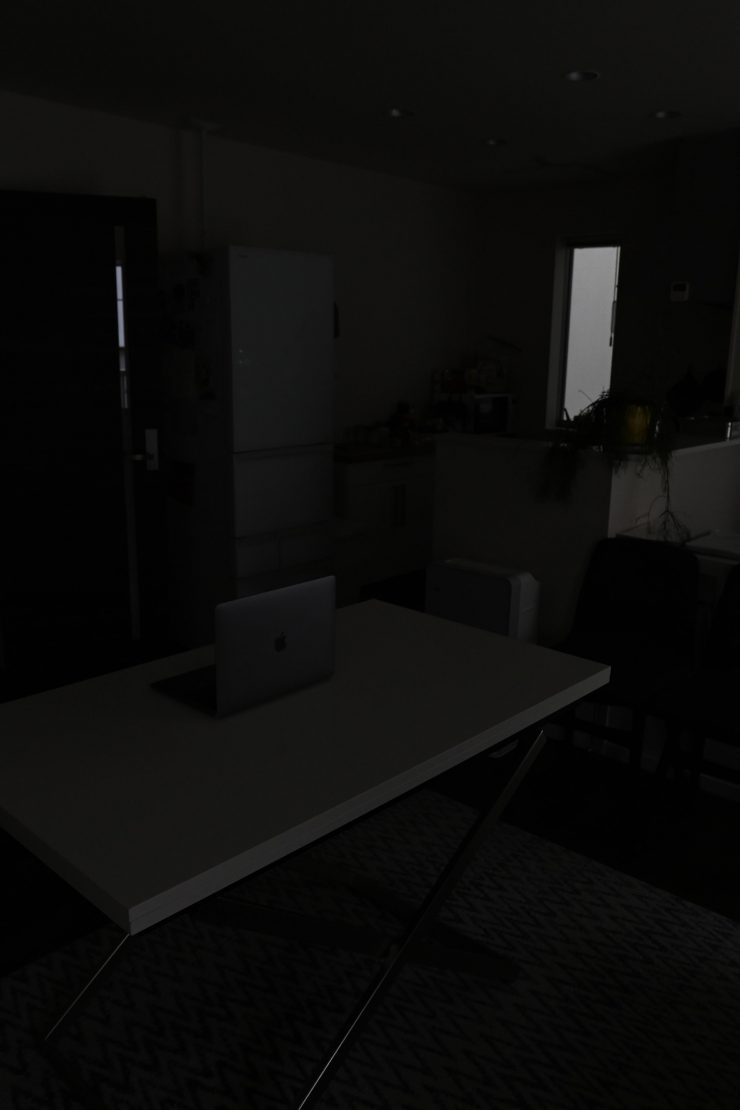
Light off
Above you can get a sense of how much output the light has. There are two photos with the exact same settings being used with the light on and the light off. The light was placed outside and punched through a sheer curtain.
The Forza 720B has a ton of output. It is always better to have more output than not enough. I would rather dim a light down than have to move it closer to a subject.
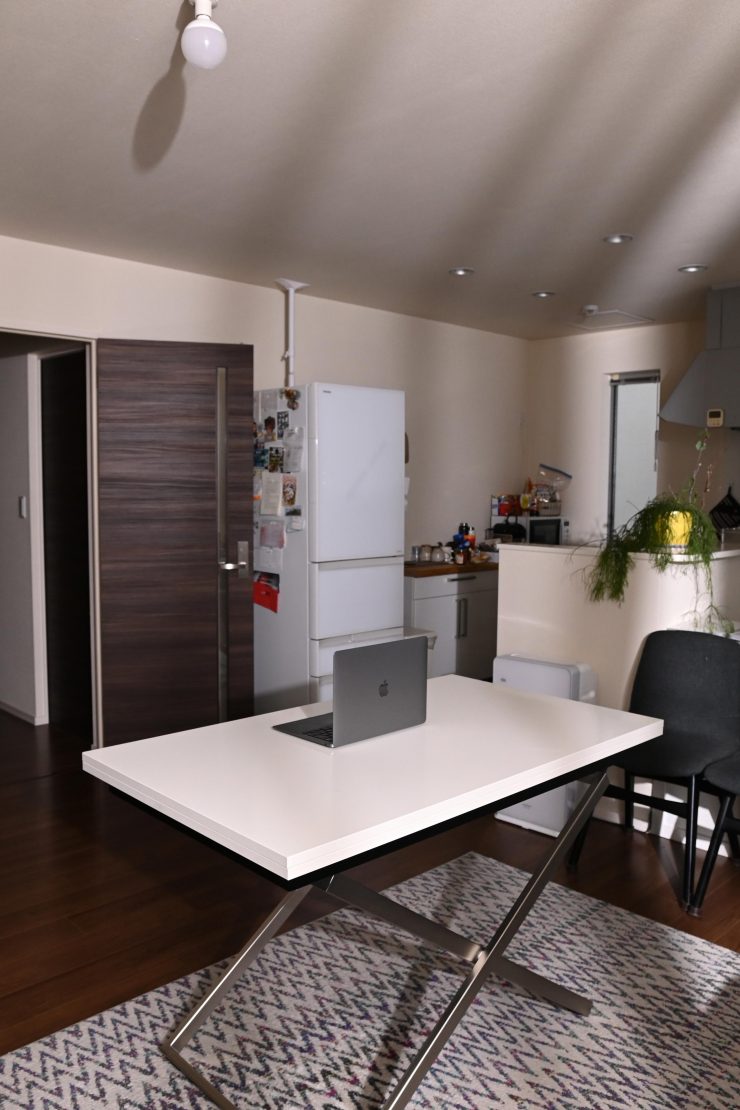
Above you can see more examples of the fixture being used to replicate a light source coming from outside.
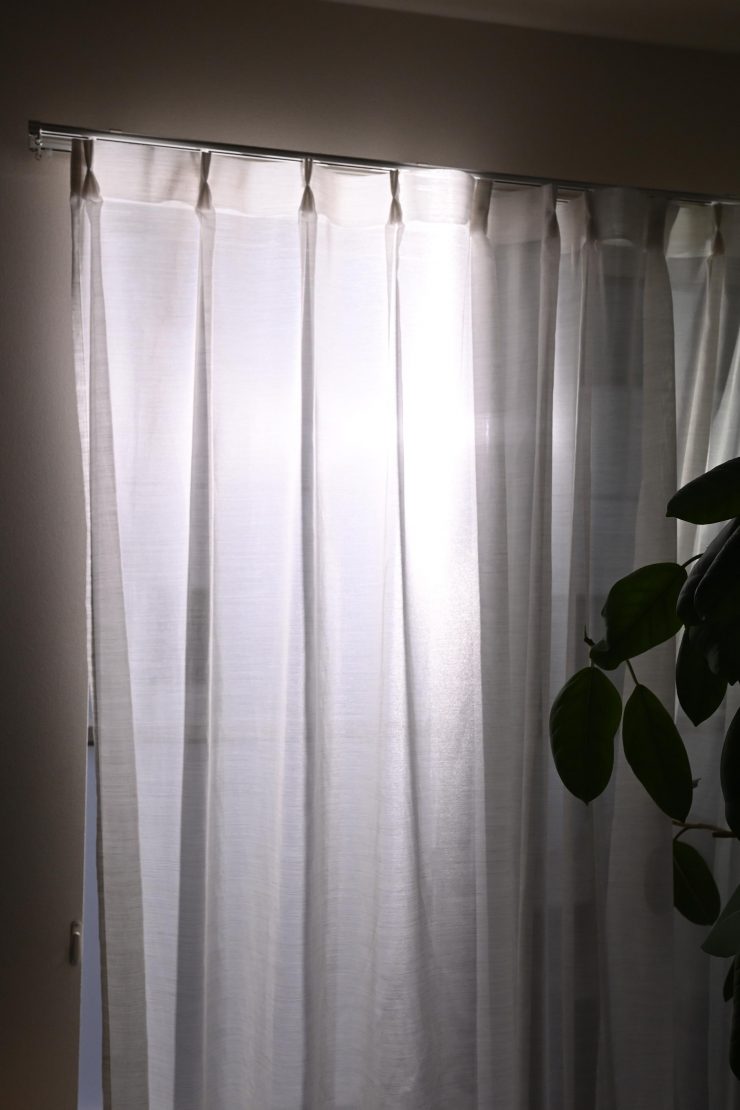
For these examples, the Forza 720B was using its Reflector and I was punching the light through a sheer curtain.
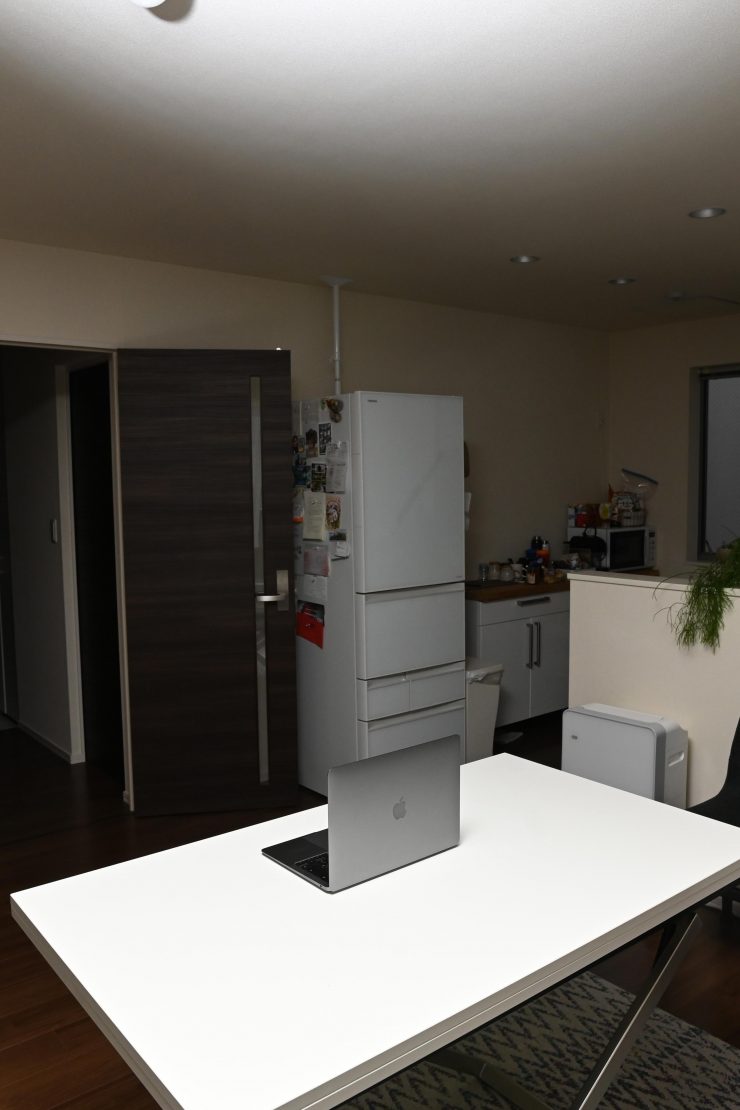
Above you can see an example of the light being punched directly into the ceiling.
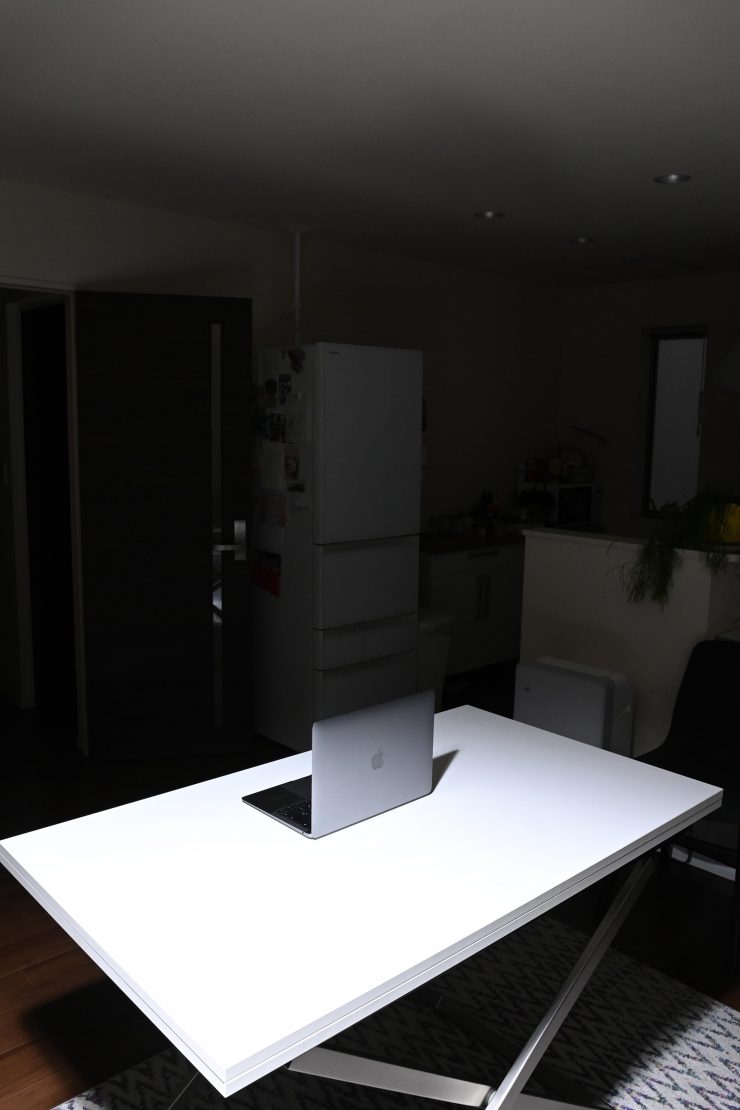
Above you can see examples of the light being aimed straight down and punched into the table.
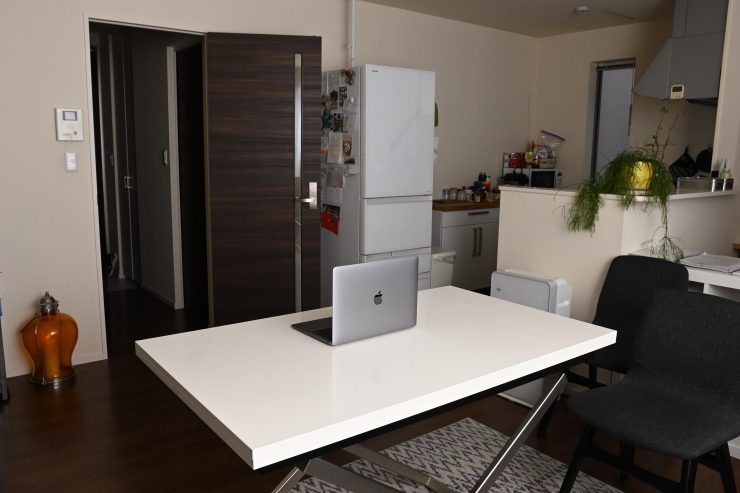
Above you can see an example of the light being punched indirectly into a wall.
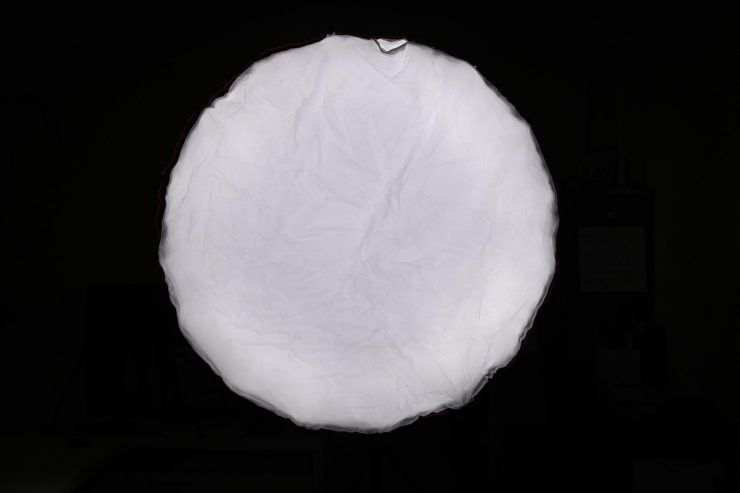

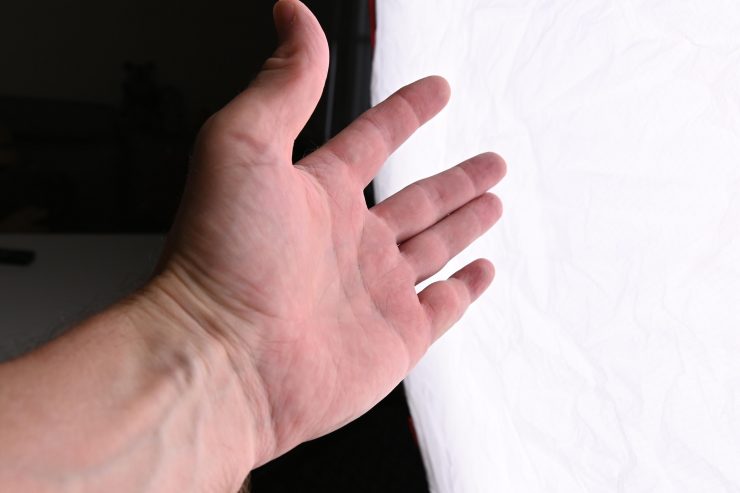
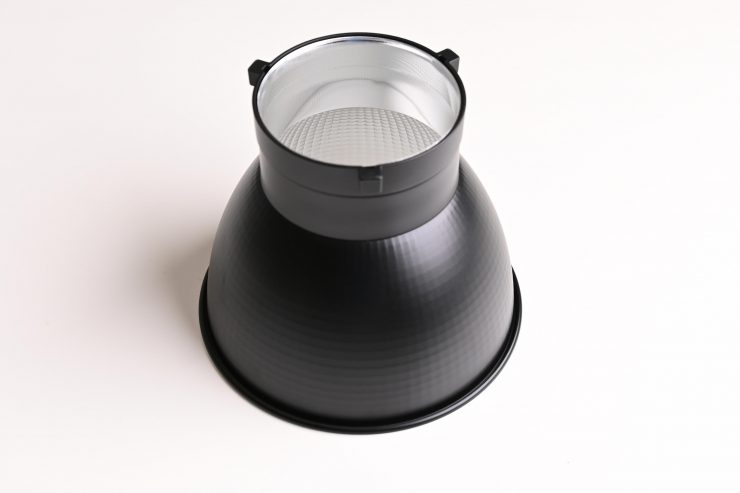
Shadows when using the light with a softbox 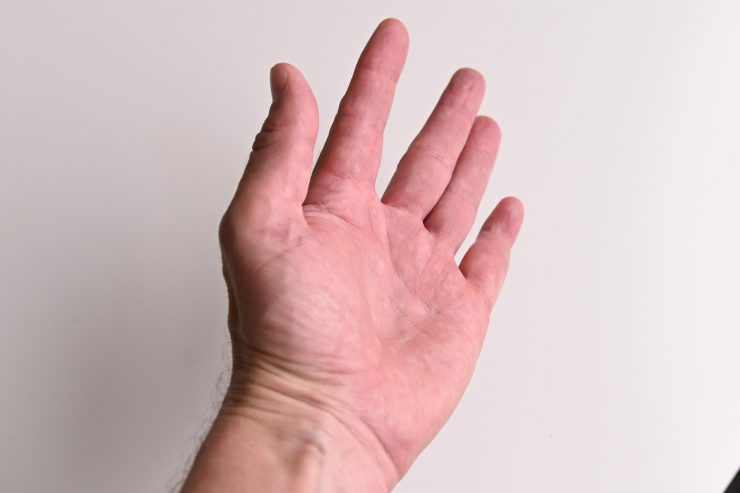
Shadows when using the light with a softbox 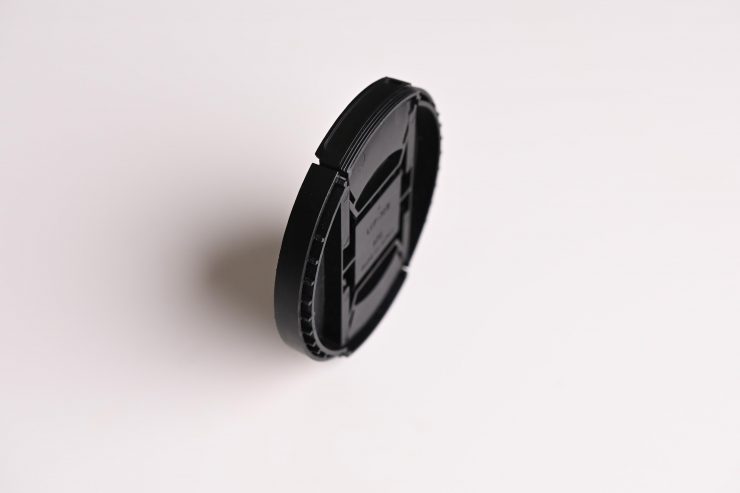
Shadows when using the light with a softbox
It is very easy to create a soft, flattering light source using the Forza 720B by using modifiers like a softbox. The light when used open face easily fills up a large-sized softbox without any issues. Because the light has so much output, even when it is heavily diffused you can still get a very bright source.
The light also works well if you use it with its reflectors and punch it into some polyboard or other reflective material. Again, because it has so much output, it is capable of producing a nice amount of brightness even when used indirectly.
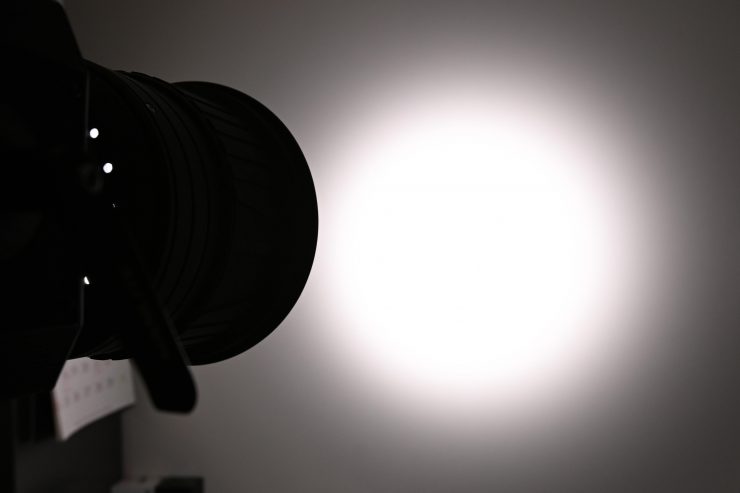
I also tried the Forza 720B with both a Prolycht Orion 300 FS 2x Fresnel Lens as well as the Aputure F10 Fresnel Attachment for LS 600d LED Light to see if they worked.
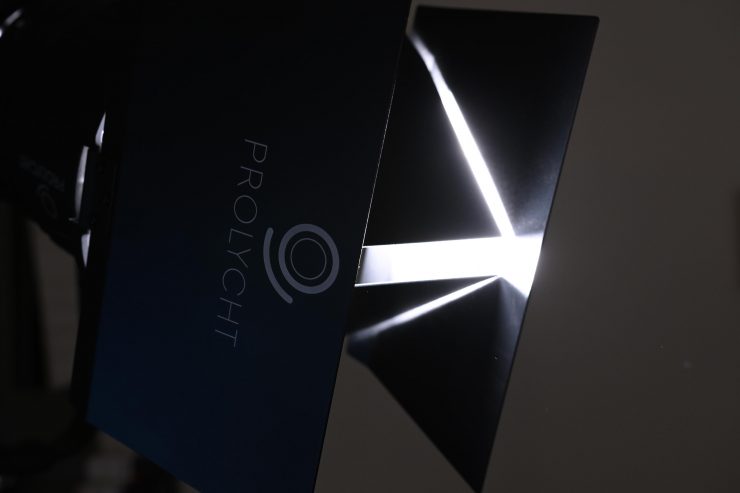
Even though Prolycht Orion 300 FS 2x Fresnel Lens worked reasonably well on the Forza 720B I don’t recommend you use it. The Fresnel got so hot after just a few minutes of being on the light it would burn your hand if you tried to touch it.
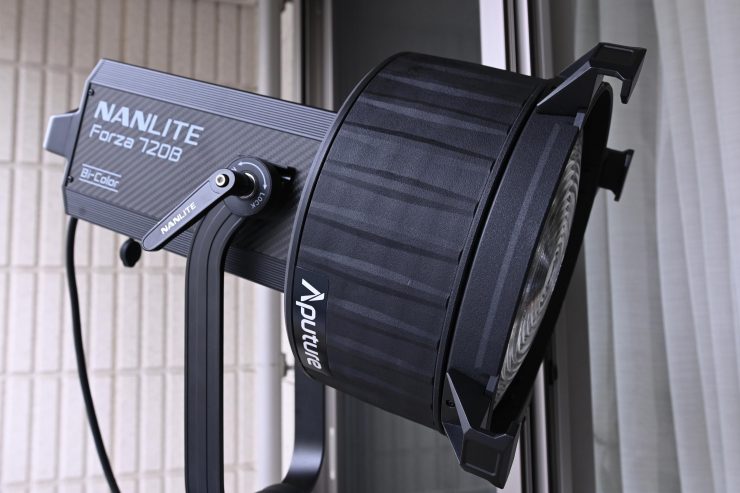
The Aputure F10 Fresnel Attachment for LS 600d LED Light provided much better results and it works well on the Forza 720B.
Who is the 720B aimed at?
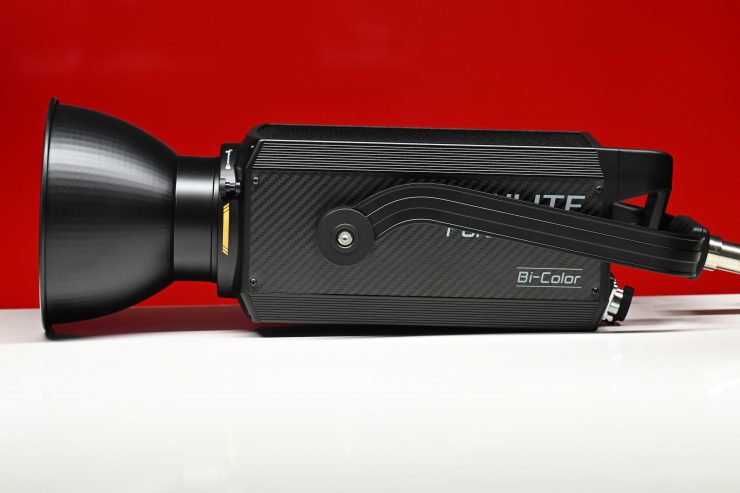
You could use this light for lots of different applications, but the light is certainly being aimed at professional users who want a good quality, high-powered, flexible COB fixture.
It is priced to appeal to professional owner-operators who are looking for a jack-of-all-trades lighting solution. The fixture has the ability to be a hard light source or a soft source and with a Bowens mount, you have the ability to run a plethora of affordable lighting modifiers. There is a reason that COB lights such as this have become very popular with shooters and that is because of their versatility.
The Nanite is likely to appeal to the same audience that is looking at the Aputure LS 600x Pro.
Price & Availability
The Nanlite Forza 720 retails for $1,649 USD and the Forza 720B retails for $1,849 USD.
Here is what you get with the Forza 720B:
- Nanlite Forza 720B Bi-Color LED Monolight
- Forza 720B Bi-Color LED Monolight Head
- Control Unit
- AC Power Cable (14.76′)
- Connecting Cable (16.4′)
- Quick-Release Clamp
- Reflector
- Protective COB Cap
- Carrying Bag
- Limited 2-Year Warranty, Extends to 3-Year with Online Registration
Below you can see how the price compares to the Aputure 600d and 600x:
| Price | |
| Nanlite Forza 720 | $1,649 USD |
| Aputure LS 600d Pro Light Storm | $1,890 USD |
| Aputure LS 600d | $1,390 USD |
| Nanlite Forza 720B | $1,849 USD |
| Aputure LS 600x Pro Light Storm | $1,990 USD |
As you can see the prices are fairly similar, with the Nanlite offerings undercutting their Aputure LS Pro counterparts by around $150 USD. Aputure did recently announce the more affordable Aputure LS 600d, but there is no Bi-color version of that light available.
Conclusion
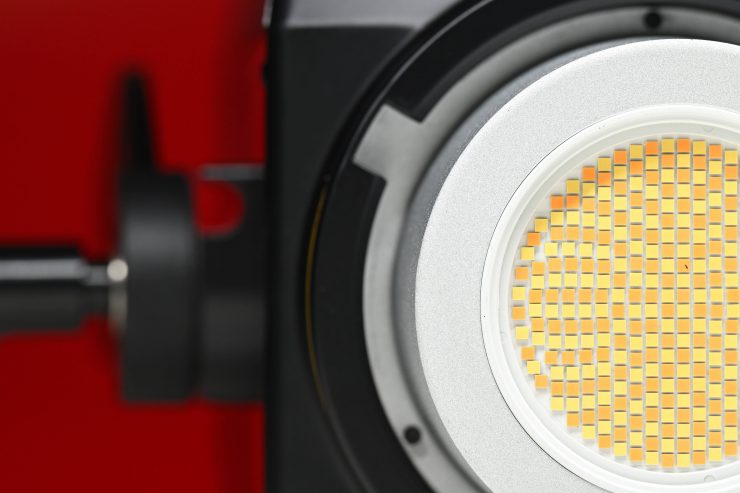
The Nanlite Forza 720B ticks a lot of boxes and it offers very good value for money. It has a good amount of output and produces a nice quality of light which is what you want from a fixture like this.
As the great Rasheed Wallace once said, “Ball don’t lie”. You may have opinions or misconceptions about lights made by certain companies, but the facts are this, the Nanlite Forza 720B is a very solid, well-made, color accurate fixture with a ton of output. It has better color rendering scores at 5600K than the Aputure LS 600x Pro, more output (but it does draw slightly more power), and it is slightly more affordable. These aren’t marketing claims, these are facts. I don’t have any horse in the race, nor do I have favoritism. Every light I review regardless of who it comes from or how much it costs gets the same in-depth treatment.
The interface and operating system are straightforward and easy to use, as is the app. By utilizing a Bowens Mount you can utilize a large array of lighting modifiers without having to spend a ton of money.
This is a solid workhorse meat and potatoes light with a nice side of gravy that has been designed to get the job done.
With a lot of modern LED lights, the quality of the LEDs being used is very similar, even across the price spectrum. What often separates the lights comes down to build quality, features, and usability.
It is a real pity that in our industry certain products get more attention than others solely because of marketing and hype that gets created around them. I have tested hundreds of lights over the last decade or so, and there are always lights that consumers don’t look twice at because they didn’t come from a cool brand.
The Nanlite Forza 720B is a good high-powered COB spotlight that really deserves a good hard look if you are in the market for a light like this.
Like what we do and want to support Newsshooter? Consider becoming a Patreon supporter and help us to continue being the best source of news and reviews for professional tools for the independent filmmaker.

